
A GUIDE TO ACCOUNTING FOR DEBT MODIFICATIONS
AND RESTRUCTURINGS
June 2023

A GUIDE TO ACCOUNTING
FOR DEBT MODIFICATIONS
AND RESTRUCTURINGS
June 2023

A GUIDE TO ACCOUNTING FOR DEBT MODIFICATIONS
AND RESTRUCTURINGS
is edition of A Guide to Accounting for Debt Modifications and Restructurings has been produced
by the National Professional Standards Group of RSM US LLP.
We would like to acknowledge the efforts of the contributors to the June 2023 edition of this publication:
• Brian Marshall, Partner
• RoAnna Pascher, Senior Director
We would also like to acknowledge the contributions of Patricia Baldowski, Partner, and Alpesh Shah, Senior Manager.
June 2023
e FASB material is copyrighted by the Financial Accounting Foundation, 801 Main Avenue, Norwalk, CT 06851,
and is used with permission.

i
JUNE 2023
TABLE OF CONTENTS
1 Introduction ..................................................................................................................... 1
1.1 Determining whether the same lender is involved before and after changes are made to the
debt .................................................................................................................................................... 3
1.2 Convertible debt ............................................................................................................................... 4
1.3 Effective interest method ................................................................................................................. 4
2 Relevant literature and general concepts ..................................................................... 6
2.1 Liability derecognition ..................................................................................................................... 6
2.1.1 Liability derecognition threshold ........................................................................................... 6
2.1.2 Continuing term loans with the same lender ........................................................................ 7
2.2 TDR accounting ................................................................................................................................ 7
2.2.1 Nature, scope and unit of account ....................................................................................... 7
2.2.2 Determining whether a TDR exists ...................................................................................... 9
2.2.3 Series of restructurings on same debt ............................................................................... 14
2.2.4 TDR accounting model ....................................................................................................... 14
2.2.5 Direct costs incurred with third parties in a TDR ................................................................ 23
2.2.6 Lender fees incurred in the restructuring ........................................................................... 24
2.2.7 Preexisting unamortized debt discount .............................................................................. 24
2.2.8 Classification considerations .............................................................................................. 24
2.2.9 Disclosures ......................................................................................................................... 25
2.3 Extinguishment and modification accounting models for term loans ...................................... 25
2.3.1 Scope ................................................................................................................................. 25
2.3.2 Which model applies? ........................................................................................................ 27
2.3.3 Extinguishment accounting model ..................................................................................... 36
2.3.4 Modification accounting model ........................................................................................... 38
2.3.5 Accounting for fees and costs incurred .............................................................................. 39
2.3.6 Fees between borrower and lender trigger accounting assessment ................................. 41
2.3.7 Loan participations and syndications ................................................................................. 42
2.3.8 Third-party intermediaries .................................................................................................. 42
2.3.9 Transactions between lenders ........................................................................................... 43
2.4 Modification of a line-of-credit arrangement ............................................................................... 43
2.4.1 Modifications of undrawn delayed-draw term loan commitments ........................................... 44
2.5 Changing from term loan to line-of-credit and vice versa .......................................................... 44
2.6 Debt disclosures ............................................................................................................................. 45
3 Examples ........................................................................................................................46
3.1 Liability derecognition threshold .................................................................................................. 46
3.2 TDR with modification of terms in which no gain is recognized ............................................... 47
3.3 TDR with modification of terms in which a gain is recognized ................................................. 50
3.4 TDR with transfer of assets and modification of terms .............................................................. 52
3.5 Changes to prepayable debt that result in modification accounting ........................................ 55
3.6 Changes to prepayable debt including incremental borrowings .............................................. 58
3.7 Changes to prepayable delayed-draw term loan (DDTL) ............................................................ 62
3.8 Changes to prepayable debt with partial repayment of principal ............................................. 65
3.9 Changes to debt that result in extinguishment accounting ....................................................... 69
3.10 Changes to prepayable loans in a syndication ........................................................................... 71

ii
JUNE 2023
3.11 Multiple changes to prepayable debt within a one-year period ................................................. 77
3.12 Multiple changes to prepayable debt with a prepayment fee based on a percentage of
principal within a one-year period ................................................................................................ 80
3.13 Line-of-credit modification with decrease in borrowing capacity ............................................. 84
3.14 Line-of-credit arrangement modification with increase in borrowing capacity ....................... 85
Appendix A: Acronyms, literature and technical accounting guide and whitepaper
references ..........................................................................................................87
Appendix B: Definitions .........................................................................................................89
Appendix C: U.S. GAAP vs. IFRS Comparison .....................................................................93
Appendix D: Summary of significant changes .....................................................................97

1
JUNE 2023
1 Introduction
Borrowers may seek to renegotiate the terms of existing loans because they are not able to meet current
loan covenants or cash flow requirements under their loans, or because they want to increase the amount
borrowed or obtain lower interest rates. Lenders may be willing to renegotiate the terms of existing loans
because they realize that it may be in their best interests to reconsider the terms of a loan instead of: (a)
losing the borrower to a competitor that is willing to provide a reduced interest rate because of an
improvement in the borrower’s credit quality or a reduction in market interest rates, (b) forcing the
borrower to find another lender or file for bankruptcy or (c) foreclosing on any collateralized assets. As a
result of the renegotiations, the borrower and lender may agree to modify or restructure an existing loan
or exchange one loan for another. The degree of change introduced by the modification, restructuring or
exchange (collectively referred to as changes) depends on any number of factors, first and foremost
being the financial condition and prospects of the borrower.
Naturally, there are accounting implications when the borrower and lender agree to modify or restructure
an existing loan or exchange one loan for another. The accounting implications differ depending on
whether the borrower’s or lender’s accounting is being considered. This guide deals solely with the
borrower’s accounting for changes made to its loans. Depending on the facts and circumstances, different
accounting outcomes could result for the borrower. For example, the borrower may be required to
recognize a gain or loss in the period of the changes, or the borrower may be required to recognize the
effects of the changes in future periods through an adjustment to the effective interest rate. A thorough
analysis of the borrower’s facts and circumstances and the relevant authoritative accounting literature is
required to ultimately determine how the borrower should account for changes to its loans. In some
circumstances, a significant amount of professional judgment must be exercised in making this
determination.
To identify the appropriate accounting model to apply to changes to a loan, the borrower must first
determine whether it has met the threshold to remove a liability from its books (i.e., derecognize the
liability and apply the extinguishment accounting model). Typically, this liability derecognition threshold is
met when the changes involve an old loan being paid off with proceeds from a new loan with a new
lender (i.e., an unrelated party that was not considered a lender with respect to the old loan), provided
there is no continuing debt with the old lender. In contrast, this threshold is not met just because the
borrower and the same lender exchange cash to satisfy an existing loan and issue a new loan. For
additional information about determining whether the same lender is involved in the loan before and after
changes are made, see Section 1.1. For additional information about determining whether the liability
derecognition threshold has been met, see Section 2.1.
If the liability derecognition threshold has not been met, then the borrower must determine whether it
should apply the accounting model for a troubled debt restructuring (TDR), which is discussed in detail in
Section 2.2. In some cases, a TDR results from the full settlement of debt through the transfer of cash,
noncash assets or equity (i.e., the debt is derecognized in the TDR). While the net effect on the income
statement is the same regardless of whether the extinguishment or TDR accounting model is applied in
these cases, there are additional accounting and disclosure requirements for a TDR. As such,
consideration should be given to whether the derecognition of debt meets the conditions present in a
TDR.
If the liability derecognition threshold has not been met and the TDR accounting model does not apply,
then for term loans the borrower must determine whether it should apply the accounting model for a debt
modification or extinguishment, discussed in detail in Section 2.3. The accounting for changes to a line-of-
credit arrangement (which also encompasses a revolving debt or revolver arrangement when used
throughout this guide) that is not a TDR is discussed in detail in Section 2.4. Changes to a delayed-draw
term loan (DDTL) that is not a TDR will either be accounted for under the term loan or the line-of-credit
accounting model as discussed in detail in Section 2.3.1.2.

2
JUNE 2023
The following flowchart illustrates these considerations and the order in which they should occur:
Changes are made to the terms of the borrower s debt that affect the debt s cash
flows
Apply the extinguishment accounting
model (see Section 2.3.3)
Apply the modification accounting
model (see Section 2.3.4)
Is the new or changed debt substantially different from the old debt (see
Section 2.3.2)?
?
No
Yes
Did any of the following happen in conjunction with the changes being
made to the debt (see Sections 1.1 and 2.1)?
• Borrower has been legally released as the primary obligor either
judicially or by the lender and there is no other continuing debt with the
same lender.
• Borrower repaid the debt (and has been relieved of the related
obligation) using proceeds from debt with a new lender and there is no
other continuing debt with the old lender.
• Borrower repaid the debt (and has been relieved of the related
obligation) without entering into new debt with the old lender and there
is no other continuing debt with the old lender.
?
The liability derecognition
threshold has been met (see
Section 2.1.1).
Borrower applies extinguishment
accounting and considers whether
the accounting and disclosure
requirements applicable to a TDR
apply (see Sections 2.1.1 and
2.2.9).
Yes
No
The liability derecognition threshold is not met because there continues to be debt
with the old lender after the changes to the borrower s debt.
Borrower next considers whether the changes to its debt should be accounted for as
a TDR (see Section 2.2), and if not, whether the changes should be accounted for as
an extinguishment or modification (see Section 2.3).
Is the borrower
experiencing financial
difficulties (see Section
2.2.2.1)?
?
Has the lender granted a
concession (see Section
2.2.2.2)?
?
Apply the TDR accounting model
(see Section 2.2.4)
Yes Yes
Is the old debt a term loan or a line-of-credit arrangement (see Section 2.5)?
?
Apply the borrowing capacity model
(see Section 2.4)
Term debt
Line-of-credit
arrangement
No No
Note 1: Many of the terms used in this flowchart (e.g., financial difficulties, concessions, substantially
different) have specific meanings and related implementation guidance. This guide explains and
illustrates those meanings and guidance.
Note 2: As noted earlier in this section, changes to a DDTL that is not a TDR will either be accounted
for under the term loan or the line-of-credit accounting model.

3
JUNE 2023
The conclusions reached by a borrower in determining the appropriate accounting for changes made to a
loan could significantly affect its financial statements. Depending on the facts and circumstances, one or
more of the following may be required of the borrower:
• Adjust the carrying amount of the loan
• Derecognize the loan and recognize a new loan
• Change the amount of interest expense recognized in the income statement on a going-forward
basis or recognize a gain or loss in the income statement in the period the changes were made to
the loan
• Expense some of the costs incurred to execute the changes and (or) defer and amortize other
costs
The borrower must also consider classification questions related to the old loan and the new or changed
loan. Classification of debt is discussed in detail in our debt classification whitepaper.
As mentioned earlier, this guide deals solely with the borrower’s accounting for changes to its loans.
Guidance applicable to the lender, which differs, is discussed in Chapter 5 of our financial assets guide.
The relevant accounting literature on accounting for the changes made to loans by the borrower
(including term loans and line-of-credit arrangements) is primarily included in the following sections of the
Financial Accounting Standards Board’s (FASB) Accounting Standards Codification (ASC):
• ASC 405-20, Liabilities – Extinguishments of Liabilities
• ASC 470-50, Debt – Modifications and Extinguishments
• ASC 470-60, Debt – Troubled Debt Restructurings by Debtors
The remainder of Chapter 1, Introduction, discusses pervasive issues relevant to the accounting for
changes a borrower makes to its debt. The relevant guidance in ASC 405-20, 470-50 and 470-60 is
explained in Chapter 2, Relevant literature and general concepts. Several detailed examples of how to
apply this guidance are included in Chapter 3, Examples.
1.1 Determining whether the same lender is involved before and after changes are
made to the debt
Commentary: The two key parties to a loan are the borrower and its lender. Reading and understanding
the terms of the agreements that underlie a loan and any related changes to the loan should clearly
identify these and other relevant parties. Identifying the relevant parties factors into determining the
accounting model that should be applied in a particular situation. For example, if an old term loan is paid
off with proceeds from a new term loan with a new lender (i.e., an unrelated party that was not considered
a lender with respect to the old loan), then there are two separate accounting events for the borrower
(provided there are no other term loans with the old lender):
a) derecognition of the old term loan (which would be accounted for as an extinguishment) and
b) entering into the new term loan with a new lender (which would be accounted for as any other
issuance of new debt).
On the other hand, if the old term loan is paid off with proceeds from a new term loan that is with the
same lender, then consideration must be given to whether the borrower should account for the exchange
of the term loans using the TDR, modification or extinguishment accounting model. (Further discussion of
identifying the unit of account in a TDR or modification or extinguishment is included in Section 2.2.1.1
and Section 2.3.1.1.) If the loan in this example was a line-of-credit, and the old line-of-credit was paid off
with the proceeds from a new line-of-credit with the same lender, then consideration must be given to

4
JUNE 2023
whether the borrower should account for the exchange of the lines-of-credit using the TDR or borrowing
capacity accounting model.
Typically, determining whether the same lender is involved in a loan before and after any changes are
made to the loan is a straightforward exercise involving looking at the name of the lender and seeing that
the name of the lender is the exact same before and after the changes. However, in other cases, it may
not be as straightforward. For example, if an affiliate of the old lender is the new lender, or if the old
lender and new lender are two subsidiaries or two divisions within the same consolidated entity, making
the determination as to whether the same lender is involved in a loan before and after any changes are
made to it requires additional analysis. To determine whether the same lender is involved in a loan before
and after any changes are made to the loan in these less-than-straightforward situations, such as when
there are multiple funds in a private equity group acting as lenders, requires careful consideration of the
relevant facts and circumstances, including but not limited to addressing the following questions:
• Are the new and old lenders separate legal entities?
• Are the new and old lenders not included in the same consolidated entity?
• Are management of the new and old lenders responsible as fiduciaries to manage the lenders
solely for the benefit of the owners and equity holders of each individual lender?
If the answer to each of these questions is yes, there are indications that the old and new lenders
operated separately and should not be considered the same lender for accounting purposes.
Alternatively, when the new and old lenders are part of the same consolidated group and use the same
representative to negotiate the debt modification with the borrower, there are indications that the old and
new lenders operated together and should be considered the same lender for accounting purposes.
Additional information about identifying the lender(s) in loan participations and loan syndications, as well
as identifying the roles of the parties involved, including third-party intermediaries, is provided in Section
2.3.7 and Section 2.3.8, respectively.
1.2 Convertible debt
This guide covers the guidance in ASC 470-50 related to the modification or exchange of debt with an
embedded conversion option. Chapters 2 and 3 of our debt and equity guide address the following related
to convertible debt:
• conversions in accordance with the terms of the debt,
• induced conversions, and
• modifications and extinguishments when the conversion feature was given separate recognition
as a derivative, a cash conversion feature or a beneficial conversion feature.
1.3 Effective interest method
Relevant guidance: ASC 835-30-35-1 to 35-4
U.S. GAAP requires interest expense on debt to be recognized using the effective interest method. Under
this method, any debt discount (which includes lender fees and third-party costs related to the original
issuance of the debt) is amortized into interest expense using a constant interest rate over the life of the
debt, which is known as the effective interest method. U.S. GAAP permits the use of other methods of
amortization if the results are not materially different than those resulting from the effective interest
method.
In practice, some borrowers amortize the debt discount on a straight-line basis, which is only appropriate
if doing so generates results that are not materially different from the results using the effective interest
method. For purposes of the discussion in this guide, it is assumed that the borrower is recognizing

5
JUNE 2023
interest expense using the effective interest method and that the carrying amount of the debt reflects use
of that method to amortize the debt discount.
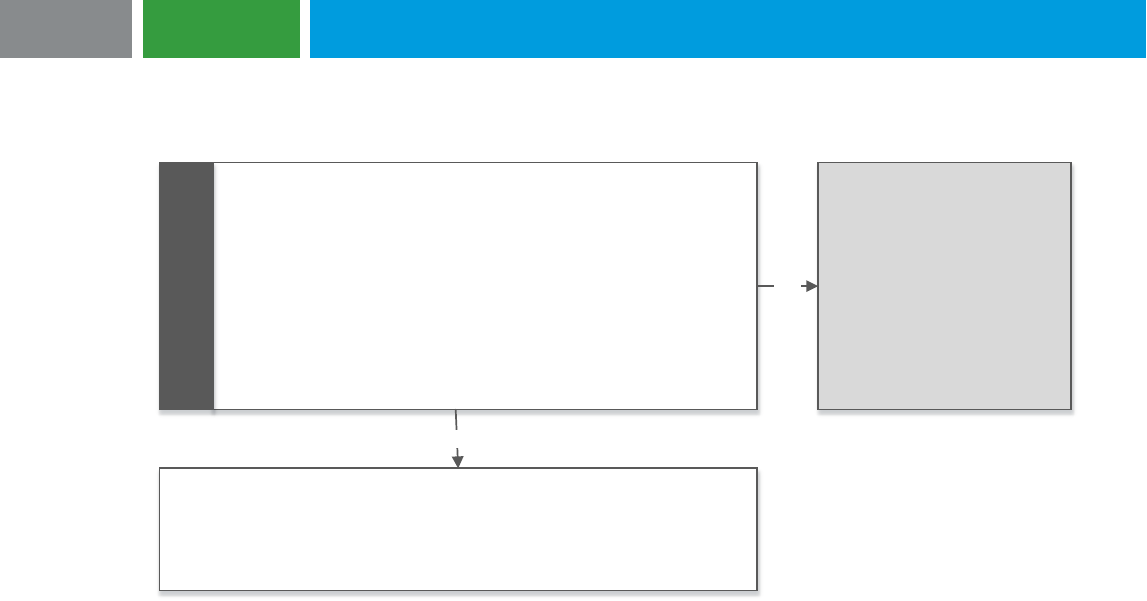
6
JUNE 2023
2 Relevant literature and general concepts
2.1 Liability derecognition
Did any of the following happen in conjunction with the changes being
made to the debt (see Sections 1.1 and 2.1)?
• Borrower has been legally released as the primary obligor either
judicially or by the lender and there is no other continuing debt with the
same lender.
• Borrower repaid the debt (and has been relieved of the related
obligation) using proceeds from debt with a new lender and there is no
other continuing debt with the old lender.
• Borrower repaid the debt (and has been relieved of the related
obligation) without entering into new debt with the old lender and there
is no other continuing debt with the old lender.
?
The liability derecognition
threshold has been met (see
Section 2.1.1).
Borrower applies extinguishment
accounting and considers whether
the accounting and disclosure
requirements applicable to a TDR
apply (see Sections 2.1.1 and
2.2.9).
Yes
No
The liability derecognition threshold is not met because there continues to be debt
with the old lender after the changes to Borrower s debt.
Borrower next considers whether the changes to its debt should be accounted for as
a TDR (see Section 2.2), and if not, whether the changes should be accounted for as
an extinguishment or modification (see Section 2.3).
2.1.1 Liability derecognition threshold
Relevant guidance: ASC 405-20-40-1 to 40-2 and ASC 470-50-15-4
Extinguishment is the derecognition of a liability. Derecognizing a liability simply means to take the liability
off, or remove the liability from, the borrower’s books. The liability derecognition threshold is met only if:
a) The borrower pays the lender and is relieved of its obligation, or
b) The borrower is legally released as the primary obligor.
Payment to a lender may occur upon the delivery of cash, other financial assets, or goods or services.
Payment may also occur if the borrower reacquires its outstanding debt securities and cancels them or
holds them as treasury bonds. Legal release as the primary obligor may be granted by the lender or may
occur judicially. If the liability derecognition threshold has been met, then the borrower should apply the
extinguishment accounting model (see Section 2.3.3). Refer to the commentary later in this section for
discussion about considering whether the extinguishment resulted from a TDR.
Questions arise regarding whether the following circumstances constitute an extinguishment: (a) the
borrower is legally released by the lender as the primary obligor, (b) a third party agrees to assume the
obligation and (c) the borrower agrees to become secondarily liable for the obligation. While the
occurrence of all these circumstances extinguishes the borrower’s original obligation, it also creates a
new obligation. This new obligation is a guarantee and must be accounted for as such (i.e., initially
recognized and measured at fair value in accordance with ASC 460-10-30-2).
Commentary: As discussed further in Section 2.2.4 some TDRs may result in debt being fully settled
either through the transfer of cash, noncash assets, equity or a combination thereof. For these TDRs, the
liability derecognition threshold has been met. While the net effect on the income statement is the same
regardless of whether the extinguishment accounting model or TDR accounting model is applied in these
situations, there are additional accounting (related to settlement of the debt by transferring noncash
assets or equity [see Section 2.2.4.1 and Section 2.2.4.2, respectively]) and disclosure requirements for a

7
JUNE 2023
TDR. As such, when the changes to debt meet the liability derecognition threshold, consideration should
also be given to whether those changes meet the definition of a TDR.
If the borrower and lender agree to change the terms of debt to allow the borrower to settle the debt by
transferring equity-linked instruments to the lender, the borrower must determine whether those
instruments should be classified as equity or a liability for accounting purposes (see our debt and equity
guide). When the equity-linked instruments should be classified as equity, the discussion in the preceding
paragraph applies. However, when the equity-linked instruments should be classified as a liability, the
borrower has exchanged debt for a different liability with the same lender and additional considerations
apply (see Section 2.1.2).
See Example 3.1 for application of this guidance.
2.1.2 Continuing term loans with the same lender
Commentary: There may be continuing term loans with the same lender either because the old loan was
modified or exchanged with the same lender, or because there are other term loans with the same lender.
(See Section 1.1 for discussion regarding whether two lenders should be considered the same lender for
accounting purposes.) When there are continuing term loans with the same lender, the borrower has not
met the substance of the liability derecognition threshold and should next consider whether the changes
made to the borrower’s loans should be accounted for as a TDR. In other words, the mere fact that the
borrower and lender concurrently exchange cash to satisfy an existing term loan (cash from borrower to
lender) and issue a new term loan (cash from the same lender to borrower) should not lead the borrower
to automatically conclude that the liability derecognition threshold has been met and the extinguishment
accounting model should be applied. The borrower may need to account for this exchange of cash and
term loans using the TDR accounting model for situations in which there has been a change to the loan’s
terms (with or without partial settlement of that debt) or the modification accounting model instead of the
extinguishment accounting model. In addition, when the borrower has more than one term loan with the
same lender and settles one or more (but less than all) of those term loans, the borrower may not have
met the substance of the liability derecognition threshold (see Section 2.2.1.1).
Further, when a borrower has a term loan with multiple lenders (e.g., a syndicated loan), the borrower
could meet the threshold for liability derecognition with a lender leaving the syndicate but not with the
remaining lenders (see Section 2.3.7).
2.2 TDR accounting
Is the borrower
experiencing financial
difficulties (see Section
2.2.2.1)?
?
Has the lender granted a
concession (see Section
2.2.2.2)?
?
Apply the TDR accounting model
(see Section 2.2.4)
Yes Yes
2.2.1 Nature, scope and unit of account
Relevant guidance: ASC 470-60-10-1 to 10-2, ASC 470-60-15-4 to 15-7, ASC 470-60-15-9 to 15-11
and ASC 470-60-55-1 to 55-3
As noted in Appendix B, the Master Glossary of the Codification defines a TDR as follows: “A
restructuring of a debt constitutes a troubled debt restructuring if the creditor for economic or legal
reasons related to the debtor’s financial difficulties grants a concession to the debtor that it would not
otherwise consider.” The concession granted by the lender will affect both the borrower’s and lender’s
cash flows related to the debt. The cash flows may be affected by changing: (a) the amount or timing of
cash flows paid by the borrower, (b) how much of the cash flows will be designated as interest and (c)
how much of the cash flows will be designated as principal, which will affect the lender’s total return and
its effective interest rate as well as the borrower’s total cost and effective interest rate.

8
JUNE 2023
A TDR may involve debt, bonds, notes or accounts payable relating to purchasing goods or services on
credit. It is not limited solely to loans or debt.
For liabilities other than bonds payable, the evaluation of whether a TDR has occurred should take place
on a lender-by-lender basis, even in cases where the restructuring of a group of similar liabilities is
negotiated at the same time across a number of lenders (see Section 2.2.1.1 regarding situations in
which there are multiple term loans with the same lender). For bonds payable that are part of a TDR, the
bond constitutes one payable (and unit of account) even though there are many bondholders.
A lender’s incentive in agreeing to a TDR rests on the theory that it is better to get something instead of
nothing. In other words, if the only way a lender will get any payments from a borrower is if they agree to
a concession, then they may be incented to agree to the TDR to get at least some of the amount owed to
them. Of course, the lender is only motivated to grant a concession that protects as much of its
investment as possible. Any of the following could take place in a TDR:
• The lender agrees to settle the debt for less cash than the outstanding balance of the debt.
• The lender agrees to settle the debt by accepting assets (other than cash) whose fair value is
less than the carrying amount of the debt. The assets could be accounts receivable from routine
sales made by the borrower, real estate or other assets. These assets may come to the lender as
a result of foreclosure, repossession or other transfers.
• The lender agrees to settle the debt by accepting a grant of equity securities issued by the
borrower, provided the grant is not occurring in accordance with preexisting terms that would
have permitted conversion of the debt to an equity interest.
• The borrower and lender agree to modify the terms of the debt and not transfer any assets or
equity. The cash requirements under the debt may be reduced as a result of one or more of the
following types of changes: (a) a reduction in the stated interest rate on the debt, (b) an extension
of the maturity dates when the stated interest rate is lower than the market rate for comparable
new debt, (c) a reduction in the face amount of the debt or, (d) a reduction in accrued interest
owed on the debt.
• The borrower and lender agree to extend the maturity date of the debt and defer required interest
payments until that date.
• The borrower and lender agree to: (a) the partial settlement of the debt through the transfer of
noncash assets or equity and (b) the modification of terms for the debt that remains.
The borrower and lender may initiate the discussions that lead to a TDR or those discussions may be
forced by law or by a court. As such, a TDR may exist for accounting purposes if it was carried out under
various provisions of the Federal Bankruptcy Act (e.g., reorganization) or other related federal statutes.
When the borrower in a TDR is undergoing bankruptcy proceedings, a quasi-reorganization or corporate
readjustment at the same time as the TDR, it is important to understand whether such activities will result
in a general restatement of the borrower’s liabilities. If so, a TDR does not exist for accounting purposes.
Our bankruptcy whitepaper includes an overview of bankruptcy proceedings under Chapter 11, and
guidance and examples related to financial reporting while in Chapter 11 bankruptcy and fresh start
accounting upon emergence from bankruptcy.
The following situations are not in the scope of the TDR guidance:
• Lease modifications under ASC 842. Refer to our lessee guide for information about the
accounting for lease modifications.
• Changes in employment-related agreements (e.g., pension plans, deferred compensation
contracts)

9
JUNE 2023
• Failure by the borrower to pay its trade accounts according to their terms without reaching an
agreement with its creditors to change the terms
• Deferral of legal action by the lender to collect past due amounts of interest and principal from the
borrower without reaching an agreement with the borrower
• Application of bankruptcy accounting by the borrower and a general restatement of its liabilities
(see our bankruptcy whitepaper)
2.2.1.1 Unit of account when there are multiple term loans with the same lender
Commentary: When there are multiple term loans with the same lender (see Section 1.1) and changes
are made to one or more of those loans, we believe the changes should be evaluated for TDR purposes
as if they were a single term loan with the lender. Not taking this approach could result in the borrower
accounting for changes to one term loan as a TDR (and potentially recognizing a gain) when such
changes might not be considered a TDR (or not result in gain recognition under the TDR accounting
model) if those changes were evaluated in the context of all the term loans with that specific lender.
2.2.2 Determining whether a TDR exists
Relevant guidance: ASC 470-60-15-13 and ASC 470-60-55-4 to 55-5
Determining whether the accounting for a TDR applies in a particular situation is a matter of professional
judgment. An analysis of all the facts and circumstances must be performed and no one fact or
circumstance should itself be considered determinative in the face of a preponderance of contrary
evidence. The accounting literature provides guidelines that should be used in this analysis. These
guidelines focus on the definition of a TDR (see Section 2.2.1). Based on that definition, the following two
questions must be answered to determine whether the accounting model for a TDR applies in a particular
situation:
1. Is the borrower experiencing financial difficulties? (see Section 2.2.2.1)
2. Is the lender granting a concession? (see Section 2.2.2.2)
If the answer to both questions is yes, then the changes to the debt should be accounted for as a TDR. If
the answer to either of these questions is no, then the changes to the debt should not be treated as a
TDR for accounting purposes. In the latter situation, the borrower must determine whether the
modification or extinguishment accounting model is appropriate (see Section 2.3).
For efficiency purposes, the borrower should first evaluate the question above that is easiest to answer,
because a “no” response to either question means that the changes to the debt should not be treated as
a TDR by the borrower for accounting purposes. We believe that for most borrowers, the question of
whether the borrower is experiencing financial difficulties is easiest to answer and should be answered
first. Thus, a borrower’s conclusion that they are not experiencing financial difficulties would obviate the
need to determine whether the lender is granting a concession.
2.2.2.1 Is the borrower experiencing financial difficulties?
Relevant guidance: ASC 470-60-15-8, ASC 470-60-55-4 and ASC 470-60-55-7 to 55-8
The following flowchart captures how a borrower should assess whether it is experiencing financial
difficulties as that term is used in ASC 470-60:
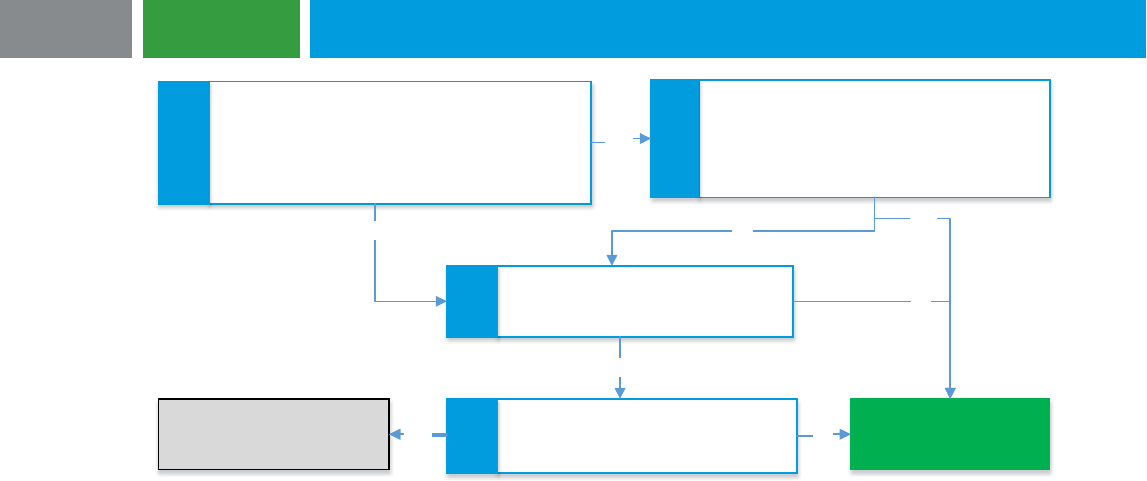
10
JUNE 2023
Has the lender agreed to restructure debt only to
reflect: (a) decreases in current market interest rates
at which the borrower could obtain funds or (b)
improvements in the borrower s creditworthiness
since original issuance of the loan?
?
Has the borrower been servicing the debt and
can it obtain debt from other lenders at market
rates offered on comparable debt to nontroubled
borrowers?
?
Has the borrower s creditworthiness
deteriorated? ?
Does an in-depth qualitative analysis
indicate that the borrower is experiencing
financial difficulties?
?
Financial difficulties exist
No financial difficulties,
therefore no TDR
No
Yes
Yes
Yes
No
No
No
Yes
The top two questions in the flowchart are focused on why the debt was changed. So, if the debt was
changed just to reflect decreases in current market interest rates at which the borrower could obtain funds
or improvements in the borrower’s creditworthiness since the original issuance of the debt, and the
borrower has been servicing the debt and can obtain debt from other lenders at market rates offered on
comparable debt to nontroubled borrowers, there is determinative evidence that the changes to the debt
were not made because the borrower was experiencing financial difficulties. When these are not the
reasons the debt was changed, further analysis is required to determine whether the borrower is
experiencing financial difficulties. This further analysis involves the borrower determining whether there
has been a deterioration in its creditworthiness since it originally issued the debt. For purposes of
assessing whether the borrower’s creditworthiness has deteriorated:
• If the borrower’s credit rating changes but remains an investment-grade credit rating (e.g.,
Standard & Poor’s credit rating on the borrower drops from an A to a BBB), then its
creditworthiness has not deteriorated.
• If the borrower’s credit rating declines from investment grade to noninvestment grade (e.g.,
Standard & Poor’s credit rating on the borrower drops from a BBB to a BB), then its
creditworthiness has deteriorated.
In many cases, a borrower’s creditworthiness has not been evaluated by a nationally recognized rating
agency. This is particularly true of many privately held companies. Assessing whether a borrower’s
creditworthiness has deteriorated in these cases requires the consideration of other factors in the context
of the borrower’s specific facts and circumstances. Examples of other questions that should be
considered in determining whether the borrower’s creditworthiness has deteriorated when the borrower’s
credit has not been evaluated by a nationally recognized rating agency include the following:
• If the borrower’s debt is collateralized, has there been a significant decrease in the value of that
collateral?
• If the borrower has a guarantee issued by a related party or third party (or other credit
enhancement) on its debt, has there been a significant decrease in the value of that guarantee or
other credit enhancement? For example, if the borrower has a guarantee on its debt from a third
party, has there been a decline in the financial standing of the third party that has led to a
significant decrease in the value of the guarantee?
• Is the borrower part of an industry whose sector risk has deteriorated?

11
JUNE 2023
• Is the borrower unable to obtain new debt at reasonable terms?
• Is the borrower unable to meet the debt covenants in its existing loan agreements?
• Is the borrower experiencing liquidity issues? For example, has its working capital ratio
worsened?
• Has there been a general decline in the borrower’s financial performance? For example, has the
borrower recently experienced recurring net losses?
Answering yes to any of these questions is an indicator that the borrower’s creditworthiness has
deteriorated. The final assessment as to whether the borrower’s creditworthiness has deteriorated should
take into consideration the responses to all of these questions, as well as other relevant facts and
circumstances specific to the borrower.
If the borrower’s creditworthiness has not deteriorated, then the borrower is not experiencing financial
difficulties. Conversely, if the borrower’s creditworthiness has deteriorated, then additional factors must
be considered. Answering yes to any of the following questions is an indicator that the borrower is
experiencing financial difficulties:
• Is the borrower currently in default on any of its debt?
• Has the borrower declared bankruptcy or is the borrower in the process of declaring bankruptcy?
• Is there doubt about the borrower’s ability to continue as a going concern?
• Have any of the borrower’s securities been delisted from an exchange?
• Are any of the borrower’s securities in the process of being delisted from an exchange?
• Does the threat exist for any of the borrower’s securities to be delisted from an exchange?
• Are the borrower’s projected cash flows (based on current business capabilities) insufficient to
cover payments required on the debt through maturity?
• Is the borrower unable to obtain debt from other lenders in which the effective interest rate
charged by the lender is equal to the current market interest rate charged on comparable debt
issued to a nontroubled borrower?
The final assessment as to whether the borrower is experiencing financial difficulties should take into
consideration the responses to all of these questions, as well as other relevant facts and circumstances
specific to the borrower. Refer also to Section 2.2.2.3, which discusses the significance of certain factors
to the overall analysis as to whether a TDR exists.
From a practical perspective, when a borrower’s debt is not formally rated by a nationally recognized
rating agency and there is not determinative evidence that the borrower is not experiencing financial
difficulties, the borrower may perform the qualitative analyses related to whether there has been a
deterioration in the borrower’s creditworthiness and whether the borrower is experiencing financial
difficulties at the same time given the interrelated nature of the analyses. Refer also to Section 2.2.2.3,
which discusses the significance of certain factors to the overall analysis as to whether a TDR exists.
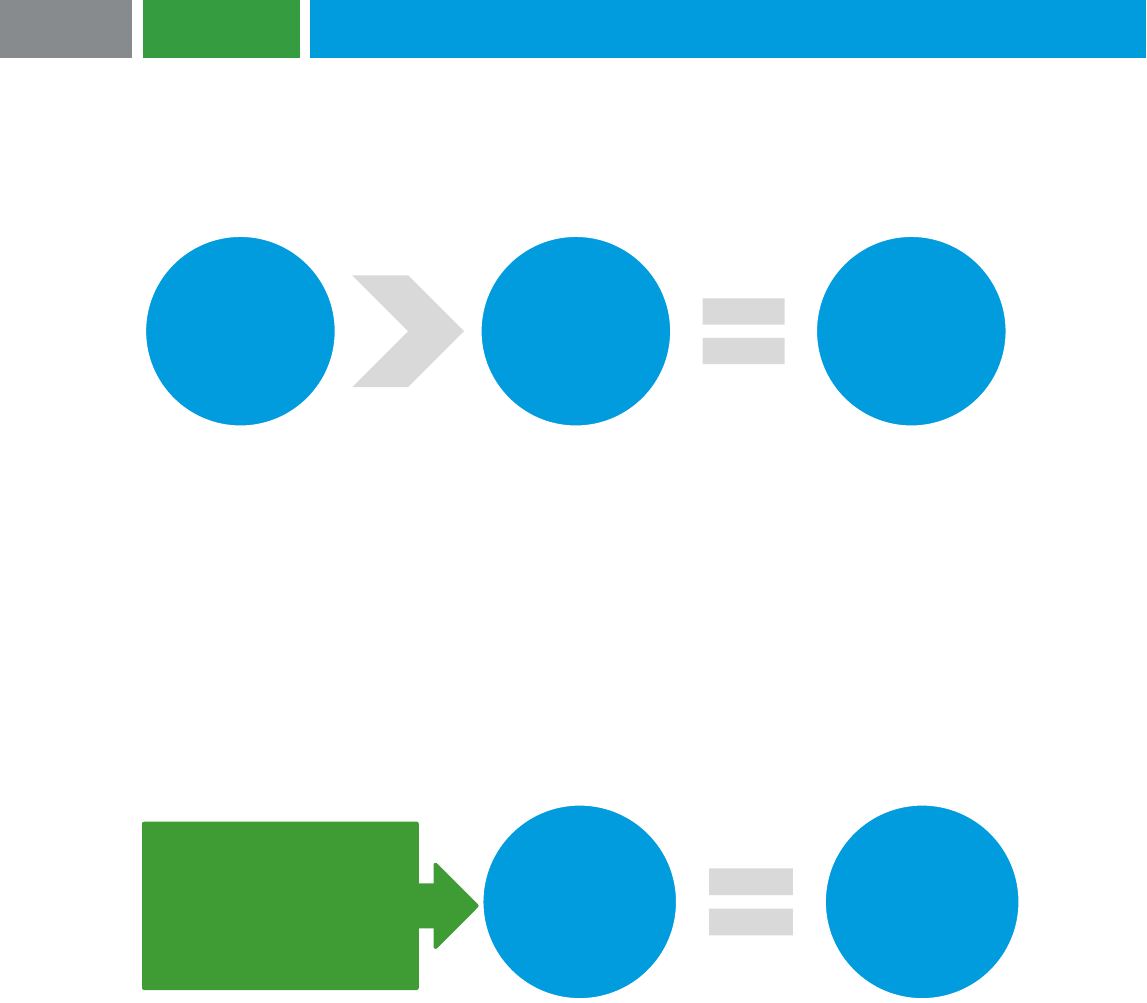
12
JUNE 2023
2.2.2.2 Is the lender granting a concession?
Relevant guidance: ASC 470-60-55-10 to 55-13
A concession has been granted by the lender if the debt’s effective (not stated) interest rate after changes
are made to it is less than the debt’s effective (not stated) interest rate prior to those changes being
made.
However, there may be rare situations in which a decrease in the effective interest rate is attributable to a
factor not reflected in the mathematical calculation of the effective interest rate. Adding more collateral to
the debt may give rise to this situation. Provided there is persuasive evidence in support of these rare
situations, a concession may not have occurred even though there has been a decrease in the borrower’s
effective interest rate. The accounting in such a situation should reflect the substance of the changes
made to the debt.
The effective interest rate after changes are made to the debt should give effect to all of the terms of the
changed debt, which should include any new or revised options, warrants, guarantees and letters of
credit. The following steps should be taken when calculating the effective interest rate after the changes
are made to the debt:
• Project all cash flows required under the changed debt
• Solve for the discount rate that makes the present value of the projected cash flows equal to the
carrying amount of the borrower’s debt before it was changed
Reflected in the carrying amount of the borrower’s debt should be any unamortized premium, discount or
issuance costs, and any accrued interest payable. However, hedging effects related to the debt should
not be included in its carrying amount. For example, the borrower may have previously elected fair-value
hedge accounting for an interest rate derivative (such as an interest rate swap) related to the debt.
Adjustments to the carrying amount of the debt to record changes in fair value associated with the
hedging relationship should be excluded from the carrying amount of the debt when calculating the
changed debt’s effective interest rate.
Reflected in the projected cash flows required under the changed debt should be any future principal and
interest payments, as well as any fees paid or payable by the borrower to the lender. In addition, the
projected cash flows required under the changed debt should include the effects of any new or revised
enhancements (i.e., sweeteners) included in the debt. Examples of sweeteners include options, warrants,
Effective
interest rate
BEFORE
changes are
made to the
debt
Effective
interest rate
AFTER
changes are
made to the
debt
Concession
Present value
of projected
cash flows
required under
the changed
debt
Carrying
amount of debt
before it was
changed
The effective interest rate
after changes are made to
the debt is the discount rate
used in this present value
calculation that results in
these two amounts equaling
each other.

13
JUNE 2023
guarantees and letters of credit. One way in which adding a sweetener would directly affect cash flows is
if the borrower added a new financially-sound guarantor to the debt, and as a result, the lender agreed to
reduce the interest rate charged on the debt. Adding, deleting or changing a sweetener may not always
have a direct effect on cash flows. Nonetheless, the FASB believes that adding, deleting or changing a
sweetener should be taken into consideration when determining whether the lender has granted a
concession. As such, the day-one projected cash flows required under the changed debt for purposes of
determining whether a concession has been granted should include a new sweetener’s fair value or the
change in a revised sweetener’s fair value, along with any future principal and interest payments and any
fees paid or payable by the borrower to the lender. The length of time until a sweetener becomes
exercisable should be taken into consideration in estimating its fair value on the date the restructuring
occurs.
2.2.2.3 Overall indicators of whether a TDR exists for accounting purposes
Relevant guidance: ASC 470-60-15-8, ASC 470-60-15-12, ASC 470-60-55-4 and ASC 470-60-55-9
Overall indicators that a TDR does not exist for accounting purposes include the following:
• Other lenders are willing to loan the borrower funds at market interest rates at or near the interest
rates available for debt that is not troubled.
• The fair value of the assets (including cash) or equity interest either:
a) Accepted by the lender in full satisfaction of its receivable is equal to or more than the
lender’s recorded investment (before the adoption of ASC 326), or amortized cost basis (after
the adoption of ASC 326) in the receivable, or
b) Transferred by the borrower in full satisfaction of its debt is equal to or more than the carrying
amount of the borrower’s debt (see Chapter 6 of our financial assets guide for information
about ASC 326).
• To maintain its relationship with the borrower, the lender agrees to reduce the effective interest
rate on the debt solely because the borrower could go elsewhere to obtain funds at a current
market interest rate that is less than the effective interest rate on the debt (such decrease in the
current market interest rate could be due to the occurrence of a general decrease in market
interest rates or a decrease in the risk being taken on by the lender with respect to the borrower).
• The new marketable debt issued by the borrower in exchange for its old debt has an effective
interest rate that is at or near current market interest rates on comparable debt issued by
nontroubled borrowers.
To the extent any of these indicators exist, we believe it would take a preponderance of evidence to the
contrary to conclude that a TDR does, in fact, exist for accounting purposes.
An overall indicator that a TDR exists for accounting purposes is if other lenders are only willing to loan
the borrower funds at effective interest rates that are so high that the borrower would not be able to make
all the required payments under the debt. To the extent this indicator exists, we believe it would take a
preponderance of evidence to the contrary to conclude that a TDR does not, in fact, exist for accounting
purposes.
2.2.2.4 Factors that should not be considered in TDR determination
Relevant guidance: ASC 470-60-55-6
Factors that should not enter into the determination as to whether a TDR exists for accounting purposes
include:
• How much do the current lenders have invested in the debt before the restructuring?

14
JUNE 2023
• What is the fair value of the debt immediately before and after the changes are made?
• What transactions have occurred among the lenders affected by the changes?
In general, how long the current lenders have held their investment in the debt should also not enter into
the determination as to whether a TDR exists for accounting purposes. However, a TDR could exist for
accounting purposes if the lenders recently came to their current position through what was, in substance,
a planned refinancing.
2.2.3 Series of restructurings on same debt
Relevant guidance: ASC 470-60-55-14
Changes to debt that occur in the same recent time frame should be evaluated on a cumulative basis to
determine whether a TDR occurred. Although GAAP does not define what is considered recent for
purposes of determining whether a TDR has occurred, we generally believe a one-year period should be
considered recent, which is the same period prescribed in GAAP for modifications and exchanges that
are not TDRs (see Section 2.3.2.2).
For purposes of determining whether the lender granted a concession in these situations, the borrower
should solve for the discount rate that makes the present value of the projected cash flows (including
those required as a result the most recently changed debt) equal to the carrying amount of the borrower’s
debt before the first changes were made to the debt in the recent time frame. The borrower should
compare this effective interest rate to the effective interest rate prior to the first changes made to the debt
in the recent timeframe to determine whether the lender granted a concession. Analyzing the changes to
the debt on a cumulative basis prevents the borrower from reaching a different accounting conclusion by
executing the changes in stages.
2.2.4 TDR accounting model
Relevant guidance: ASC 360-10-35, ASC 470-60-35-1 to 35-2, ASC 470-60-35-4 to 35-5 and ASC
470-60-35-8 to 35-9
How a borrower accounts for a TDR depends on whether the borrower: (a) transfers assets in the TDR,
(b) transfers equity in the TDR or, (c) modifies the terms of the debt (e.g., the borrower and lender agree
to modify the cash requirements under the debt on a going-forward basis). The remaining discussion in
this section focuses on the accounting when:
• Full settlement of the debt occurs through the borrower’s transfer of assets (which would include
a repossession or foreclosure by the lender [see commentary later in this section for discussion of
the timing related to the accounting for a TDR and the timing related to recognizing an impairment
(if necessary) on the asset being foreclosed upon]) (see Section 2.2.4.1)
• Full settlement of the debt occurs through the borrower’s transfer of equity (see Section 2.2.4.2)
• Modification of the debt’s terms occurs with no assets or equity transferred in settlement (see
Section 2.2.4.3)
• Partial settlement of the debt occurs through the borrower’s transfer of assets or equity or
modification of terms (see Section 2.2.4.4)
For purposes of this discussion, the carrying amount of the borrower’s debt includes any unamortized
premium, discount, or issuance costs and any accrued interest payable.
Commentary: Foreclosure by the lender may result in full or partial settlement of debt through the
transfer of assets (see Section 2.2.4.1 and Section 2.2.4.4). While the accounting for debt fully or partially
settled through foreclosure does not take place until the foreclosure occurs, the borrower may be required
to recognize an impairment loss on the asset group that includes the asset subject to foreclosure prior to
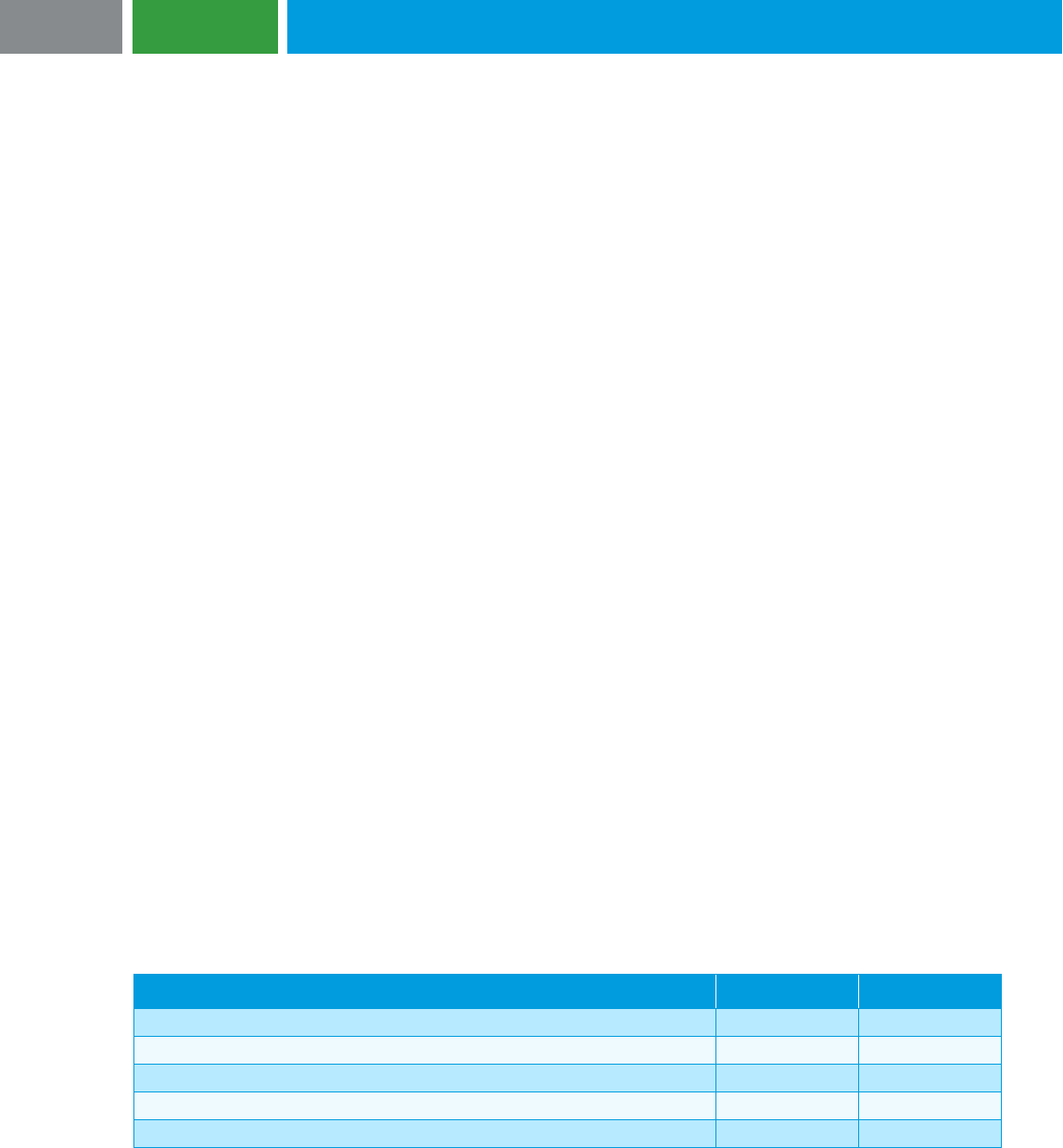
15
JUNE 2023
the foreclosure occurring. Consider a situation in which an impairment loss should be recognized in 20X1
on an asset group that includes an asset about to be foreclosed upon, but the foreclosure and recognition
of the related gain on restructuring is not expected to occur until 20X2. A question arises in this situation
about whether the portion of the impairment loss allocated to the asset subject to foreclosure may be
deferred until the gain on restructuring is recognized in 20X2. The answer to that question is no. There is
no link between the timing of when an impairment loss allocated to an asset that may be subject to
foreclosure should be recognized and the timing of when a gain on restructuring related to settling debt
through foreclosing on the asset should be recognized.
2.2.4.1 Full settlement of debt through borrower’s transfer of assets
Relevant guidance: ASC 470-50-40-2, ASC 470-60-35-2 to 35-3 and ASC 470-60-35-9
In a TDR in which the borrower agrees to transfer assets, the assets could be accounts receivable from
routine sales made by the borrower, real estate or other assets (including cash). If the debt is fully settled
by the transfer of assets:
• The borrower recognizes a gain on restructuring for the difference between the carrying amount
of the debt and the more clearly evident fair value of the transferred assets or the settled debt.
The gain on restructuring should be included as a separate line item in the income statement and
should be reduced by the amount of any fees paid or payable to the lender.
• The borrower recognizes a gain or loss on the transfer of assets for any difference between the
carrying amount of the transferred assets and the fair value of the transferred assets. Whether
the gain or loss affects operating income depends on the nature of the assets transferred. For
these purposes, the carrying amount of the transferred assets should reflect any related valuation
allowances (e.g., allowance for doubtful accounts before the adoption of ASC 326 or the
allowance for credit losses after the adoption of ASC 326 [see Chapter 6 of our financial assets
guide for information about ASC 326]) and any related unamortized premium, discount or
acquisition costs.
To illustrate the accounting described above, consider a TDR in which accounts receivable are being
transferred to settle outstanding debt. The carrying amount of the debt being settled is $1.2 million on the
date of the restructuring. Information related to the accounts receivable being transferred on the date of
the restructuring is as follows:
• Gross balance is $1 million,
• Related allowance for doubtful accounts (or credit losses) determined as of the date of transfer is
$100,000, and
• Fair value is $850,000.
If the borrower concludes that this scenario represents a TDR, the borrower would record the following
journal entry on the date the assets are transferred to settle the debt:
Note 1: ($1 million gross balance in accounts receivable − $100,000 allowance for doubtful accounts) − $850,000
fair value of accounts receivable
Note 2: $1.2 million carrying amount of the debt − $850,000 fair value of accounts receivable transferred
Debit
Credit
Debt
$1,200,000
Allowance for doubtful accounts (or credit losses)
100,000
Loss on transfer of assets (Note 1)
50,000
Accounts receivable
$1,000,000
Gain on troubled debt restructuring (Note 2)
350,000

16
JUNE 2023
In this example, the gain on restructuring should be included as a separate line item in the income
statement. The loss on transfer of assets should be included in operating income given that the assets
transferred (i.e., accounts receivable) are operating assets.
Determining the fair value of debt
The fair value of a liability is based on its transfer price. It is not appropriate to assume that the price to
transfer the liability is the same as the price to settle the liability or the same as the carrying amount of
the liability. How a borrower estimates the amount at which it would be able to transfer one of its
liabilities may present unique challenges given the lack of market information on transfer prices for
entity-specific liabilities. Oftentimes, there is little market information available because contractual or
other legal restrictions prevent the transfer of such liabilities. Guidance on measuring the fair value of
liabilities is included in ASC 820-10-35.
2.2.4.2. Full settlement of debt through borrower’s transfer of equity
Relevant guidance: ASC 470-60-35-2, ASC 470-60-35-4 and ASC 470-60-35-12
In a TDR in which the borrower agrees to transfer equity to fully settle the debt, the borrower recognizes a
gain for the difference between the carrying amount of the debt and the more clearly evident fair value of
the transferred equity or the settled debt. See Section 2.2.4.1 for information about determining the fair
value of debt. Any fees paid or payable to the lender and any direct costs incurred with third parties
related to the issuance of equity to settle the debt reduce the amount recorded in equity. All other fees
and direct costs incurred unrelated to the issuance of equity either: (a) are included in expense for the
period, if no gain on restructuring is recognized, or (b) reduce the amount of the gain, if a gain on
restructuring is recognized.
Commentary: For purposes of this discussion, equity includes equity-linked instruments that should be
classified as equity, but not equity-linked instruments that should be classified as liabilities. The
classification of equity-linked instruments is discussed in detail in our debt and equity guide. Settling debt
with equity-linked instruments that should be classified as liabilities results in there being continuing debt
with the same lender, the implications of which are discussed in Section 2.1.2 and Section 2.2.1.1.
2.2.4.3 Borrower and lender only change the debt’s terms
Relevant guidance: ASC 470-60-35-5 to 35-7 and ASC 470-60-35-11
In a TDR in which the borrower and lender agree to change the terms of the debt (and not transfer assets
or equity), the accounting depends on whether the total cash outflows required under the restructured
debt are more or less than the carrying amount of the debt prior to the restructuring. In some cases, total
cash outflows required under the restructured debt may fluctuate (e.g., the interest rate varies over time
depending on changes in the prime rate). In these cases, total cash outflows required under the
restructured debt should be based on the interest rate in effect at the time of the restructuring. Additional
discussion about debt with a variable interest rate is provided later in this section.
To the extent the borrower must pay the lender any fees in conjunction with the restructuring, those fees
should be included in the total projected cash outflows because they are essentially equivalent to
additional principal and interest payments. In other words, the lender could decrease (or increase) the
lender fee and retain the same economics by increasing (or decreasing) the principal or interest
payments.
Total cash outflows required for restructured debt > Carrying amount of debt prior to restructuring
If total cash outflows required under the restructured debt are greater than the carrying amount of the
debt prior to the restructuring, then no gain or loss is recognized and there is no adjustment to the
carrying amount of the debt. The fact that no gain or loss is recognized and no adjustment is made to the

17
JUNE 2023
carrying amount of the debt does not affect the conclusion that a TDR has occurred. The change in cash
outflows resulting from the restructuring is accounted for on a prospective basis (i.e., the changes are
recognized in future periods) by calculating a new effective interest rate on the restructured debt and
using it to recognize lower interest expense over the restructured debt’s remaining term.
As mentioned earlier, a lender fee that must be paid by the borrower in conjunction with the restructuring
is included in the total cash outflows required under the restructured debt. Those total cash flows are
used to calculate the effective interest rate on the restructured debt. As a result, a lender fee increases
the effective interest rate, which leads to the fee being recognized over the restructured debt’s remaining
term.
The new effective interest rate used to account for the debt on a going-forward basis is the effective
interest rate calculated on the restructured debt for purposes of determining whether the lender granted a
concession to the borrower (see Section 2.2.2.2).
Example 3.2 illustrates the application of this guidance.
Total cash outflows required for restructured debt < Carrying amount of debt prior to restructuring
If total cash outflows required under the restructured debt are less than the carrying amount of the debt
prior to the restructuring, then a gain is generally recognized and there is an adjustment to the carrying
amount of the debt. However, as explained later in this section, gain recognition may not be appropriate
when contingent payments are included in the terms of the restructured debt. In addition, as discussed in
Section 2.2.4.5, incremental considerations arise with respect to gain recognition when the lender is also
an equity holder in the borrower.
When there are no contingent payments, the amount of the recognized gain and the adjustment to the
carrying amount of the debt is determined as follows:
More than one account (e.g., debt and the related debt discount or premium) may be affected by the
adjustment to the carrying amount of the debt. These accounts may either be retained or combined after
the restructuring. If they are retained, the adjustment should be allocated among those accounts that
remain after the restructuring using their previous balances for allocation purposes.
Going forward, all cash payments under the terms of the restructured debt must be accounted for as
reductions of the carrying amount of the debt, and no interest expense should be recognized on the debt
for any period between the restructuring and maturity of the debt. The only exception is to recognize
interest expense according to ASC 470-60-35-10.
Example 3.3 illustrates the application of this guidance.
Contingent payments
Contingent payments, or what are essentially contingent payments, may be included in the terms of the
restructured debt. Examples of such contingent payments include: (a) amounts the borrower is required
to pay if its financial condition improves (based on a specified, measurable metric) by a specific date and
Carrying
amount of debt
prior to
restructuring
Total cash
outflows
required under
terms of
restructured
debt
Amount of
recognized
gain and
adjustment to
carrying
amount of debt

18
JUNE 2023
(b) indeterminate interest payments the borrower has to make because the restructured debt is due on
demand.
When contingent payments are included in the terms of the restructured debt and the total projected
noncontingent cash outflows required under the restructured debt are less than the carrying amount of
the debt prior to the restructuring, the borrower should not recognize a gain on the restructuring if the
maximum total future cash payments (total projected noncontingent cash outflows plus all contingent
amounts that could become payable) is greater than the carrying amount of the debt prior to the
restructuring. If a gain is not recognized as a result of this guidance, a new effective interest rate must be
calculated for purposes of recognizing interest expense in future periods. In some cases, this new
effective interest rate may be at or near zero. When determining the new effective interest rate, only those
contingent payments necessary to prevent gain recognition are included in the calculation. For example,
assume in a TDR that: (a) the carrying amount of the debt prior to the restructuring is $1 million, (b) the
total projected noncontingent cash outflows required under the restructured debt are $900,000 and (c) the
maximum contingent payments that could be made under the restructured debt are $200,000 (two
payments of $100,000 each). In this example, only $100,000 of the maximum contingent payments is
included in calculating the new effective interest rate because that is the amount that would prevent gain
recognition.
The probable and reasonably estimable thresholds applied to the recognition of other contingent liabilities
should be applied to determine if and when a liability should be recognized for the contingent payments
included in the terms of the restructured debt. If a liability should be recognized, or when the contingent
payments are actually made, consideration must be given to whether those amounts should serve to
reduce the carrying amount of the restructured debt. This would be the case if those amounts were
included in the total projected cash payments under the restructured debt for purposes of preventing the
recognition of a gain at the time of the restructuring.
Variable interest rate
When total cash outflows required under the restructured debt may fluctuate because the interest rate
varies over time (e.g., based on changes in the prime rate), the total maximum cash outflows required
under the restructured debt should be based on the interest rate in effect at the time of the restructuring. If
these cash outflows are less than the carrying amount of the debt prior to the restructuring, a gain is
recognized for the difference, provided there are no contingent payments (other than those related to the
debt’s variable interest rate) that could be required in the future that would reduce the gain.
After the TDR, a debtor should not recognize a gain on the restructured debt that involves indeterminate
future cash payments as long as the maximum cash payments may equal or exceed the carrying amount
of the debt. Fluctuations in the debt’s effective interest rate after the restructuring due to changes in the
underlying benchmark or index (e.g., the prime rate) or other causes are accounted for as changes in
estimates in the periods in which the changes occur. However, the accounting for those fluctuations
should not result in recognizing a gain on restructuring that may be offset by future cash payments.
Rather, the carrying amount of the restructured debt should remain unchanged, and future cash
payments should reduce the carrying amount until the time that any gain recognized cannot be offset by
future cash payments. Based on this guidance, if the debt’s variable interest rate after the TDR increases
to a rate above the rate on the date that the TDR occurred (the TDR variable interest rate), the
incremental interest expense is recognized in the period the increase occurs. Conversely, if the debt’s
variable interest rate decreases below the TDR variable interest rate, all interest accrued offsets the
carrying amount of the debt, and any additional gain is not recognized until the debt is settled.
Commentary: As discussed in the preceding paragraph, when there is a decrease in the debt’s variable
interest rate after a TDR, a gain is not recognized until settlement of the debt, in case there is a
subsequent increase in the variable interest rate that offsets the effects of the previous decrease. If there

19
JUNE 2023
is such a subsequent increase, we believe the borrower should continue to defer the recognition of any
gain until settlement of the debt and elect one of the following two accounting policies:
(a) Recognize interest expense when the variable interest rate increases above the TDR variable
interest rate where such interest expense would be based on the excess of the increased variable
interest rate over the TDR variable interest rate, or
(b) Recognize the effects of the increase in the variable interest rate as a reduction in the carrying
amount of the debt until the effects of the previous decrease in the variable interest rate has been
offset, at which point the incremental interest is recognized as an expense.
The accounting policy elected by the borrower should be disclosed and consistently applied in similar
facts and circumstances.
To illustrate the accounting discussed above, consider a situation in which the borrower and lender
changed a loan with a carrying amount of $133,000, and it was determined that these changes met the
definition of a TDR. Pertinent information related to the loan after the restructuring included the following:
• Interest is paid annually at a variable interest rate (which is reset at the beginning of each year),
with the first interest payment being due one year after the restructuring.
• Principal amount is $100,000.
• Remaining term is four years.
• Variable interest rate on the date of the restructuring is 7%
• Estimated interest related cash flows are $28,000 ($100,000 principal x 7% variable interest rate
on the date of the TDR x 4-year remaining term)
Borrower recognized a gain on restructuring of $5,000, calculated based on the excess of the carrying
amount of the debt immediately before the restructuring ($133,000) over the total projected cash outflows
required under the terms of the restructured debt ($128,000), which represents the principal amount
repayable of $100,000 plus $28,000 of total estimated interest payments over the term of the restructured
debt.
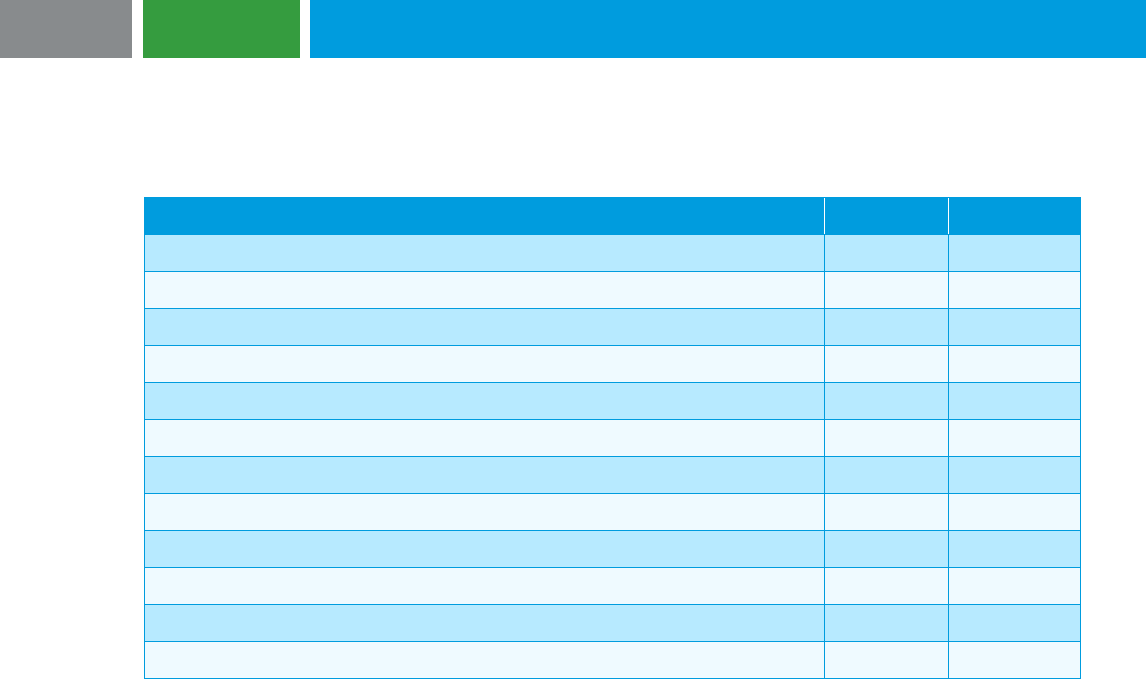
20
JUNE 2023
Subsequent to the restructuring:
The variable rate of interest remained at 7% throughout Year 1; however, at the beginning of Year 2, the
debt’s variable interest rate changed to 6% and remained at that rate throughout the year. The following
journal entries were recorded in Year 1 and 2 related to the debt:
Debit
Credit
Interest accrued during Year 1 (Note 1)
Debt (Note 1)
$7,000
Accrued interest
$7,000
Interest paid at the end of Year 1 (Note 1)
Accrued interest
$7,000
Cash
$7,000
Interest accrued during Year 2 (Note 2)
Debt (Notes 1 and 2)
$6,000
Accrued interest
$6,000
Interest paid at the end of Year 2 (Note 2)
Accrued interest
$6,000
Cash
$6,000
Note 1: Entry to recognize interest accrued during Year 1 and then paid at the end of Year 1 is based on a
variable rate of interest of 7%. The offsetting entry to accrued interest is debt, rather than interest
expense, because upon the debt’s restructuring, the carrying amount of the loan was adjusted to equal
the total estimated cash outflows for both the remaining principal and interest payable over the term of the
restructured loan.
Note 2: Entry to recognize interest accrued during Year 2 and then paid at the end of Year 2 is based on a
variable rate of interest of 6%. The offsetting entry to accrued interest is debt, rather than interest
expense, because upon the debt’s restructuring, the carrying amount of the loan was adjusted to equal
the total estimated cash outflows for both the remaining principal and interest payable over the term of the
restructured loan. In accordance with ASC 470-60-35-7, no gain is recognized for the decrease in the
variable interest rate (from 7% to 6%) because the variable interest rate could subsequently increase in
Years 3 or 4 and offset the effects of the decrease in Year 2.
At the beginning of Years 3 and 4 and throughout these years, the debt’s variable interest rate is 9% and
7%, respectively. The borrower’s accounting for the interest due during Years 3 and 4 depends on
whether it elects accounting policy (a) or (b) discussed earlier.
Under accounting policy (a):
• In Year 3, the borrower reduces the carrying amount of the debt by the original estimated annual
interest payment of $7,000 and records interest expense of $2,000 for the excess of the variable
interest payment based on a 9% interest rate over the original estimated annual interest
payment.
• In Year 4, the borrower pays $7,000 of interest and $100,000 of principal and reduces the
carrying amount of the debt to zero and recognizes a $1,000 gain on restructuring.
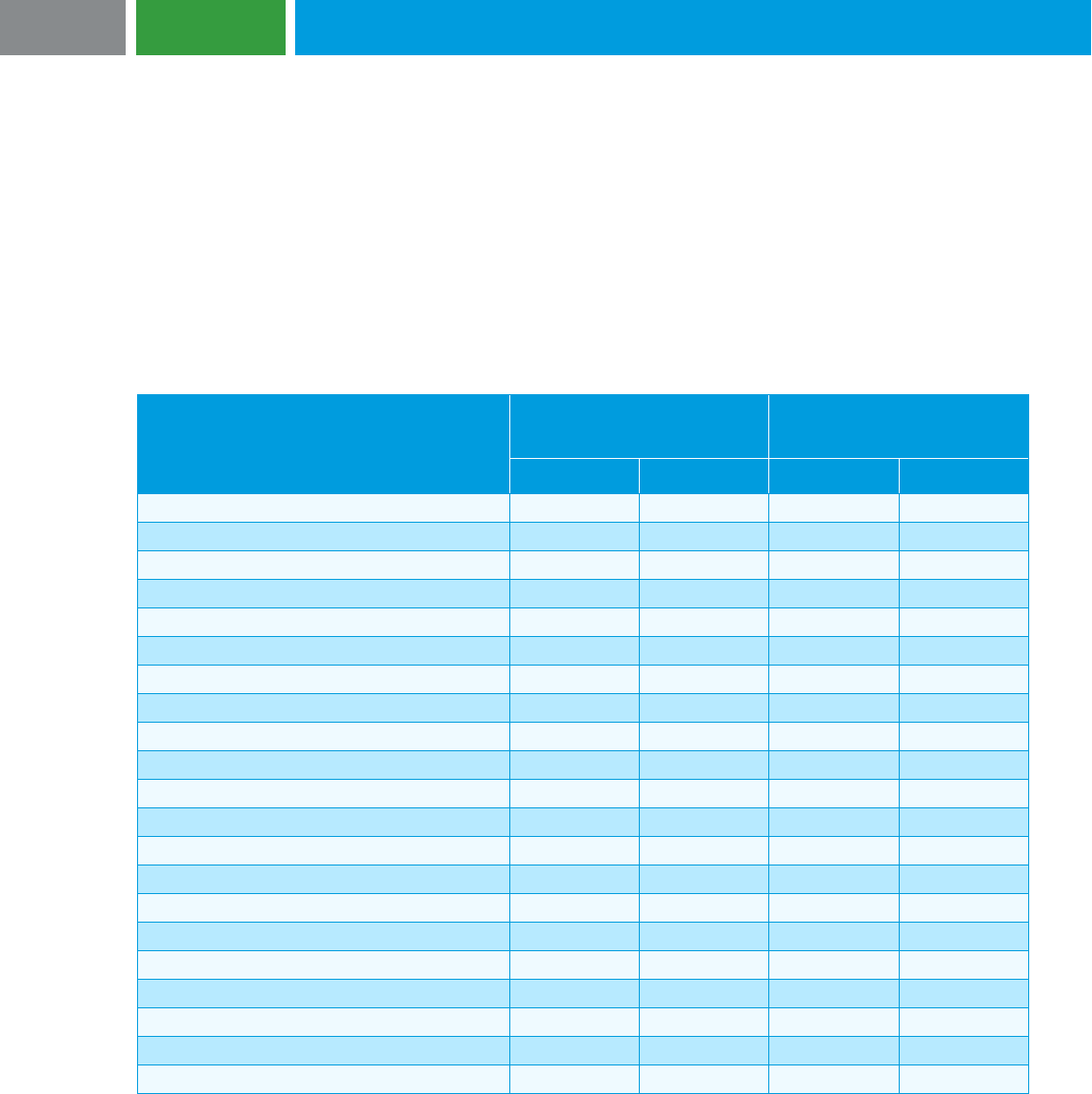
21
JUNE 2023
Under accounting policy (b):
• In Year 3, the borrower reduces the carrying amount of the debt by the original estimated annual
interest payment of $7,000 plus the shortfall of $1,000 between the interest payment made in the
prior year ($6,000) and the original estimated interest payment for that year ($7,000). Borrower
also records interest expense of $1,000 for the difference between actual interest payment for the
year ($9,000) and the amount for which debt was reduced as noted above ($8,000).
• In Year 4, the borrower pays $7,000 of interest and $100,000 of principal and reduces the
carrying amount of the debt to zero with no gain or loss recorded as the interest paid in year 4
was based on a 7% variable interest rate, which is consistent with the original variable interest
rate.
The following summarizes the journal entries that would be recorded in Years 3 and 4 depending on the
accounting policy elected by the borrower:
Note 1: Entries to record the interest accrued and paid in Year 3 based on the variable interest rate of 9%. Under
this accounting policy, the amount by which the carrying value of a loan with a variable interest rate is
reduced is based on the lesser of the actual interest payable for the period or the amount estimated at the
time of the restructuring. Any actual interest payable for the period in excess of the amount estimated at
the time of the loan restructuring is recognized as interest expense until the debt carrying amount is fully
settled or reduced to zero.
Accounting policy (a)
(Notes 1, 3 and 4)
Accounting policy (b)
(Notes 2, 3, and 4)
Debit
Credit
Debit
Credit
Interest accrued during Year 3
Debt
$7,000
$8,000
Interest expense
2,000
1,000
Accrued interest
$9,000
$9,000
Interest paid at the end of Year 3
Accrued Interest
$9,000
$9,000
Cash
$9,000
$9,000
Interest accrued during Year 4
Debt
$7,000
$7,000
Accrued interest
$7,000
$7,000
Interest paid at the end of Year 4
Accrued Interest
$7,000
$7,000
Cash
$7,000
$7,000
Principal repaid at maturity
Debt
$101,000
$100,000
Cash
$100,000
$100,000
Gain on restructuring
$1,000
-
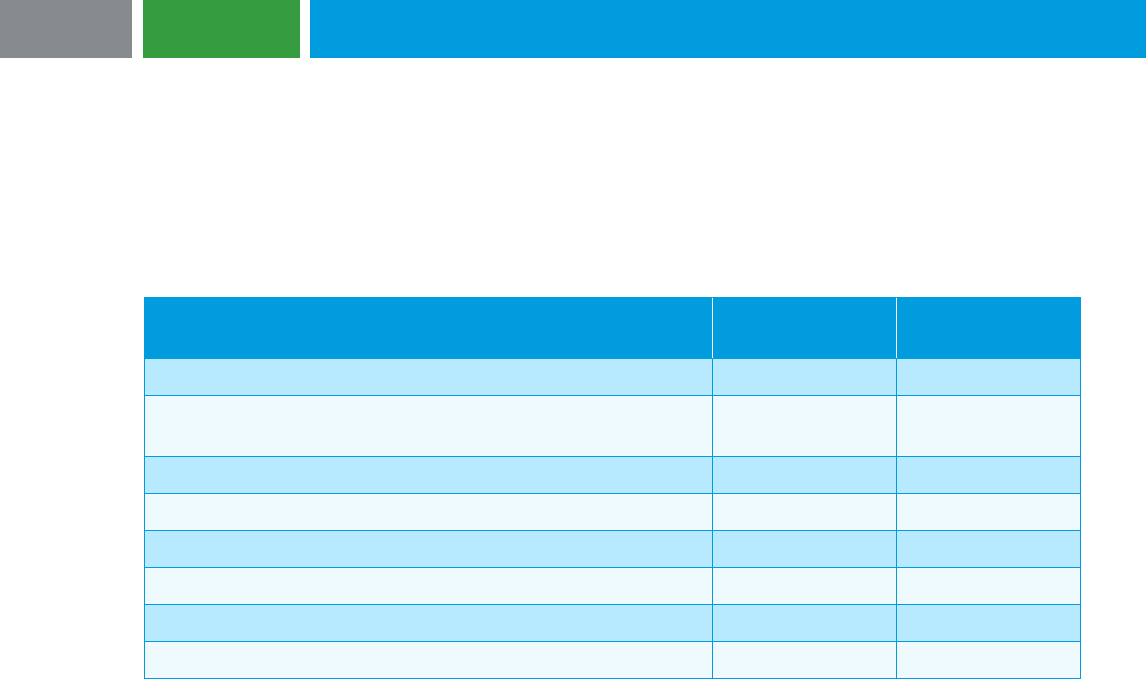
22
JUNE 2023
Note 2: Entry to record the interest paid in Year 3 based on the variable interest rate of 9%. Under this accounting
policy, the amount by which the carrying value of a loan with a variable interest rate is reduced is the sum
of the interest estimated at the time of the restructuring of $7,000 plus the shortfall of $1,000 between the
accrued interest recorded in the prior year ($6,000) and the original interest estimated at the time of
restructuring for that year ($7,000). Borrower also records interest expense of $1,000 for the difference
between actual interest owed for the year ($9,000) and the amount for which debt was reduced ($8,000).
Note 3: Entries to record the interest accrued and paid in Year 4 based on the variable interest rate of 7%.
Note 4: Entry to record the principal repayment in Year 4 to settle the remaining principal
outstanding on the debt. The related gain upon extinguishment of the restructured debt
under each respective accounting policy is calculated as follows:
Accounting
Policy (a)
Accounting
Policy (b)
Debt carrying value on date of restructuring
$128,000
$128,000
Less: Changes to debt carrying value relating to interest
adjustments
Year 1
(7,000)
(7,000)
Year 2
(6,000)
(6,000)
Year 3
(7,000)
(8,000)
Year 4
(7,000)
(7,000)
Less: Principal Repayment
(100,000)
(100,000)
Ending debt balance recognized as a gain on extinguishment
$1,000
$ -
2.2.4.4 Partial settlement of debt
Relevant guidance: ASC 470-60-35-2 and ASC 470-60-35-8
The borrower and lender may agree to the partial settlement of debt in conjunction with a restructuring.
For example, a TDR could result from any of the following:
• The borrower agrees to pay some cash to the lender and the borrower and lender agree to
modify some of the remaining terms of the debt.
• The borrower agrees to transfer noncash assets to the lender and the borrower and lender agree
to modify some of the remaining terms of the debt.
• The borrower agrees to transfer equity (including equity-linked instruments classified as equity
[see details in our debt and equity guide]) to the lender and the borrower and lender agree to
modify some of the remaining terms of the debt.
• The borrower agrees to transfer cash, noncash assets or equity (including equity-linked
instruments classified as equity [see details in our debt and equity guide]) to the lender that
partially settles the debt, but the terms of the debt that remain are unchanged.
When the TDR involves a partial settlement, the carrying amount of the debt is reduced by the fair value
of the assets or equity transferred in the partial settlement. Unlike the full settlement of debt through the
borrower’s transfer of assets or equity in which the fair value of the settled debt (if it is more clearly
evident) could be used in place of the fair value of the assets or equity to determine the gain on
restructuring (see Section 2.2.4.1 and Section 2.2.4.2), the fair value of the partially-settled debt cannot
be used to reduce the carrying amount of the debt.

23
JUNE 2023
When noncash assets are involved, a gain or loss on the transfer of the assets is recognized for the
difference between the carrying amount and fair value of the noncash assets transferred. This is similar to
the approach taken when the TDR is a full settlement through the transfer of noncash assets (see Section
2.2.4.1).
After the carrying amount of the debt has been reduced and any gain or loss on the transfer of noncash
assets recognized, the accounting for the restructuring follows the approach taken when the TDR
involves only the modification of terms (see Section 2.2.4.3). When using this approach to account for a
TDR that involves a partial settlement of the debt, the borrower’s analysis should: (a) use the carrying
amount of the debt after reduction for the fair value of any assets or equity transferred, (b) use the terms
of the debt that remains after the partial settlement and (c) include any lender fees not related to the
issuance of equity in the total projected cash outflows required under the restructured debt. Additional
considerations arise with respect to gain recognition when the lender is also an equity holder in the
borrower (see the next section).
Example 3.4 illustrates the application of this guidance.
2.2.4.5 Additional considerations when the lender is also an equity holder in the borrower
Commentary: A common related party relationship involving a borrower and a lender is when the lender
is also an equity holder in the borrower. If the TDR accounting model is applied to changes in a loan with
a lender that is also an equity holder, consideration must be given to whether any gain that results from
applying that accounting model should be reflected in the income statement or in equity (i.e., additional
paid-in capital). A key consideration in this regard is whether the lender is restructuring the loan to protect
its equity investment in the borrower. If so, that would provide a strong indication that any gain recognized
in connection with the restructuring should be reflected in equity.
When determining whether the lender is protecting its equity investment in the borrower, consideration
should be given to the significance of the lender’s equity investment in the borrower. The Master Glossary
of the Codification defines principal owners as those that own more than 10% of the voting interests
(including direct and beneficial interests) of an investee. If the lender’s equity investment in the borrower
would result in the lender being considered a principal owner, we believe the lender’s equity investment in
the borrower is significant, which indicates that the lender entered into the restructuring to protect its
equity investment in the borrower. As a result, any gain on the restructuring should be reflected in equity.
If the lender is not considered a principal owner, other relevant facts and circumstances should be
considered to determine whether the lender entered into the restructuring to protect its equity investment
in the borrower. Among those facts and circumstances are the significance of the lender’s debt and equity
investments in the borrower relative to each other and relative to those held by other investors in the
borrower.
2.2.5 Direct costs incurred with third parties in a TDR
Relevant guidance: ASC 470-60-35-12
The borrower will likely incur direct costs with third parties in connection with executing a TDR. Any of
these costs (including legal fees) that relate to transferring equity from the borrower to the lender in the
TDR should reduce the amount that would otherwise have been recognized in equity. For all other direct
costs with third parties incurred in executing a TDR, they are recognized in the income statement as
incurred. The classification of these costs in the income statement depends on whether a gain on
restructuring is recognized. If so, such costs should reduce the amount that would otherwise be
recognized as a gain. If not, such costs should typically be reflected in a separate line item in the income
statement.
Commentary: The borrower may incur direct costs with third parties (e.g., legal expenses) when working
towards a TDR in one reporting period, but not complete the TDR until the next reporting period. When

24
JUNE 2023
this is the case, the question arises about whether the borrower should defer those direct costs incurred
in the first reporting period until the reporting period in which the TDR is completed. The answer to that
question is no. The borrower should recognize direct costs incurred with third parties in conjunction with a
TDR that are not related to the issuance of equity in the income statement in the period in which those
costs are incurred.
2.2.6 Lender fees incurred in the restructuring
Commentary: Fees paid or payable to the lender in conjunction with the TDR that are not related to the
issuance of equity either decrease the amount of the gain that would have otherwise been recognized
(when there are no contingent payments and total projected cash outflows under the restructured debt is
less than the carrying amount of the debt prior to the restructuring) or are deferred and increase the
effective interest rate used to account for the debt on a going-forward basis (when total projected cash
outflows under the restructured debt are greater than the carrying amount of the debt prior to the
restructuring).
2.2.7 Preexisting unamortized debt discount
Commentary: To the extent there is an unamortized debt discount (which would include unamortized
debt issuance costs) prior to the restructuring when the debt is not fully settled in the restructuring, those
costs should already be included in the net carrying amount of the debt prior to the restructuring. As
discussed earlier in Section 2.2.4.3, if total projected cash outflows required under the restructured debt
are greater than the carrying amount of the debt prior to the restructuring (and, consequently, no gain or
loss is recognized), the carrying amount of the debt is used in determining the new effective interest rate
for the restructured debt. This new effective interest rate is used to calculate interest expense over the
remaining term of the restructured debt. As such, the unamortized debt discount prior to the restructuring
continues to be recognized as interest expense over the remaining term of the restructured debt.
Conversely, in a TDR in which the total projected cash outflows required under the restructured debt
(including any contingent amounts) are less than the carrying amount of the debt prior to the
restructuring, a gain is recognized. The calculation of the gain in this situation is based on the carrying
amount of the debt prior to the restructuring less the total cash outflows required under the terms of the
restructured debt. Because the unamortized debt discount is included in the carrying amount of the debt
prior to the restructuring, it would effectively reduce the amount of gain recognized.
To the extent there is an unamortized debt discount prior to the restructuring when the debt is fully settled
in the restructuring, such unamortized debt discount would reduce any gain recognized on the
restructuring.
Example 3.3 and Example 3.4 provide further detail on the accounting for TDRs.
2.2.8 Classification considerations
Relevant guidance: ASC 470-60-45-1 to 45-2
When debt is restructured, consideration should be given to the current versus noncurrent classification of
the debt that remains. Consideration should also be given to the current versus noncurrent classification
of the debt that remains from a TDR that occurs after the borrower’s balance-sheet date but before the
balance sheet is issued or available to be issued.
Commentary: While the classification of debt may be affected by a TDR that occurs after the borrower’s
balance-sheet date but before the balance sheet is issued or available to be issued, the timing of the
accounting for the TDR is not affected. In other words, any gain recognized in the accounting for the TDR
cannot be pushed back to the balance-sheet date. In addition, any equity grants that were part of the TDR
cannot be pushed back to the balance-sheet date.
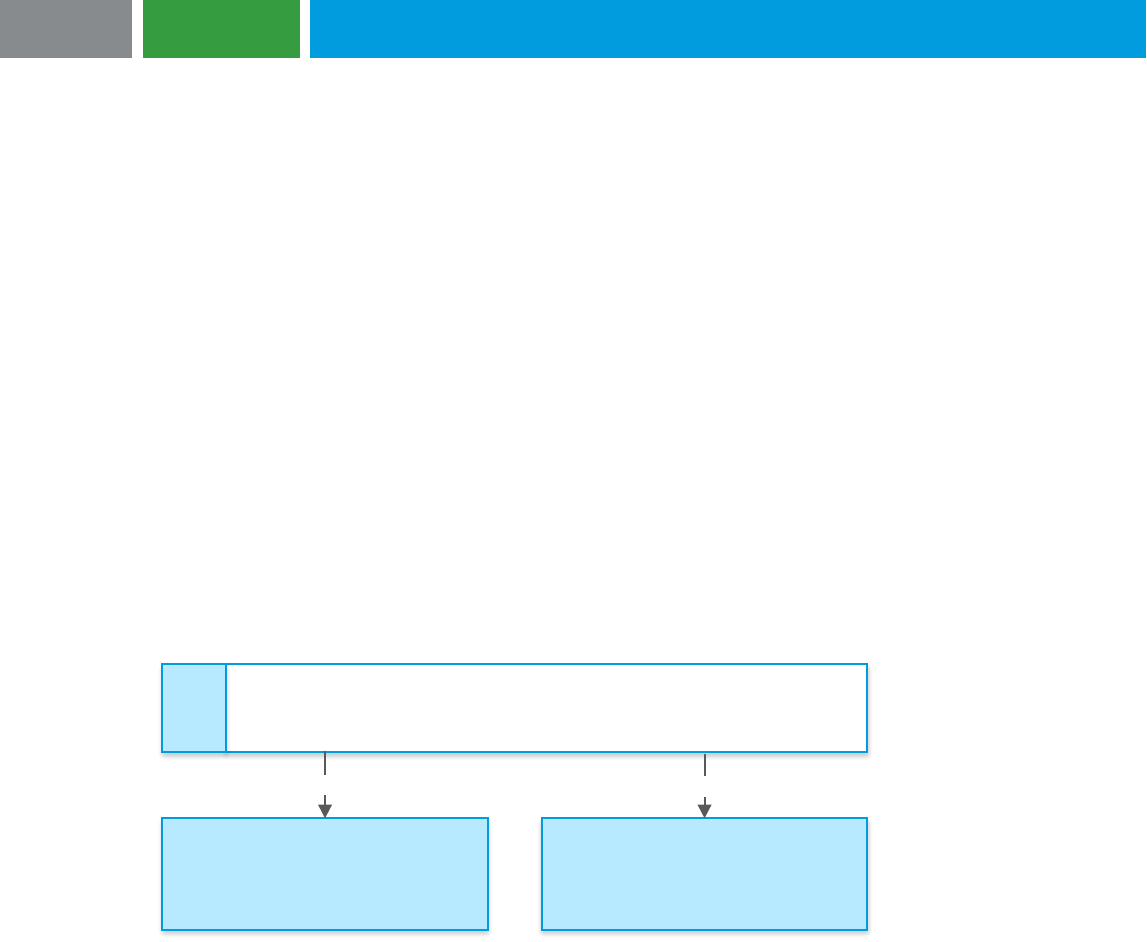
25
JUNE 2023
For more information about the current versus noncurrent classification of debt, refer to our debt
classification white paper.
2.2.9 Disclosures
Relevant guidance: ASC 470-60-50-1 to 50-2
The borrower must disclose the following about a TDR that affected any of the financial statements
presented:
• A description of how the terms of the debt changed and the major features of settlement
• The amount of any gain recognized in connection with the restructuring, as well as the gain per
share
• The amount of any gain or loss recognized on the transfer of assets in connection with the
restructuring
Separate TDR transactions that impact the same type of liability may be aggregated.
To the extent contingent payments are involved in the TDR, the borrower should disclose in periods after
the restructuring the portion of the restructured debt’s carrying amount that reflects contingently payable
amounts. In addition, with respect to the contingent payments, the borrower should also consider whether
it satisfies the general disclosure requirements applicable to contingent liabilities. Depending on the facts
and circumstances, information such as the total amount contingently payable and the terms of the
contingency may need to be disclosed.
2.3 Extinguishment and modification accounting models for term loans
Apply the extinguishment accounting
model (see Section 2.3.3)
Apply the modification accounting
model (see Section 2.3.4)
Is the new or changed debt substantially different from the old debt (see
Section 2.3.2)?
?
No
Yes
2.3.1 Scope
Relevant guidance: ASC 470-50-05-1, ASC 470-50-15-2 to 15-3, ASC 470-50-40-5 and ASC 470-50-
55-8 to 55-9
If the borrower concludes that it has not met the liability derecognition threshold or the TDR criteria, then
it must determine whether the modification or exchange should be accounted for using the
extinguishment or modification accounting model. This determination may be necessary when the
borrower and lender agree to exchange loans or modify the terms of an existing loan. The determination
must also be made when the borrower and lender agree to modify a loan to require its redemption at a
future date for a specified amount.

26
JUNE 2023
The extinguishment and modification guidance discussed in this guide does not apply in any of the
following circumstances:
• Conversions of debt into equity securities of the borrower pursuant to conversion privileges
provided in the terms of the debt at issuance. Additionally, the guidance does not apply to
conversions of convertible debt instruments pursuant to terms that reflect changes made by the
borrower to the conversion privileges provided in the debt at issuance (including changes that
involve the payment of consideration) for the purpose of inducing conversion.
• Transactions between a borrower or a borrower's agent and a third party that is not the lender.
• Debt tendered to exercise detachable warrants that were originally issued with that debt if the
debt is permitted to be tendered towards the exercise price of the warrants under the terms of the
securities at issuance. The tendering of the debt in such a case would be accounted for in the
same manner as a conversion.
• The borrower announces its intention to call a loan at its first call date.
• There is an in-substance defeasance, which occurs when the borrower establishes an irrevocable
trust for the benefit of the lender and deposits in that trust the principal, interest and prepayment
penalties applicable to the loan between the borrower and lender.
• There is an agreement with a lender that a debt instrument issued by the borrower and held by a
different party will be redeemed.
• A loan is converted to the borrower’s equity securities in accordance with conversion privileges
included in the loan at issuance.
• A loan is converted to the borrower’s equity securities in accordance with conversion privileges
included in the loan that have been changed since issuance (including induced conversions).
The accounting for convertible debt, including conversions and modifications (other than modifications of
convertible debt with an embedded conversion option [see Section 1.2]) are discussed in detail in Chapter
2 of our debt and equity guide.
2.3.1.1 Unit of account when there are multiple term loans with the same lender
Commentary: When there are multiple term loans with the same lender (see Section 1.1) and changes
are made to one of those loans, we believe that judgment should be used in determining the unit of
account for purposes of evaluating the changes under ASC 470-50. We believe that one of the primary
considerations when determining the unit of account is whether the changed term loan reflects market
terms at the time the changes were made. If so, that would be an indication that the unit of account for
purposes of evaluating the changes under ASC 470-50 would be the specific term loan that was changed.
Conversely, when the changed term loan does not reflect market terms, that would be an indication that
the unit of account for purposes of evaluating the changes under ASC 470-50 may be a combination of
some or all of the term loans with that lender. Depending on those facts and circumstances, among
others, the unit of account for purposes of evaluating the changes to the term loan under ASC 470-50
may be just the specific term loan that was changed or a combination of some or all of the term loans with
that lender.
Similarly, consider a situation in which a borrower enters into a new term loan with a lender. The borrower
has a preexisting term loan that was entered into more than a year prior to entering into the new term
loan with the same lender (see Section 1.1) that was not changed or otherwise affected by the new term
loan. In this situation, we believe that whether the new term loan should be accounted for as a separate
unit of account (i.e., a new term loan that would not be evaluated under ASC 470-50) or as a combined
unit of account (i.e., a modification of a preexisting term loan for incremental borrowings that would be
evaluated under ASC 470-50) is subject to judgment. Consistent with the discussion in the previous
paragraph, we believe that one of the primary considerations when determining the unit of account is

27
JUNE 2023
whether the new term loan reflects market terms at the time it was entered. If so, that would be an
indication that the new term loan would be a separate unit of account and accounted for as a new loan. If,
on the other hand, the new term loan does not reflect market terms, that would be an indication that the
unit of account may be a combination of the new term loan and some or all of the preexisting term loans
with that lender and evaluated as a change to the preexisting loan under ASC 470-50.
2.3.1.2 Unit of account for delayed-draw term loans (DDTLs)
Commentary: DDTLs generally represent commitments from lenders for term loan facilities in which the
borrower may draw on these facilities at a future date within a period identified in the loan agreement.
Therefore, these loans may not be funded, or may not be fully funded, on the date that the loan
agreements are executed, but rather will be funded at some future date. This adds complexity to the
models for evaluating debt modifications and restructurings, as these loans have characteristics of term
loans and line-of-credit facilities. As a result, these loans may need to be evaluated under two different
models depending on the facts and circumstances.
Assuming that the transaction does not meet the TDR criteria, we believe that judgment is necessary in
determining the appropriate accounting model to be used when evaluating changes to DDTLs. In general,
we believe that changes to DDTLs that are unfunded and not expected to be funded in the near term
should be evaluated using the line-of credit model, while changes to funded DDTLs and those expected
to be funded in the near term should be evaluated using the term loan model.
Example 3.12 illustrates the application of this guidance.
2.3.2 Which model applies?
Relevant guidance: ASC 470-50-40-6 to 40-12A
If the borrower concludes that an exchange of loans or a modification to the terms of an existing loan do
not meet the liability derecognition threshold or the TDR criteria, then it must determine whether the
modification or exchange should be accounted for using the modification or extinguishment accounting
model (the latter of which could result in the borrower recognizing a gain or loss in its income statement
[see Section 2.3.3]). In making this determination, the mere fact that the borrower and lender concurrently
exchange cash to satisfy an existing loan (cash from borrower to lender) and issue a new loan (cash from
the same lender [see Section 1.1] to borrower) should not automatically lead the borrower to conclude
that the extinguishment accounting model should be applied. In these and other situations in which a loan
is modified, the borrower must determine whether the new loan (the modified loan or the loan received in
the exchange) is substantially different from the old loan (the loan before modification or the loan given up
in the exchange).
The considerations involved in accounting for changes to a loan that are related to reference rate reform
are discussed in Section 2.3.2.4.
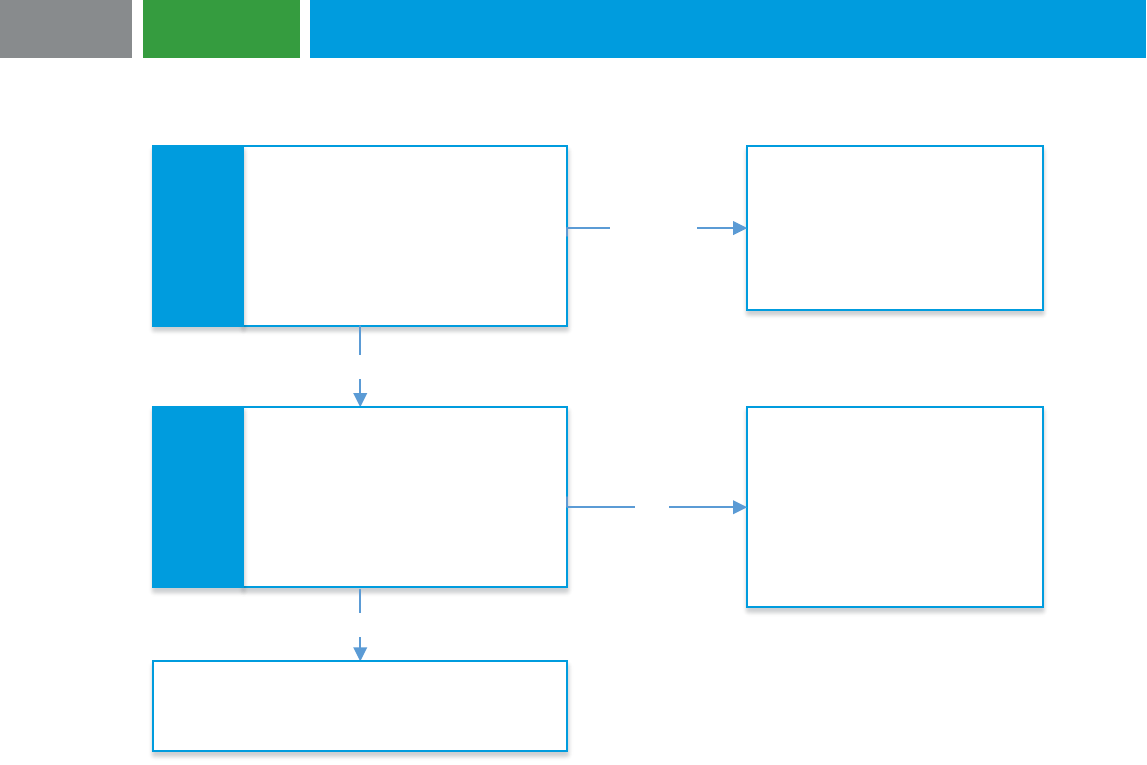
28
JUNE 2023
A flowchart for determining whether a substantial difference exists because of a change in the loan’s cash
flows follows:
Considered substantially
different (i.e., apply the
extinguishment accounting
model – see Section 2.3.3)
Is there at least a 10% difference
between the present value of the
new loan s cash flows and the
present value of the old loan s
remaining cash flows (i.e., the 10%
cash flow test)?
?
No (less than 10%)
Yes (10%
or more)
Assess whether the addition
of, elimination of or changes to
the embedded conversion
options make the new loan
substantially different from the
old loan? (see separate
flowchart below in this
Section)
Were embedded conversion
options added to, eliminated from
or changed in the loan?
?
No
Yes
Not considered substantially different
(i.e., apply the modification accounting
model – see Section 2.3.4)
When calculating the present value of cash flows referred to in the flowchart:
• The cash flows of the new loan should include any amounts exchanged by the borrower and
lender in connection with the exchange or modification, including any fees charged by the lender,
or paid on behalf of the lender (see Section 2.3.5.1), to execute the modification or exchange, any
incremental borrowings received by the borrower, and any repayments of principal by the
borrower.
• The cash flows for loans with floating interest rates should be based on the variable rate in effect
when the exchange or modification occurs.
• When either or both the preexisting or changed loan is callable or puttable, two sets of cash flows
may need to be considered: (1) cash flows assuming the call or put is exercised and (2) cash
flows assuming the call or put is not exercised. The cash flows that should be used in the 10%
cash flow test are those that result in the smaller change between the present value of the new
loan’s cash flows and the present value of the old loan’s remaining cash flows. A loan is callable if
the lender has the right, but not the obligation, to require the borrower to repay the loan’s principal
before its stated maturity date. A loan is puttable if the borrower has the right, but not the
obligation, to repay the loan before maturity on specified dates for a predetermined price. Refer to
Section 2.3.2.1 for discussion about the applicability of this guidance to explicit and implicit
prepayment options.

29
JUNE 2023
• The discount rate is the preexisting loan’s effective interest rate (as determined for accounting
purposes).
• If one or more less-than-substantially-different exchanges or modifications to the loan occurred
within a year of the current exchange or modification, the changes would be assessed
cumulatively (instead of separately) for purposes of applying the 10% cash flow test (see Section
2.3.2.2 for additional discussion). This requirement is so the borrower does not get a different
accounting answer by executing the exchange or modification in stages.
• The effects of an exchange or modification on an embedded conversion option’s fair value is
assessed separately and is not reflected in the 10% cash flow test (refer to the remaining content
in this section for additional discussion).
• If the borrower modifies or exchanges a freestanding equity-classified written call option (such as
a warrant) held by its lender as part of, or directly related to, a modification or exchange of the
related debt held by that same lender, an increase or a decrease in the fair value of the
freestanding equity-classified written call option held by such lender should be reflected in the
10% cash flow test.
The treatment of a “sweetener” in the 10% cash flow test is discussed in Section 2.3.2.3.
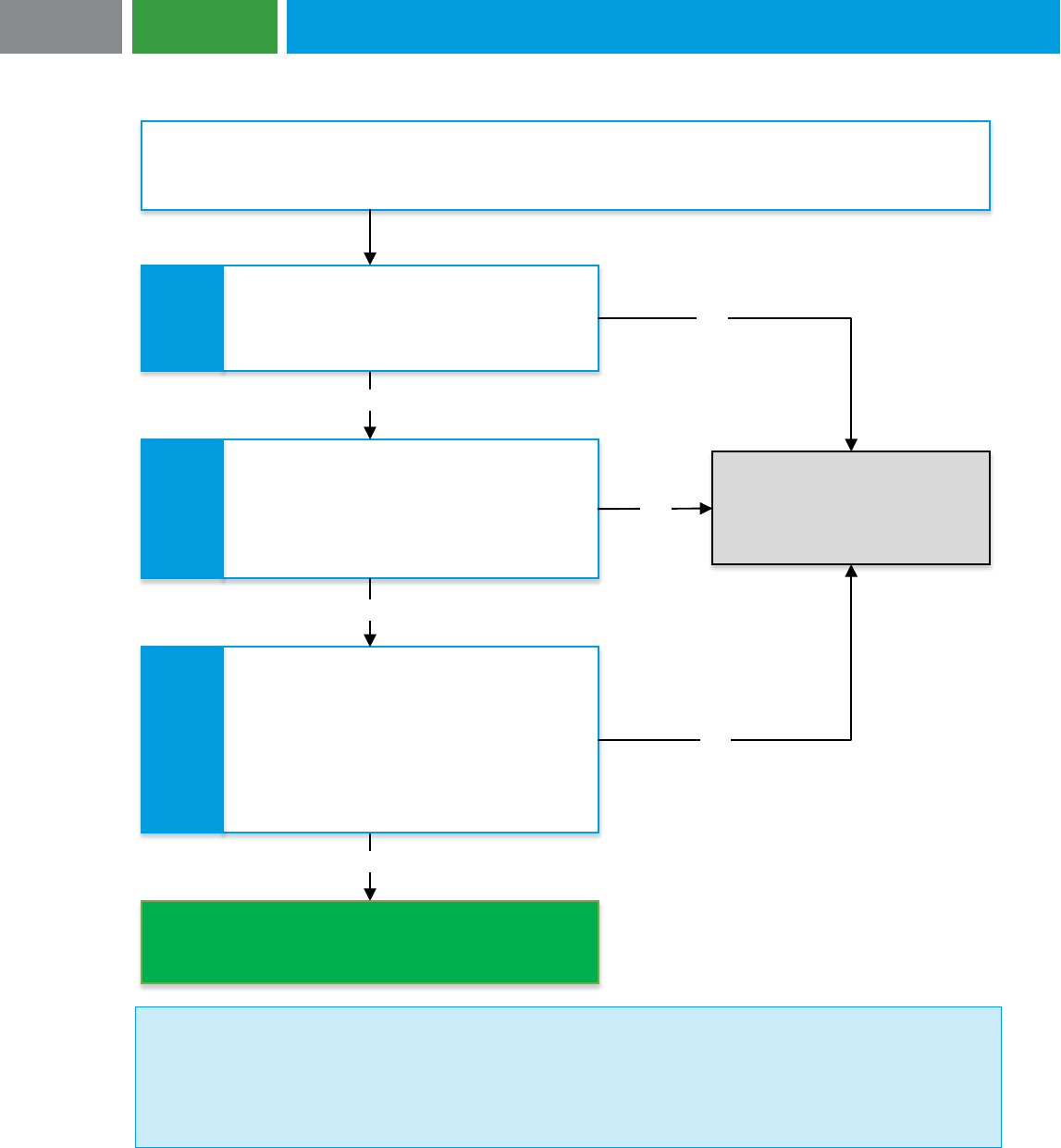
30
JUNE 2023
Following is a flowchart for determining whether a substantial difference exists because an embedded
conversion option was added, eliminated or changed in the modification or exchange:
Considered substantially
different (i.e., apply the
extinguishment accounting
model – see Section 2.3.3)
Was an embedded conversion option (which
was not accounted for as a derivative) that
was substantive at the date of the exchange
or modification eliminated from the loan?
(Note 1)
?
No
No
Was a substantive embedded conversion
option (which should not be accounted for as
a derivative) added to the loan? (Note 1)
?
Were the terms of an embedded conversion
option (which was not and should not be
accounted for as a derivative) changed such
that the change in its fair value is 10% or
more of the original loan s carrying amount
right before the exchange or modification?
(Note 2)
?
No
Not considered substantially different (i.e., apply the
modification accounting model – see Section 2.3.4)
Less than 10% difference between the present value of the new loan s cash flows and the present
value of the old loan s remaining cash flows and an embedded conversion option was added to,
eliminated from or changed in the loan
Yes
Yes
Yes
Note 1: For purposes of determining whether a conversion option is substantive, the guidance in ASC
470-20-40-7 to 40-9 should be used. For additional information, refer to Chapter 2 of our debt and
equity guide.
Note 2: To determine the change in the fair value of an embedded conversion option, compare the fair
value of the option right before and right after the exchange or modification.
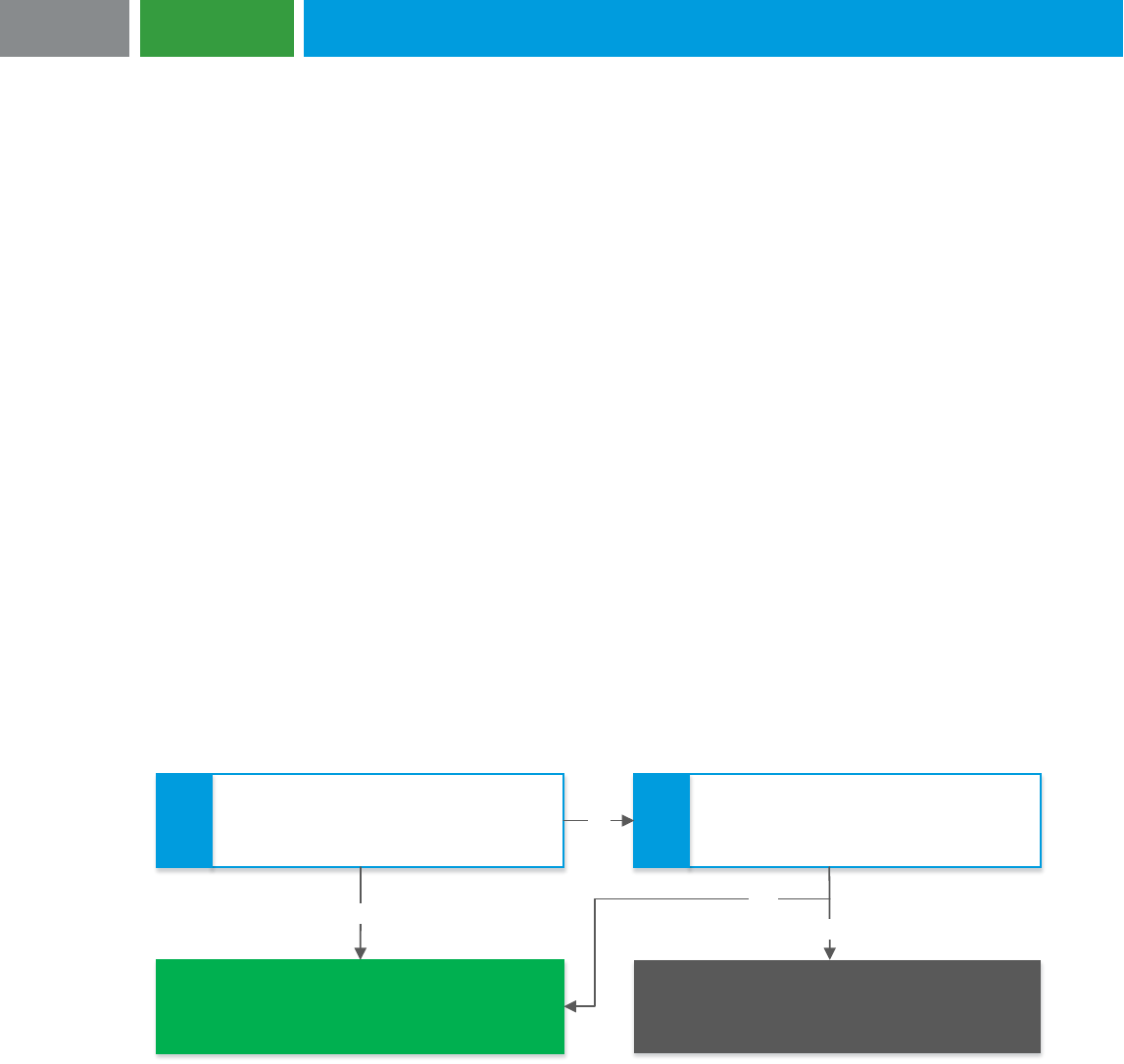
31
JUNE 2023
As noted in the flowchart, the significance of an exchange or modification on an embedded conversion
option’s fair value is assessed separately and is not reflected in the 10% cash flow test discussed earlier
in this section.
2.3.2.1 Prepayment options
Relevant guidance: ASC 470-50-40-12(c)
For a loan that is callable or puttable, two sets of cash flows may need to be considered for purposes of
applying the 10% cash flow test: (1) cash flows assuming the call or put is exercised and (2) cash flows
assuming the call or put is not exercised. The cash flows that should be used in the 10% cash flow test
for purposes of reaching a decision about the accounting model that should be used are those that result
in the smaller change between the present value of the new loan’s cash flows and the present value of
the original loan’s remaining cash flows.
Commentary: A common form of put option present in a loan is a prepayment option. A prepayment
option may be explicitly stated in the loan agreement, or it may be implied when the loan agreement does
not prohibit prepayment. Such an option allows the borrower to prepay (i.e., put) the debt before it
otherwise matures, often subject to a penalty. If the new loan or old loan is prepayable, the cash flows
used in the 10% cash flow test may need to be calculated assuming both exercise and non-exercise of
the prepayment option because GAAP indicates that the assumption that results in the smaller change in
cash flows is used for purposes of reaching a decision about the accounting model that should be used to
account for the modification or exchange. This is the case regardless of the probability of prepayment and
even if the borrower does not have the financial ability to prepay. Any prepayment penalties are
considered part of the cash flows when assuming the prepayment option is exercised. The practical
effects of applying this guidance are that: (a) the modification accounting model should be applied when
either assumption (i.e., exercise or non-exercise of the prepayment option) produces a change in cash
flows of less than 10% (unless an evaluation of changes involving an embedded conversion option
indicates otherwise) and (b) the extinguishment accounting model should be applied when both
assumptions produce a change in cash flows of more than 10%. These effects are illustrated in the
following flowchart:
Is the change in cash flows less than 10%
when assuming the prepayment option is
exercised?
?
Is the change in cash flows less than 10%
when assuming the prepayment option is not
exercised?
?
Apply the extinguishment accounting model (see
Section 2.3.3)
Apply the modification accounting model
(unless an evaluation of changes involving an
embedded conversion option indicate otherwise)
(see Section 2.3.4)
Yes
No
No
Yes
The 10% cash flow test performed assuming exercise of the prepayment option will typically result in
modification accounting because the factors that cause a change in cash flows when assuming exercise
of the prepayment option (e.g., fees charged by the lender to modify the loan, a change to the
prepayment penalty) would generally not rise to the magnitude necessary to cause a change in cash
flows of more than 10%. However, when the prepayment penalty is expressed as a percentage of the
new principal amount (rather than as a fixed dollar amount) and the principal amount increases
substantially as a result of the amendment, the change in cash flows determined using the 10% cash flow

32
JUNE 2023
test assuming exercise of the prepayment option could result in a change in cash flows of more than
10%.
From an efficiency perspective, when the borrower has a loan with a prepayment option, we believe it
should start by performing the 10% cash flow test under the assumption that it expects would result in the
smaller change in cash flows (which is typically the assumption that the prepayment option will be
exercised). If the difference is less than 10% under the assumption that the prepayment option will be
exercised, the modification accounting model should be applied, and it would not be necessary to perform
the 10% cash flow test assuming non-exercise of the prepayment option. If the difference is more than
10% under the first assumption, the borrower would have to perform the 10% cash flow test under the
other assumption. This would include considering all factors impacting changes in cash flows, such as
interest payments, as well as reflecting all cash flows on a discounted basis while excluding the
prepayment penalty.
The following examples illustrate the application of this guidance:
• Example 3.5, Changes to prepayable debt that result in modification accounting
• Example 3.6, Changes to prepayable debt including incremental borrowings
• Example 3.7, Changes to prepayable delayed-draw term loan (DDTL)
• Example 3.8, Changes to prepayable debt with partial repayment of principal
2.3.2.2 Assessing multiple changes to the same debt within a one-year period
Relevant guidance: ASC 470-50-40-12(f)
As discussed in Section 2.3.2, if one or more less-than-substantially-different exchanges or modifications
to debt occurred within a year of the current exchange or modification, the changes should be assessed
cumulatively (instead of separately) for purposes of applying the 10% cash flow test. This is required so
the borrower does not get a different accounting answer by executing the exchange or modification in
stages. However, before the borrower applies the 10% cash flow test on a cumulative basis, it should first
determine whether the cumulative changes result in a TDR (see Section 2.2.3).
Commentary: Based on the limited guidance in ASC 470-50-40-12(f) and the guidance in ASC 470-50 in
general, we believe that when there are multiple changes to the same debt within a one-year period, and
the first of those changes was determined to be a modification, the borrower should evaluate the changes
within the one-year period on a cumulative basis. To do so, when assuming the prepayment option is not
exercised, we believe the borrower should perform the 10% cash flow test by comparing the following two
amounts (i.e., A and B below) as of the date the first changes were made to the debt in the one-year
period:
A. The present value of the remaining cash flows of the debt right before the first changes were
made in the one-year period
− Remaining cash flows include principal repayments and interest payable on the outstanding
principal balance from the date right before the first changes were made through the maturity
date
B. The present value of the cash flows for the changed debt on the date the first changes were
made to the debt, which should reflect all the changes made to the debt within the one-year
period (i.e., the first and the subsequent changes made to the debt within the one-year period)
and include:
− Incremental borrowings or principal repayments made (or to be made) from the date of the
first changes in the one-year period through the final maturity date
− Interest payments through the debt’s final maturity date

33
JUNE 2023
− Fees paid or payable to the lender from the date of the first changes in the one-year period
through the final maturity date
The discount rate used for present-value purposes is the effective interest rate of the debt right before the
first changes were made to the debt in the one-year period.
As discussed further in Section 2.3.2.1, when the debt that has been changed is prepayable, the cash
flows used in the 10% cash flow test may need to be calculated assuming both exercise and non-exercise
of the prepayment option because GAAP indicates that the assumption that results in the smaller change
in cash flows is used for purposes of reaching a decision about the accounting model that should be used
to account for the changes made to the debt. For the reasons discussed in Section 2.3.2.1, from an
efficiency perspective, when the borrower has debt with a prepayment option, it should start by
performing the 10% cash flow test under the assumption that it expects would result in the smaller
change in cash flows, which is typically the assumption that the prepayment option will be exercised. To
perform the 10% cash flow test under the assumption that the prepayment option will be exercised when
there are multiple changes to the same debt within a one-year period, we believe that U.S. GAAP
requires calculating: (a) the preexisting debt’s remaining cash flows assuming the debt is prepaid right
before the first changes were made to the debt within the one-year period and (b) the present value of the
changed debt’s cash flows on the date the first changes were made to the debt in the one-year period
assuming the debt is prepaid right after the last changes were made to the debt within the one-year
period.

34
JUNE 2023
The following table provides the inputs that should be used to calculate the preexisting debt’s remaining
cash flows and the changed debt’s cash flows assuming the prepayment option will be exercised:
Inputs to the 10% cash flow test assuming prepayment option is
exercised
Preexisting debt’s
remaining cash flows
Changed debt’s cash flows
Present value of input required
No
Yes (Note 1)
Principal
Principal amount
outstanding right before
the first change in the one-
year period
Principal repaid or borrowed between
the date of the first change and the
date of the last change in the one-year
period plus the remaining principal
repayment due after the last-change
date
Lender fees
Accrued and unpaid lender
fees due right before the
first change in the one-year
period
Lender fees paid in conjunction with
making the first and any subsequent
changes to the debt in the one-year
period, plus any due and unpaid lender
fees as of the last-change date
Interest
Accrued and unpaid
interest due right before
the first change in the one-
year period
Interest paid after the first change in
the one-year period up to and including
any interest paid in conjunction with the
last change in the one-year period,
plus any accrued and unpaid interest
as of the last-change date
Prepayment penalty or fee
Penalty or fee that would
be paid upon prepayment
based on the debt’s terms
right before the first change
in the one-year period
Penalty or fee that would be paid upon
prepayment based on the debt’s terms
right after the last change in the one-
year period
Note 1: The discount rate used for present valuing purposes is the effective interest rate of the debt right before
the first changes in the one-year period
If the 10% cumulative cash flow test performed assuming prepayment results in a percentage change in
cash flows of less than 10%, the borrower accounts for the last change made to the debt in the one-year
period as a modification (unless an evaluation of changes involving an embedded conversion option
indicate otherwise [see Section 2.3.2]). Conversely, if the cumulative 10% cash flow test performed
assuming prepayment results in a change in cash flows of 10% or more, the borrower should reperform
the 10% cash flow test assuming the debt is not prepaid. In this case, the 10% cash flow test will exclude
the prepayment penalty and must include calculations of the present value of all cash flows over the life of
the debt. If the cumulative 10% cash flow test assuming the debt is not prepaid results in a change in
cash flows of less than 10%, the borrower accounts for the last change made to the debt in the one-year
period as a modification (unless an evaluation of changes involving an embedded conversion option
indicate otherwise). Conversely, if that cumulative 10% cash flow test results in a change in cash flows of
10% or more, the borrower accounts for the last change made to the debt in the one-year period as an
extinguishment.

35
JUNE 2023
Example 3.11 and Example 3.12 provide comprehensive illustrations of this guidance.
2.3.2.3. Treatment of a warrant or other sweetener or enhancement in the 10% cash flow test
Relevant guidance: ASC 470-50-40-12A and ASC 470-50-40-17A
Commentary: In some situations, a sweetener might be added to or removed from a loan agreement as
a result of a modification or exchange of the loan. In other situations, the terms of a sweetener included in
the original terms of the loan agreement might be changed. The question that arises in these situations is
how adding, changing or removing a sweetener affects the conclusion about whether there is a
substantial difference between the old loan and the new loan (and, therefore, whether the extinguishment
or modification accounting model should be applied to account for the modification or exchange of the
loan). While GAAP does not explicitly answer this question for sweeteners as a whole, GAAP does
address the treatment of changes in the fair value of freestanding equity-classified written call options that
are modified together with the related debt, stating that the fair value of those changes should be
reflected in the 10% cash flow test. Further, when determining whether a concession has been granted in
a TDR (see Section 2.2.2.2), GAAP requires the effects of any new, revised or removed sweeteners to be
included in the projected cash flows required under the debt after the changes are made even though
adding, revising or removing a sweetener may not always have a direct effect on cash flows. As such,
when performing the analysis as to whether a concession has been granted, the day-one projected cash
flows required under the debt after the changes are made includes the new sweetener’s fair value or the
change in a revised sweetener’s fair value. Based on this guidance, we believe it would also be
appropriate to take this approach when assessing whether there is a substantial difference between the
old loan and new loan when a modification or exchange occurs. In other words, we believe that it would
be appropriate to include a new sweetener’s fair value in the cash flows of the new loan for purposes of
the 10% cash flow test used to determine whether there is a substantial difference between the old loan
and new loan. In addition, if the terms of a sweetener have changed, we believe it would be appropriate
to include the change in the fair value of the sweetener in the new loan’s cash flows for purposes of the
10% cash flow test.
The accounting for the fair value or the change in fair value of a sweetener (e.g., warrant) that is added,
revised or removed depends on whether the extinguishment or modification accounting model should be
applied to the modification or exchange itself. For example, if a loan agreement is modified to include a
warrant and the fair value of that warrant is $1 million, then $1 million would be included in the new loan’s
cash flows for purposes of the 10% cash flow test. In addition, if the modification accounting model is
applicable, the fair value of the warrant would be recognized as a debt discount. In contrast, if the
extinguishment accounting model is applicable, the fair value of the warrant would be taken into
consideration in determining the gain or loss on extinguishment (i.e., it would increase what would
otherwise be a loss or decrease what would otherwise be a gain). The accounting for any equity-linked
sweetener or enhancement, including whether it should be classified as a liability or equity, is addressed
in our debt and equity guide.
2.3.2.4 Reference rate reform
Relevant guidance: ASC 848-10-05, ASC 848-10-15, ASC 848-10-65, ASC 848-20-05, ASC 848-20-15,
ASC 848-20-35-3 to 35-5, ASC 848-20-35-10 and ASC 848-20-55-1
The publication of the London Interbank Offered Rate (LIBOR), which is referenced in approximately
$350 trillion of contracts, is expected to cease after June 30, 2023. In the U.S., the Secured Overnight
Financing Rate (SOFR) has been identified as the preferred alternative to LIBOR as part of reference rate
reform. Reference rate reform will affect entities that have assets, debt instruments, interest rate swap
agreements or other contracts that reference LIBOR or another rate that is expected to be discontinued.
The FASB issued ASU 2020-04 to provide temporary optional expedients and exceptions to the guidance
in GAAP regarding contract modifications, hedge accounting and other transactions to ease the expected

36
JUNE 2023
burden on financial reporting related to the upcoming reference rate reform. In December 2022, the FASB
issued ASU 2022-06 to extend the temporary optional guidance provided by ASC 848 to December 31,
2024.
One of the temporary optional expedients in ASC 848 may be applied instead of the otherwise applicable
guidance in ASC 470-50 in certain circumstances involving changes to debt to replace LIBOR (or another
reference rate that is expected to be discontinued). If appropriately elected, this optional accounting
expedient allows a borrower to continue its existing accounting for the contract with no reassessment of
whether the changes should be accounted for as a debt modification or extinguishment. Additionally, the
impact of any change in interest rates would be accounted for prospectively through an adjustment to the
effective interest rate.
The details of this temporary optional expedient and the practical expedient available for other contract
modifications are provided in our LIBOR whitepaper.
2.3.3 Extinguishment accounting model
Relevant guidance: ASC 470-50-40-1 to 40-2 and ASC 470-50-40-13
The essence of extinguishment accounting is to remove the settled loan from the borrower’s books.
However, extinguishment accounting might also apply when a loan is modified or exchanged (see Section
2.3.3.3). For the modification or exchange of a loan that qualifies for extinguishment accounting, a loan
remains on the borrower’s books after the modification or exchange. In these cases, the old loan (i.e., the
loan being modified or given up in the exchange) is effectively derecognized and a new loan (i.e., the
modified loan or loan received in the exchange) is recognized. The remainder of this section discusses
extinguishment accounting (both when debt is and is not accounted for at fair value) and the special
consideration involved when extinguishment accounting is applied to the modification or exchange of a
loan.
Prior to accounting for a loan extinguishment, the borrower should identify all of the rights and privileges
being exchanged between the borrower and lender as part of the extinguishment. If more than just the
extinguishment of a loan is occurring between the parties, then separate accounting recognition for any
activities above and beyond the extinguishment would be required. In doing so, a portion of the
consideration exchanged by the parties would need to be allocated to these additional activities.
Example 3.9 provides an illustration of this guidance.
2.3.3.1. Considerations when debt is not accounted for at fair value
Relevant guidance: ASC 470-50-40-1 to 40-2, ASC 470-50-40-3 and ASC 470-50-40-13
Depending on the facts and circumstances surrounding the extinguishment of a loan, the borrower may
be required to separately recognize a gain or loss in the period of the extinguishment (i.e., recognition of
a gain or loss upon a loan extinguishment is not deferred to future periods). The gain or loss is calculated
as the difference between the loan’s reacquisition price (as defined below) and its net carrying amount.
The loan’s reacquisition price is the amount paid to extinguish (settle) the loan, which includes any call
premium or costs of reacquisition. If the loan is extinguished through the direct exchange of a new loan
(i.e., the borrower replaces its existing loan for a new loan with the same lender), the old loan’s
reacquisition price is the present value of the new loan’s cash flows. When there are incremental
borrowings in the new loan, the reacquisition price of the old loan should be equivalent to the new loan’s
fair value less the fair value of those incremental borrowings. If a loan is extinguished early through the
borrower’s issuance of common or preferred stock to the lender, the more clearly evident of the issued
stock’s fair value or the loan’s fair value should be used as the reacquisition price.

37
JUNE 2023
The loan’s net carrying amount is: (a) the amount due at maturity (including any accrued but unpaid
interest), (b) plus (minus) any related unamortized debt premium (discount) and (c) minus any related
unamortized debt issuance costs.
The gain or loss on extinguishment of debt should be reported as a separate line item in the income
statement.
If a loan is extinguished at maturity under the terms and conditions agreed to at issuance (i.e., no early
extinguishment, no modification of terms, etc.) and all accrued interest has been paid, the reacquisition
price of the loan would typically be the amount of the principal repayment. In addition, a gain or loss on
extinguishment would normally not exist in this situation because the principal repayment and the net
carrying amount of the loan would be the same.
To the extent the borrower and lender are related parties, consideration should be given to whether the
extinguishment of a loan is effectively a capital transaction between the parties.
Commentary: A common related-party relationship involving a borrower and a lender is when the lender
is also an equity holder in the borrower. If extinguishment accounting is applied to changes in a loan with
a lender that is also an equity holder, consideration must be given to whether any gain or loss that results
from applying extinguishment accounting should be reflected in the income statement or in equity (e.g.,
additional paid-in capital).
When the extinguishment accounting model results in a loss, the loss should only be recorded in equity if
all of the equity holders were also holders of the debt that was extinguished, as this situation is akin to a
dividend.
When the extinguishment accounting model results in a gain, a key consideration related to whether the
gain should be reflected in equity is whether the lender is modifying or exchanging the loan to protect its
equity investment in the borrower. If so, that would provide a strong indication that the gain on
extinguishment should be reflected in equity. When determining whether the lender is protecting its equity
investment in the borrower, consideration should be given to the significance of the lender’s equity
investment in the borrower. The Master Glossary of the Codification defines principal owners as those
that own more than 10% of the voting interests (including direct and beneficial interests) of an investee. If
the lender’s equity investment in the borrower would result in the lender being considered a principal
owner, we believe the lender’s equity investment in the borrower is significant, which we believe indicates
that the lender entered into the modification or exchange to protect its equity investment in the borrower.
As a result, any gain on extinguishment recognized in connection with the modification or exchange of the
loan should be reflected in equity. If the lender is not considered a principal owner, other relevant facts
and circumstances should be considered to determine whether the lender entered into the modification or
exchange to protect its equity investment in the borrower. Among those facts and circumstances is the
significance of the lender’s debt and equity investments in the borrower relative to each other and relative
to those held by other investors in the borrower.
2.3.3.2 Considerations when debt is accounted for at fair value
Relevant guidance: ASC 470-50-40-2A
The borrower may have elected the fair value option to account for its debt in accordance with ASC 815-
15 or ASC 825-10. When that is the case, and the borrower extinguishes the debt early, the carrying
amount of the debt and its fair value on the extinguishment date should be the same. As such, unlike
when debt is not accounted for at fair value, there is no difference between the carrying amount of the
debt and its reacquisition price for which to recognize a gain or loss. However, to the extent there is a
cumulative gain or loss reflected in other comprehensive income related to changes in the credit risk of
the debt (see ASC 825-10-45-6), the borrower should reclassify that gain or loss from other
comprehensive income to net income.

38
JUNE 2023
2.3.3.3 Extinguishment accounting for a modification or exchange of loans
Relevant guidance: ASC 470-50-40-13
When extinguishment accounting is applied to a modification or exchange of loans, the loan that remains
after the modification, or the loan received in the exchange, should be recognized at its fair value. The fair
value is also used to determine the debt extinguishment gain or loss to be recognized and the effective
interest rate of the new loan.
Commentary: Applying extinguishment accounting to the modification or exchange of loans requires the
borrower to determine the fair value of the new loan (i.e., the loan that remains after the modification or
the loan that is received in the exchange).
GAAP defines the fair value of a liability as the price that would be paid to transfer the liability in an
orderly transaction between market participants at the measurement date. Under the fair value
measurement principles of ASC 820, the liability is assumed to continue (i.e., it is not settled or
extinguished), and the market participant to whom the liability is transferred would be required to fulfill the
obligation. Nonperformance risk (i.e., the risk that an obligation will not be fulfilled, which includes a
reporting entity’s own credit risk) is also assumed to remain unchanged before and after the transfer,
implying that the liability is hypothetically transferred to a market participant of equal credit standing.
The fair value of a liability is not based on the price to settle a liability with the existing counterparty, but
rather to transfer it to a market participant of equal credit standing (i.e., equal credit standing as the
current debtor). Consequently, this affects the assumptions about the principal (or most advantageous)
market and the market participants in the exit market for the liability.
When available, the fair value of a liability should be measured using the quoted price in an active market
for the identical liability held by another party as an asset. Although there is a public market for debt
securities, for most middle-market borrowers, a quoted price for the liability being measured will not be
available. Absent a quoted price for an identical or similar liability, ASC 820 indicates the fair value of a
liability should be measured from the perspective of a market participant that holds the identical
instrument as an asset at the measurement date. As with all fair value measurements, inputs used to
determine the fair value of a liability from the perspective of a market participant that holds the identical
instrument as an asset must be prioritized in accordance with the fair value hierarchy. Absent quoted
prices for the identical instrument held as an asset, other valuation approaches, including the income or
market approaches, would be used to determine the liability’s fair value.
Guidance on measuring the fair value of liabilities is included in ASC 820-10-35. When faced with the
challenge of determining the fair value of a new loan, the borrower should consider engaging the
assistance of a qualified valuation specialist.
2.3.4 Modification accounting model
Relevant guidance: ASC 470-50-40-14 to 40-16
There is no gain or loss recognized in the income statement under the modification accounting model.
Instead, modification accounting requires the calculation of a new effective interest rate for the modified
loan.
In determining the new effective interest rate, the old loan’s carrying amount is adjusted for an increase in
the fair value of an embedded conversion option. The adjustment increases any related debt discount or
decreases any related debt premium. As a result, the carrying amount of the loan decreases and
additional paid-in capital increases. Conversely, a decrease in the fair value of an embedded conversion
option does not result in an adjustment to the loan’s carrying amount or additional paid-in capital. For
purposes of determining whether the fair value of an embedded conversion option has increased or

39
JUNE 2023
decreased, the fair values of the option right before and right after the modification or exchange are
compared to each other.
A beneficial conversion feature is not recognized or reassessed when modification accounting is applied
to an exchange or modification that is not accounted for as an extinguishment. Note that a borrower will
no longer separately recognize a beneficial conversion feature after its adoption of ASU 2020-06, which is
discussed in detail in our debt and equity guide.
2.3.5 Accounting for fees and costs incurred
Relevant guidance: ASC 470-50-40-17 to 40-18A
How a borrower accounts for fees and costs involved in an exchange or modification of loans depends
on: (a) whether the fees and costs are between the borrower and lender or between the borrower and a
third party (e.g., the borrower’s legal counsel) and (b) whether extinguishment or modification accounting
is applied to the exchange or modification:
If borrower
applies…
Fees between borrower
and lender are…
Costs incurred with third
parties are…
Unamortized debt
discount, premium
and issuance costs
on old loan are…
Extinguishment
accounting
Expensed
Deferred as debt issuance
costs and amortized over the
term of the new loan
Expensed
Modification
accounting
Deferred as a debt
discount or reduction of
debt premium (as
appropriate) and
amortized over the term
of the modified loan
Expensed
Continue to be
amortized over the term
of the modified loan
(Note 1)
Note 1: Refer to the commentary later in this section
Fees between the borrower and lender when the borrower is required to apply the extinguishment
accounting model are included in the calculation of the gain or loss on extinguishment. Such fees are
deemed to be related to extinguishing the old loan. Fees between the borrower and lender when the
borrower is required to apply the modification accounting model are not expensed. Such fees are deemed
to be related to the modified loan and should be recognized in interest expense over the remaining term
of the modified loan. If there is a debt premium for the loan at the time of the modification, then the fees
between the borrower and lender reduce the debt premium. Otherwise (i.e., there is a debt discount or
there is neither a debt premium nor a debt discount for the loan at the time of the modification), the fees
between the borrower and lender are recorded as a debt discount. Debt waiver fees are an example of a
fee paid by the borrower to the lender for which the accounting depends on whether the borrower is
required to apply extinguishment or modification accounting (see Section 2.3.6 for additional discussion).
Additionally, increases or decreases in the fair value of the borrower’s freestanding equity-classified
written call options held by the lender that were modified or exchanged either as a part of or directly
related to the debt modification are accounted for as fees between the borrower and the lender.
Designation of fees by the lender as being related to the old loan or new loan does not influence the
accounting for those fees. The model applied to the fees follows the accounting model used for the
modification or exchange itself. As such, the accounting guidance on this subject determines whether the
fees are in substance related to the old loan or new loan.

40
JUNE 2023
Costs incurred with third parties when the borrower is required to apply extinguishment accounting are
recognized as debt issuance costs and amortized to expense over the term of the new loan. Deferred
debt issuance costs are presented with any debt discount as a contra-liability on the balance sheet. Costs
incurred with third parties when the borrower is required to apply modification accounting are expensed
as incurred. Additionally, increases (but not decreases) in the fair value of freestanding equity-classified
written call options held by a third party that were modified or exchanged either as a part of or directly
related to the debt modification are accounted for as fees between the borrower and third parties.
Commentary: When the modification accounting model is applied to a loan modification in which there
was a partial paydown of principal in connection with a prepayment option, we believe the borrower may
choose one of the following accounting policies to account for the unamortized debt discount, premium
and issuance costs related to the old loan:
(a) Leave those unamortized amounts on its books and continue to amortize them over the term of
the new loan (based on a literal application of the guidance in the table at the beginning of this
section on the treatment of these amounts under modification accounting) or
(b) Write off a portion of those unamortized amounts in proportion to the partial paydown and
continue to amortize the remaining portion over the term of the new loan.
When a borrower makes a partial paydown of principal that is not part of a loan modification and for which
there was an existing prepayment option, we believe that the borrower must apply the guidance in (b)
above.
This accounting policy election does not affect the borrower otherwise being required to: (a) defer and
amortize all fees charged to the borrower by the lender to change the debt and reflecting those fees in a
debt discount or as a reduction of debt premium (as appropriate) (i.e., none of these fees may be
expensed) and (b) expense all costs incurred with third parties (i.e., none of these expenses may be
capitalized).
2.3.5.1 Borrower pays lender’s third-party service providers
Commentary: In some cases, the borrower may agree to directly pay the lender’s third-party service
providers (e.g., its external legal counsel) for the services provided to the lender in connection with the
exchange or modification of a loan, or the lender may agree to directly pay the borrower’s third-party
service providers for services provided to the borrower in connection with the exchange or modification of
a loan. The appropriate characterization of these payments by the borrower is important, given the
different accounting treatment afforded fees between the borrower and the lender and costs incurred with
third parties. If the third-party service provider’s fees are charges for services provided to the lender, we
believe those fees should be characterized as fees between the borrower and lender for accounting
purposes because that is consistent with their substance. We believe this is the appropriate
characterization regardless of whether those fees are: (a) billed directly to the borrower by the third-party
service provider or (b) billed to the lender by the third-party service provider and ultimately paid by the
borrower based on payment instructions provided by the lender to the borrower. If the third-party service
provider’s fees are charges for services provided to the borrower, we believe those fees should be
characterized as third-party costs for accounting purposes because that is consistent with their
substance. We believe this is the appropriate characterization regardless of whether those fees are paid
directly by the borrower or paid by the lender on the borrower’s behalf.
Consider the following situation. The lender hires a law firm to provide the lender with legal counsel in
connection with the modification of a loan between the lender and one of its borrowers. The lender
instructs the law firm to bill the borrower directly for the legal services provided to the lender in connection
with the modification. While the borrower agrees to pay the law firm directly, it is the lender that was
provided the legal services. Based on these arrangements, the law firm bills the borrower $100,000. In
addition, the lender charges the borrower a fee of $400,000 to execute the modification. In this situation,

41
JUNE 2023
the question arises as to how the borrower should characterize, from an accounting perspective, the
billings for the services provided by the law firm to the lender. Should those billings be characterized as:
(a) fees between the borrower and the lender or (b) direct costs incurred with third parties? Because the
law firm’s fees are charges for services provided to the lender, we believe the law firm’s fees should be
characterized as fees between the borrower and lender for accounting purposes. In other words, the total
fees charged by the lender to the borrower in connection with the loan modification are $500,000, of
which $400,000 is billed directly by the lender and $100,000 is billed by the law firm on the lender’s
behalf. In this example, the borrower is essentially acting as the lender’s agent for purposes of paying the
law firm for the legal services it provided to the lender. The same accounting treatment would result if
$100,000 was billed to the lender by the third-party service provider and ultimately paid by the borrower
(based on payment instructions provided by the lender to the borrower) rather than billed directly to the
borrower by the third-party service provider.
2.3.5.2 Fees and costs incurred in changing loans in a loan syndication
Commentary: As discussed further in Section 2.3.7, in a loan syndication, many lenders are individually
loaning specific amounts to the borrower, and the borrower is obligated to repay each individual lender.
The guidance on how to account for the modification or exchange of loans would only apply to
modifications or exchanges involving the borrower and the lenders taking part in the modification or
exchange. In addition, the guidance is applied separately to each loan in the syndication that is modified
or exchanged.
In some cases, one of the lenders in the syndicate will act in an investment banking or underwriting
capacity for purposes of coordinating the modification or exchange across all the lenders participating in it
(including itself). In those situations, we believe that the fees charged by the lender that is also acting in
that capacity should be evaluated to determine the portion of the fee related to the modification or
exchange of its loan and the portion representing a direct third-party cost related to the underwriting or
investment banking services it is providing to coordinate the modification or exchange across all lenders
taking part in it. We believe that treating the entire fee charged by the lender acting in the capacity of an
underwriter or investment banker as a lender fee could result in reaching the wrong conclusions with
respect to: (a) whether modification or extinguishment accounting should be applied to the changes made
to that lender’s individual loan and (b) whether the appropriate amount of the fee is capitalized or
expensed.
2.3.6 Fees between borrower and lender trigger accounting assessment
Relevant guidance: ASC 470-50-05-4
Cash flows are inevitably affected when a borrower and lender agree to modify or exchange loans. In a
more obvious sense, a loan’s cash flows change if the borrower and lender agree to change the loan’s
principal amount, interest rate or maturity date. Perhaps less obvious are changes to a loan’s cash flows
when the borrower and lender exchange fees to alter other terms of the loan. For example, paying a
lender a fee in connection with obtaining a debt waiver letter affects the loan’s cash flows. The
significance of this change in cash flows must be evaluated to determine whether applying the
modification or extinguishment accounting model is appropriate. This determination then plays a part in
how the fees themselves should be treated from an accounting perspective. Examples of other situations
in which fees may be exchanged between a borrower and a lender include those related to changing: (a)
recourse or nonrecourse features, (b) priority, (c) collateralization features, (d) guarantor and (e) option
features.
2.3.6.1 Commitment fees on delayed-draw term loans
Commentary: As discussed further in Section 2.3.1.2, DDTLs have characteristics of both term loans and
line-of-credit arrangements. A borrower will generally pay commitment fees to the lender related to a
DDTL, which are based on the size of the commitment by the lender and are generally payable based on

42
JUNE 2023
either the undrawn commitment or the total commitment. Such fees are due whether or not the debt is
drawn. Therefore, these fees are consistent with fees paid on a line-of-credit arrangement. We believe,
therefore, that these fees should be treated consistently with fees related to line-of-credit arrangements
(see Section 2.4) and recorded as either: (a) an asset or (b) a reduction of the carrying amount of debt,
but only to the extent there is a debt balance on the balance sheet when paid. Once the DDTL is drawn,
we believe that the fees (related to the drawn portion) should be treated consistent with term loan fees
and reflected as a reduction of the debt balance and amortized over the life of the debt using the effective
interest method. To the extent that the DDTL remains undrawn, the fees should be amortized on a
straight-line basis over the life of the commitment.
2.3.7 Loan participations and syndications
Relevant guidance: ASC 470-50-55-1 to 55-3
In a loan participation, one lender (i.e., the lead bank) makes a loan to the borrower and then transfers
undivided interests in that loan to other banks (i.e., participating banks). For purposes of accounting for
an extinguishment, modification or exchange of a loan in this situation, the lender is the lead bank and not
the participating banks. As such, the guidance on how to account for the modification or exchange of
loans only applies to modifications or exchanges involving the borrower and the lead bank.
In a loan syndication or public debt issuance, many lenders are individually loaning specific amounts to
the borrower (the total of which is the full amount of financing sought by the borrower) and the borrower is
obligated to repay each individual lender. Because there are multiple lenders, the borrower must identify
which lenders are taking part in the modification or exchange. The guidance on how to account for the
modification or exchange of loans only applies to modifications or exchanges involving the borrower and
the lenders taking part in the modification or exchange. In addition, the guidance should be applied
separately to each loan in the syndication or public issuance that is modified or exchanged. For those
lenders not taking part in the modification or exchange, there is no accounting event. For example,
consider a situation where there are 20 loans with 20 different lenders in a syndication. Fifteen of those
loans are being changed and five of those loans are not being changed. Further to this, no fees are being
paid to those five lenders. For the five loans not being changed, there are no accounting events for the
borrower. For the 15 loans that are being changed, the borrower must separately consider whether the
changes made to each of those loans should be accounted for using the TDR, modification or
extinguishment accounting model. Depending on the facts and circumstances, the borrower may need to
separately perform the concession analysis (to determine whether there is a TDR) and the 10% cash flow
test for each of the 15 loans that are changed. The results of separately performing those analyses and
tests could result in some of the 15 changed loans being accounted for under one model and others
being accounted for under a different model.
To determine whether two or more lenders in the loan syndication or public issuance should be treated as
the same lender for accounting purposes, refer to the guidance in Section 1.1.
Section 2.3.5.2 discusses an issue that may arise with respect to the accounting for certain fees charged
by a lender when changes are made to multiple loans in the syndication.
Example 3.10 illustrates the application of this guidance.
2.3.8 Third-party intermediaries
Relevant guidance: ASC 470-50-40-19 to 40-20, ASC 470-50-55-4 to 55-5 and ASC 470-50-55-7
A third-party intermediary may be involved in the efforts to modify or exchange loans. For example, an
investment banker may buy back the borrower’s debt from its lenders and coordinate new debt
agreements between the borrower and its lenders. Whenever a third-party intermediary is involved in a
modification or exchange of loans, consideration should be given to whether the intermediary is acting as
a principal or an agent.
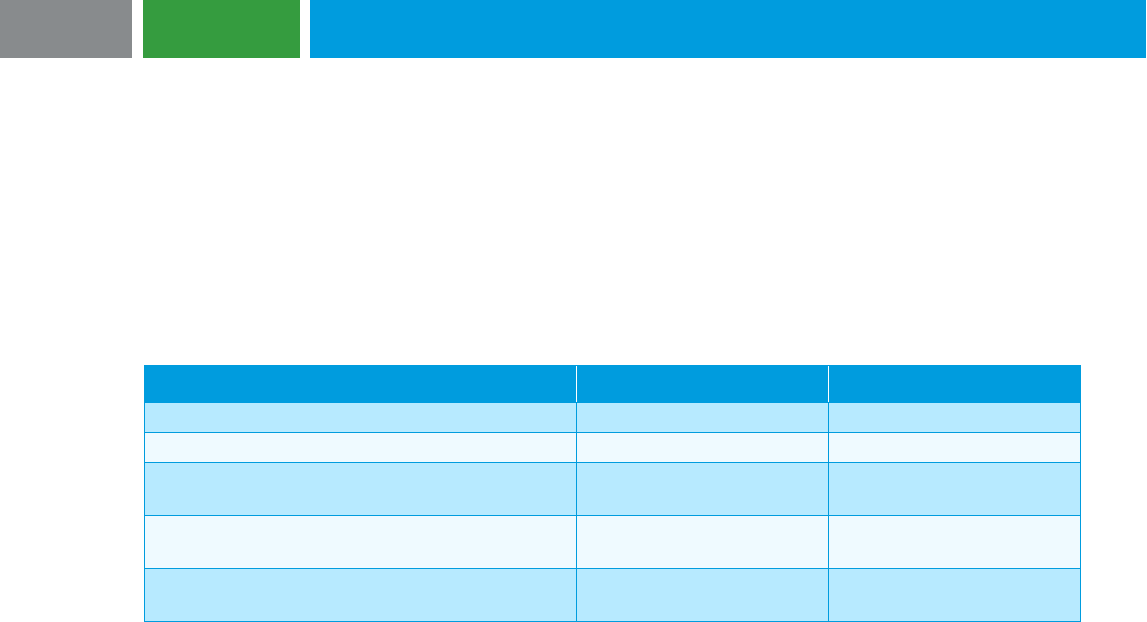
43
JUNE 2023
If the intermediary is acting as an agent of the borrower, then the intermediary’s involvement in the
transaction would not affect the borrower’s accounting for the modification or exchange (other than
needing to account for any fees paid or payable to the intermediary). In other words, the borrower will not
change their accounting treatment solely due to involving an intermediary that is acting as its agent in the
modification or exchange of loans. For accounting purposes, the borrower should effectively look through
an intermediary that is acting as an agent, and any actions of the intermediary should be considered
actions of the borrower. Conversely, if the third-party intermediary is a principal in the modification or
exchange of a loan, then the borrower should treat the intermediary as the lender and not look through it
for accounting purposes.
A full analysis of the third-party intermediary’s role should be performed to determine whether it is acting
as a principal or an agent. Indicators to consider in this regard are presented in the following table:
Indicators
Principal
Agent of borrower
Intermediary places own funds at risk?
Yes
No
Basis of agreement with intermediary is…
Firmly committed
Best efforts
Borrower directs intermediary’s activities and
intermediary cannot act independently
No
Yes
Intermediary is subject to loss on transactions
entered into with lenders
Yes
No
Intermediary’s income is based on…
Value of borrower’s
security
Pre-established fee
Commentary: Legal counsel may need to be consulted when analyzing whether a third-party
intermediary is acting as a principal or an agent of the borrower in the exchange or modification of loans.
2.3.9 Transactions between lenders
Relevant guidance: ASC 470-50-40-7 and ASC 470-50-55-6
To the extent there are multiple lenders involved in a loan (e.g., bonds sold to several different parties,
several banks in a loan arrangement), transfers or exchanges between the lenders do not result in a
modification or exchange for the borrower. The borrower is not affected in this situation unless funds pass
through the borrower or an agent of the borrower. To the extent an intermediary is involved in a transfer
or exchange between lenders, consideration should be given to whether the intermediary is functioning as
a principal or an agent in the transfer or exchange (see Section 2.3.8). When the intermediary is
functioning as a principal in a transfer or exchange between lenders, it should be considered a lender.
2.4 Modification of a line-of-credit arrangement
Relevant guidance: ASC 470-50-40-21 to 40-23, and ASC 470-50-55-10 to 55-13
A borrower often incurs direct costs (e.g., lender’s fee, third-party legal costs) upon entering a line-of-
credit arrangement which should be deferred and amortized over the term of the arrangement. When
there is a modification or exchange involving a line-of-credit arrangement, the borrower must first
determine whether the modification or exchange should be accounted for as a TDR. If not, the question
arises regarding the accounting for any related preexisting unamortized deferred costs. To answer this
question, the borrower must compare the borrowing capacity of the old arrangement to the borrowing
capacity of the new arrangement. In addition, the borrower must also account for any direct costs incurred
to execute the modification or exchange.
The borrowing capacity of the old arrangement is determined by taking the arrangement’s commitment
amount and multiplying it by the arrangement’s remaining term at the date of the modification or
exchange. The borrowing capacity of the new or modified arrangement is determined by taking the new

44
JUNE 2023
or modified arrangement’s commitment amount and multiplying it by the term of the new or modified
arrangement.
For example, if the borrower has a line-of-credit arrangement whose remaining term is three years and
the amount available under the line-of-credit arrangement (i.e., the commitment amount) is $10 million,
the borrowing capacity of that old line-of credit arrangement is $30 million ($10 million commitment
amount × 3-year remaining term).
As illustrated in the table below, accounting for the preexisting unamortized deferred costs related to the
line-of-credit arrangement depends on the change in the line-of-credit arrangement’s borrowing capacity,
while any direct costs incurred to execute the modification or exchange are deferred and amortized over
the term of the new arrangement:
Change in borrowing
capacity?
Preexisting unamortized
deferred costs
Costs incurred in connection
with modification
Increase (borrowing capacity of
new arrangement is greater than
the borrowing capacity of old
arrangement) or no change
(borrowing capacity of the new
arrangement is equal to the
borrowing capacity of old
arrangement)
Defer and amortize over term of
new arrangement
Defer and amortize over term of
new arrangement
Decrease (borrowing capacity of
new arrangement is less than
borrowing capacity of old
arrangement)
Write off in proportion to the
decrease in borrowing capacity;
for portion not written off, defer
and amortize over term of new
arrangement
Defer and amortize over term of
new arrangement
Any preexisting unamortized deferred costs written off as a result of applying this guidance should be
reported as a separate line item in the income statement.
The amount of unamortized deferred costs at the balance-sheet date may be presented in the balance
sheet as either: (a) an asset or (b) a reduction of the carrying amount of debt, but only to the extent there
is a debt balance.
The above assessment should be made on a lender-by-lender basis. If a lender exits the line-of-credit
arrangement completely, then all unamortized costs associated with that lender should be expensed.
An increase or decrease in the fair value of a freestanding equity-classified written call option held by a
lender or a third party that was modified together with a line-of-credit arrangement held by the same
lender is accounted in the same manner as fees paid in connection with the line-of-credit arrangement
modification.
Example 3.13 and Example 3.14 illustrate the application of this guidance.
2.4.1 Modifications of undrawn delayed-draw term loan commitments
Commentary: We believe the accounting guidance for modifications of line-of-credit commitments also
applies to modifications of undrawn DDTL commitments.
2.5 Changing from term loan to line-of-credit and vice versa
Relevant guidance: ASC 470-50-40-21
Section 2.3 discuss how to account for changes to a term loan that do not result in a TDR (term loan
guidance). Section 2.4 discusses how to account for changes to a line-of-credit arrangement that do not

45
JUNE 2023
result in a TDR (line-of-credit guidance). In some cases, a borrower may replace a line-of-credit
arrangement with a term loan with the same lender (i.e., a line-of-credit arrangement is converted to a
term loan), or a borrower may replace a term loan with a line-of-credit arrangement with the same lender
(i.e., a term loan is converted to a line-of-credit arrangement).
When the borrower replaces a line-of-credit with a term loan with the same lender (see Section 1.1), and
the replacement should not be accounted for as a TDR, the line-of-credit guidance should be applied to
account for that change.
Commentary: ASC 470-50 does not address how a borrower should account for the replacement of a
term loan with a line-of-credit arrangement with the same lender (see Section 1.1). However, as
discussed earlier in this section, the replacement of a line-of-credit arrangement with a term loan with the
same lender should be accounted for using the line-of-credit arrangement guidance, which is consistent
with the nature of the credit facility before it was changed. By analogy, we believe that the replacement of
a term loan with a line-of-credit should be accounted for using the term loan guidance, which is consistent
with the nature of the credit facility before it was changed.
2.6 Debt disclosures
Relevant guidance: ASC 470-10-50-5, ASC 505-10-50-3; for public entities SEC Regulation S-X,
Rules 4-08 and 5-02
The Codification requires a relatively limited number of disclosures about an entity’s borrowings.
Disclosure requirements include information, in summary form, about the rights and privileges of the
outstanding debt. A few of these disclosure requirements have been noted elsewhere in this guide. The
SEC requires more disclosures about a public company’s debt. Required disclosures for public
companies include the amount of each debt instrument, their nature and interest rate, maturity date, the
priority of the debt (i.e., if the debt is senior debt or subordinated debt) and whether the debt is
convertible. Disclosures are also required if there are any contingencies related to payments of principal
or interest. Further, a public company must disclose significant changes in the authorized or outstanding
debt amounts that occurred since the latest balance sheet date.
Commentary: In the absence of a specific disclosure requirement, a borrower should still consider
whether the users of its financial statements would be interested in, or influenced by, information
pertaining to the entity’s debts. For example, even though there is not a specific requirement that calls for
the disclosure of changes to a loan and whether those changes were accounted for using the modification
or extinguishment accounting model, the borrower should still consider whether the users of its financial
statements would find information about the changes and related accounting helpful and relevant. In
general, if the user of the financial statements would be influenced by such information, then it should be
disclosed. The extent of the disclosures would vary depending on the facts and circumstances.

46
JUNE 2023
3 Examples
3.1 Liability derecognition threshold (Section 2.1.1)
Facts
Borrower and Lender entered into a debt agreement on March 31, 20X1, with the following terms:
• Principal amount is $5 million
• Stated interest rate is 10%
• Principal is repayable in one lump sum on March 31, 20X6
• Interest is payable annually in arrears on March 31
• Term is five years
• There is no embedded conversion option
• There is a prepayment penalty of 5% if the debt is paid off prior to March 31, 20X4
Lender charged Borrower a lender fee of $100,000 and Borrower incurred $50,000 in third-party debt
issuance costs, which was accrued, but not yet paid as of March 31, 20X1. Borrower’s debt is not rated
by a credit rating agency. Borrower has not elected to account for its debt using the fair value option.
There are no other outstanding loans with Lender and Lender does not have an equity investment in
Borrower. Borrower recognizes interest expense using the effective interest method (see Section 1.3).
Borrower records the following journal entry on March 31, 20X1:
Debit
Credit
Cash ($5 million principal – $100,000 lender fee)
$4,900,000
Debt discount ($100,000 lender fee + $50,000 debt issuance costs)
150,000
Debt
$5,000,000
Payable to third party (for debt issuance costs)
50,000
In addition, Borrower determines that its effective interest rate for the purpose of recognizing interest
expense over the term of the debt is approximately 10.8%. Borrower determined this by using the
following inputs in a present value software tool:
• Compounding period: Annual
• Net carrying amount of the debt on March 31, 20X1: $4,850,000 ($5 million principal amount −
$150,000 debt discount)
• Interest payments: $500,000 each year starting on March 31, 20X2 and ending on March 31,
20X6 ($5 million principal amount × 10% stated interest rate)
• Principal repayment: $5 million on March 31, 20X6
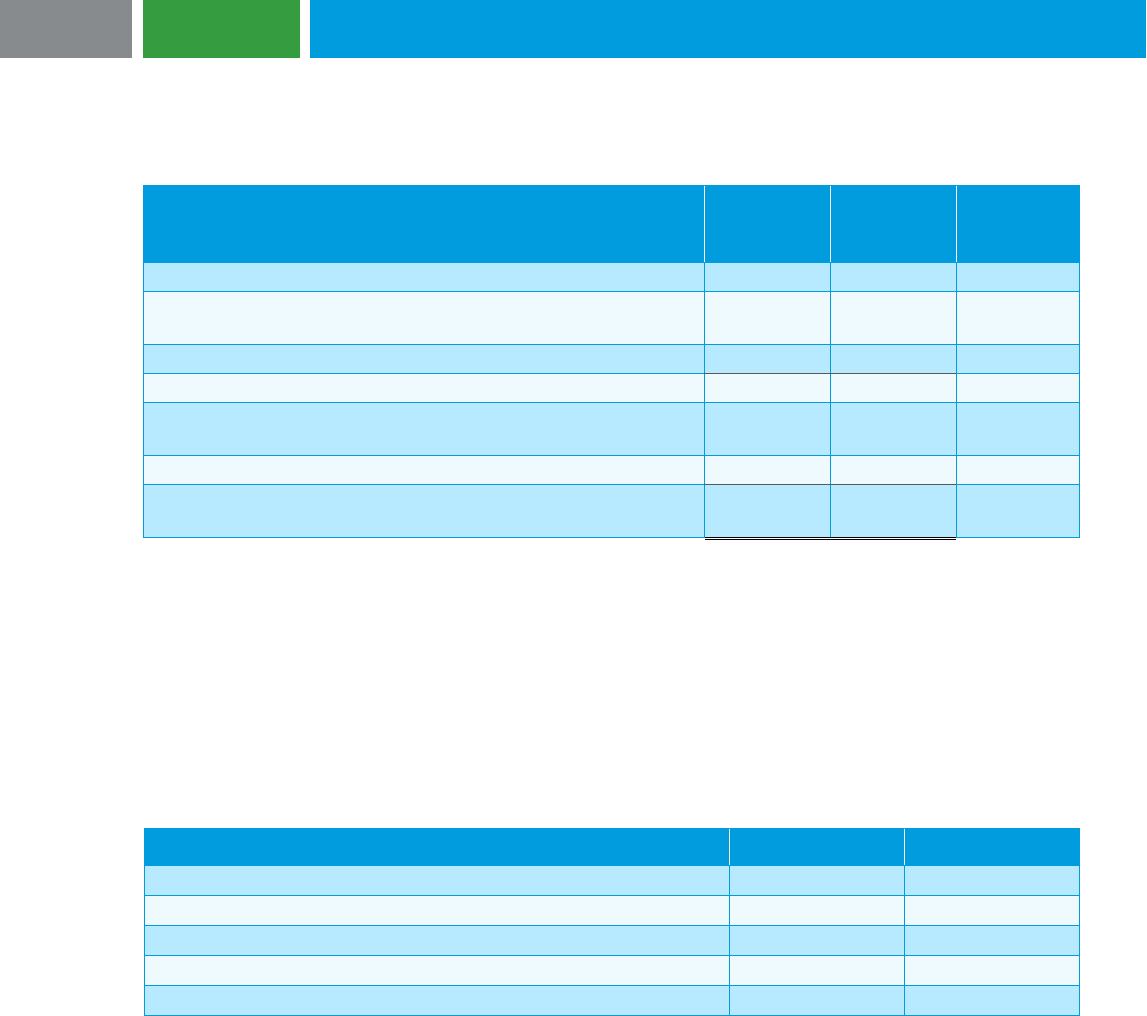
47
JUNE 2023
Changes are made to the debt on March 31, 20X3. The following includes a roll forward of the debt
discount and the carrying amount of the debt (debt principal net of debt discount) from after its issuance
on March 31, 20X1 to before it is changed on March 31, 20X3, as well as the interest expense recognized
in the twelve months ending March 31, 20X2 and 20X3:
Debt
discount
Carrying
amount of
debt
Interest
expense
Balance on March 31, 20X1
$150,000
$4,850,000
Amortization of debt discount ($500,000 interest payment –
$524,178 interest expense)
(24,178)
24,178
Interest expense ($4,850,000 × 10.8%)
$524,178
Balance on March 31, 20X2
$125,822
$4,874,178
Amortization of debt discount ($500,000 interest payment –
$526,791 interest expense)
(26,791)
26,791
Interest expense ($4,874,178 × 10.8%)
$526,791
Balance on March 31, 20X3 before changes are made to the
debt
$99,031
$4,900,969
On March 31, 20X3, Borrower decides to extinguish the debt with Lender early, but as part of the
negotiation process, Borrower and Lender agree to modify the debt so that there is only a 2% prepayment
penalty. Upon paying Lender the principal amount of $5 million, a prepayment penalty of $100,000 and
the interest otherwise due on March 31, 20X3 of $500,000, Borrower is relieved of its obligation under the
debt agreement. Borrower is not experiencing financial difficulties on March 31, 20X3.
Analysis
Borrower determines that the liability derecognition threshold has been met, due to the fact that the
borrower was relieved of its obligation after paying the lender and because the borrower and lender did
not enter into new loans nor were there any other preexisting term loans between the borrower and the
lender. As a result, the borrower records the following journal entry on March 31, 20X3:
Debit
Credit
Debt
$5,000,000
Accrued interest payable
500,000
Loss on early extinguishment of debt (Note 1)
199,031
Cash
$5,600,000
Debt discount
99,031
Note 1: $99,031 derecognition of debt discount + $100,000 prepayment penalty
Even though the liability derecognition threshold has been met, Borrower considers whether the changes
to the debt meet the definition of a TDR for disclosure purposes. Because Borrower is not experiencing
financial difficulties, it determines that the changes to the debt do not meet the definition of a TDR.
3.2 TDR with modification of terms in which no gain is recognized (Section 2.2.4.3)
Facts
Borrower and Lender entered into a debt agreement on March 31, 20X1, with the following terms:
• Principal amount is $5 million
• Stated interest rate is 10%

48
JUNE 2023
• Principal is repayable in one lump sum on March 31, 20X6
• Interest is payable annually in arrears on March 31
• Term is five years
• There is no embedded conversion option
Lender charged Borrower a lender fee of $100,000 and Borrower incurred $50,000 in third-party debt
issuance costs. Borrower’s debt is not rated by a credit rating agency. Borrower has not elected to
account for its debt using the fair value option. There are no other outstanding loans with Lender and
Lender does not have an equity investment in Borrower. Borrower recognizes interest expense using the
effective interest method (see Section 1.3).
Borrower records the following journal entry on March 31, 20X1:
Debit
Credit
Cash ($5 million principal – $100,000 lender fee)
$4,900,000
Debt discount ($100,000 lender fee + $50,000 debt issuance costs)
150,000
Debt
$5,000,000
Payable to third party (for debt issuance costs)
50,000
Borrower determines that its effective interest rate for the purpose of recognizing interest expense over
the term of the debt is approximately 10.8%.
Changes are made to the debt on March 31, 20X3. The debt discount and carrying amount of the debt on
March 31, 20X3 before the debt is changed are $99,031 and $4,900,969, respectively.
Due to increased competitive pressures and unexpected increases in its operating costs, Borrower is
falling behind its financial projections to a significant degree, and its cash flows in recent periods are
lagging significantly behind its cash flows in comparable prior periods. As such, Borrower is unable to
make the interest payment required ($500,000) on March 31, 20X3. In addition, Borrower’s revised
projections do not show sufficient cash flows in the remainder of 20X3 and beginning of 20X4 to support
making the interest payment required on March 31, 20X4. Borrower attempts to identify other sources of
financing and discovers that its financial situation severely hinders its ability to do so. In other words,
other lenders are either not willing to lend to Borrower or are only willing to lend to Borrower at extremely
disadvantageous terms.
On March 31, 20X3, Borrower and Lender agree to change the terms of the debt agreement in the
following ways:
• Principal amount is reduced to $4 million.
• Principal is still repayable in one lump sum; however, the due date is extended to March 31,
20X8.
• Accrued and unpaid interest of $500,000 is forgiven.
The stated interest rate remains 10%. Borrower incurred $50,000 in third-party costs related to making
changes to the debt.
Analysis
Borrower first determines that the liability derecognition threshold has not been met because it has not
been relieved of its obligation under the debt, nor has it been legally released as the primary obligor
under the debt.
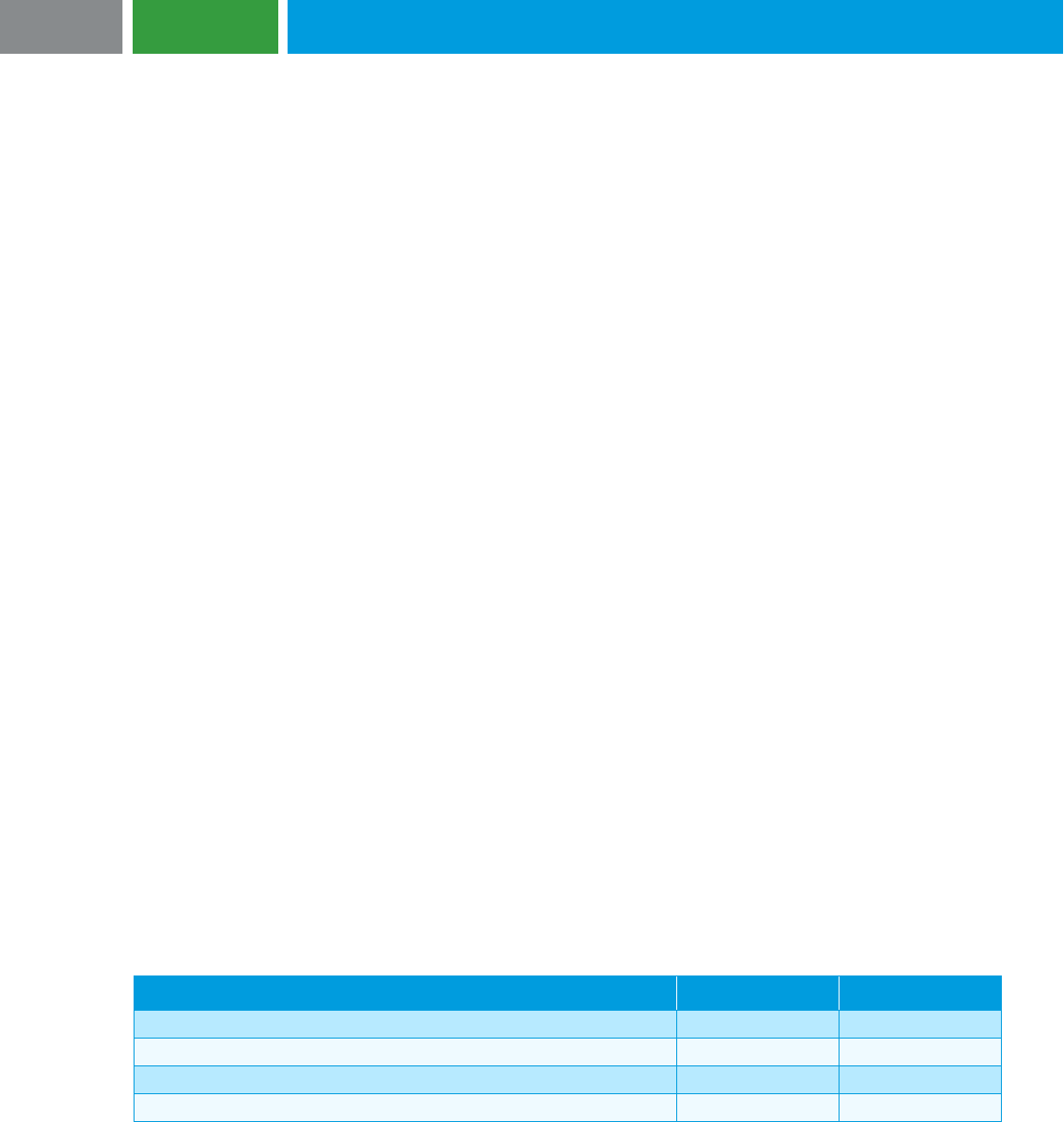
49
JUNE 2023
Borrower next determines that its creditworthiness has deteriorated and that it is experiencing financial
difficulties for the following reasons:
• It has fallen behind its financial projections to a significant degree.
• Its cash flows in recent periods are lagging significantly behind its cash flows in comparable prior
periods.
• It is not able to service its debt because it cannot make the interest payment that was otherwise
required on March 31, 20X3.
• Its revised projections do not show sufficient cash flows in the remainder of 20X3 and beginning
of 20X4 to support making the interest payment required on March 31, 20X4.
• Other lenders are either not willing to lend to it or are only willing to lend to it at extremely
disadvantageous terms.
Borrower next calculates the effective interest rate on the changed debt (for the purpose of determining
whether Lender has granted it a concession) to be approximately 2.5% by using the following inputs in a
present value software tool:
• Compounding period: Annual
• Net carrying amount of the debt on March 31, 20X3: $5,400,969 ($4,900,969 carrying amount of
the debt prior to the changes + $500,000 of accrued and unpaid interest)
• Interest payments: $400,000 each year starting on March 31, 20X4 and ending on March 31,
20X8 ($4 million principal amount after the changes × 10% stated interest rate)
• Principal repayment: $4 million after the changes on March 31, 20X8
Borrower determines that Lender has granted a concession because the effective interest rate on the
debt after the restructuring of 2.5% is less than the effective interest rate on the debt before the
restructuring of 10.8%.
Because Borrower is experiencing financial difficulties and Lender has granted a concession, Borrower
concludes it should account for the changes to the debt as a TDR. To properly account for the changes to
the debt as a TDR, Borrower must first determine whether the total cash outflows required under the
restructured debt are more or less than the current carrying amount of the debt. Borrower determines that
the total cash outflows required under the restructured debt are $6 million, which consists of repaying
principal in the amount of $4 million and making five annual interest payments of $400,000 ($4 million
principal amount × 10% stated interest rate). Because total cash outflows expected under the restructured
debt ($6 million) are greater than the carrying amount of the debt prior to the restructuring ($5,400,969),
Borrower concludes that no gain results from the TDR. As such, Borrower records the following journal
entry on March 31, 20X3 to expense the third-party costs incurred in conjunction with the restructuring
and reclassify the accrued interest to include it in the carrying amount of the debt:
Debit
Credit
Accrued interest payable
$500,000
Other expense (Note 1)
50,000
Debt
$500,000
Payable to third party
50,000
Note 1: Direct costs incurred with third parties in connection with a TDR are expensed as incurred (see Section
2.2.5)
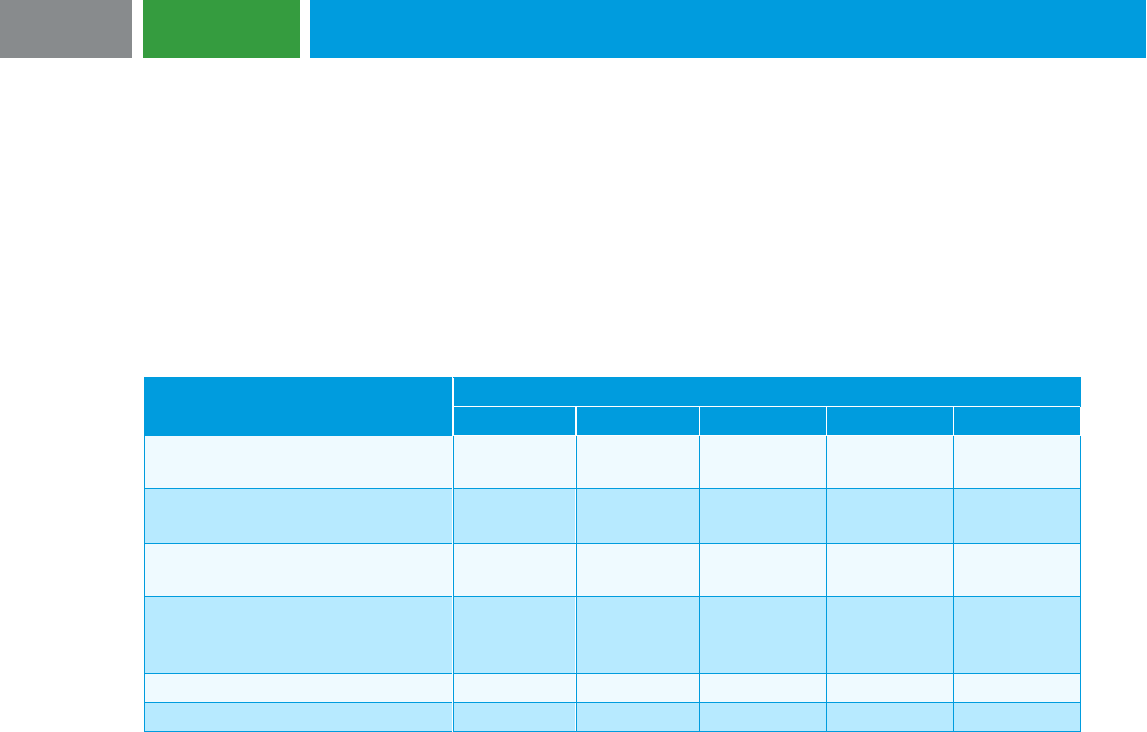
50
JUNE 2023
On a going-forward basis, Borrower recognizes interest expense using the effective interest rate on the
debt after the restructuring of 2.5% and recognizes the difference between interest paid and interest
expense as a reduction of the debt’s carrying amount.
Commentary
It is important to note that the carrying amount of the debt was not reduced on the date the debt was
changed to reflect the $1 million of principal and $500,000 of accrued and unpaid interest forgiven by
Lender. Instead, in accordance with Section 2.2.4.3, those forgiven amounts are removed from the debt’s
carrying amount as a result of recognizing interest expense at a rate of 2.5% while paying interest at a
rate of 10%. Provided below is an amortization table for the debt (assuming no further changes are made
to the debt), which illustrates the reduction in principal over time to remove the forgiven amounts from the
carrying amount of the debt:
March 31
20X4
20X5
20X6
20X7
20X8
Interest expense (beginning
carrying amount × 2.5%)
$133,300
$126,718
$119,973
$113,061
$105,979
Interest payment
($4 million × 10%)
$400,000
$400,000
$400,000
$400,000
$400,000
Beginning carrying amount of
debt
$5,400,969
$5,134,269
$4,860,987
$4,580,960
$4,294,021
Reduction in carrying amount of
debt (interest payment –
interest expense)
(266,700)
(273,282)
(280,027)
(286,939)
(294,021)
Principal repayment
(4,000,000)
Ending carrying amount of debt
$5,134,269
$4,860,987
$4,580,960
$4,294,021
$ -
3.3 TDR with modification of terms in which a gain is recognized (Section 2.2.4.3)
Facts
Borrower and Lender entered into a debt agreement on March 31, 20X1, with the following terms:
• Principal amount is $5 million
• Stated interest rate is 10%
• Principal is repayable in one lump sum on March 31, 20X6
• Interest is payable annually in arrears on March 31
• Term is five years
• There is no embedded conversion option
Lender charged Borrower a lender fee of $100,000 and Borrower incurred $50,000 in third-party debt
issuance costs. Borrower’s debt is not rated by a credit rating agency. Borrower has not elected to
account for its debt using the fair value option. There are no other outstanding loans with Lender and
Lender does not have an equity investment in Borrower. Borrower recognizes interest expense using the
effective interest method (see Section 1.3).

51
JUNE 2023
Borrower records the following journal entry on March 31, 20X1:
Debit
Credit
Cash ($5 million principal – $100,000 lender fee)
$4,900,000
Debt discount ($100,000 lender fee + $50,000 debt issuance costs)
150,000
Debt
$5,000,000
Payable to third party (for debt issuance costs)
50,000
Borrower determines that its effective interest rate for the purpose of recognizing interest expense over
the term of the debt is approximately 10.8%.
Changes are made to the debt on March 31, 20X3. The debt discount and carrying amount of the debt on
March 31, 20X3 before the debt is changed are $99,031 and $4,900,969, respectively.
Due to increased competitive pressures and unexpected increases in its operating costs, Borrower is
falling behind its financial projections to a significant degree, and its cash flows in recent periods are
lagging significantly behind its cash flows in comparable prior periods. As such, Borrower is unable to
make the interest payment required ($500,000) on March 31, 20X3. In addition, Borrower’s revised
projections do not show sufficient cash flows in the remainder of 20X3 and beginning of 20X4 to support
making the interest payment required on March 31, 20X4. Borrower attempts to identify other sources of
financing and discovers that its financial situation severely hinders its ability to do so. In other words,
other lenders are either not willing to lend to Borrower or are only willing to lend to Borrower at extremely
disadvantageous terms.
On March 31, 20X3, Borrower and Lender agree to change the terms of the debt agreement in the
following ways:
• Principal amount is reduced to $3.5 million.
• Principal is still repayable in one lump sum; however, the due date is extended to March 31,
20X8.
• Accrued and unpaid interest of $500,000 is forgiven.
The stated interest rate remains 10%. Borrower incurred $50,000 in third-party costs related to making
changes to the debt.
Analysis
Borrower first determines that the liability derecognition threshold has not been met because it has not
been relieved of its obligation under the debt nor has it been legally released as the primary obligor under
the debt.
Borrower next determines that its creditworthiness has deteriorated and that it is experiencing financial
difficulties for the following reasons:
• It has fallen behind its financial projections to a significant degree.
• Its cash flows in recent periods are lagging significantly behind its cash flows in comparable prior
periods.
• It is not able to service its debt because it cannot make the interest payment that was otherwise
required on March 31, 20X3.
• Its revised projections do not show sufficient cash flows in the remainder of 20X3 and beginning
of 20X4 to support making the interest payment required on March 31, 20X4.

52
JUNE 2023
• Other lenders are either not willing to lend to it or are only willing to lend to it at extremely
disadvantageous terms.
Borrower next calculates the effective interest rate on the changed debt (for the purpose of determining
whether Lender has granted it a concession) to be approximately -0.7% by using the following inputs in a
present value software tool:
• Compounding period: Annual
• Net carrying amount of the debt on March 31, 20X3: $5,400,969 ($4,900,969 carrying amount of
the debt prior to the changes + $500,000 of accrued and unpaid interest)
• Interest payments: $350,000 each year starting on March 31, 20X4 and ending on March 31,
20X8 ($3,500,000 principal amount after the changes × 10% stated interest rate)
• Principal repayment: $3,500,000 after the changes on March 31, 20X8
Borrower determines that Lender has granted a concession because the effective interest rate on the
debt after the restructuring of -0.7% is less than the effective interest rate on the debt before the
restructuring of 10.8%.
Because Borrower is experiencing financial difficulties and Lender has granted a concession, Borrower
concludes it should account for the changes to the debt as a TDR. To properly account for the changes to
the debt as a TDR, Borrower must first determine whether the total cash outflows required under the
restructured debt are more or less than the current carrying amount of the debt. Borrower determines that
the total cash outflows required under the restructured debt are $5.25 million, which consists of repaying
principal in the amount of $3.5 million and making five annual interest payments of $350,000 ($3,500,000
principal amount × 10% stated interest rate). Because total cash outflows expected under the restructured
debt ($5.25 million) are less than the carrying amount of the debt prior to the restructuring ($5,400,969),
Borrower concludes that a gain should be recognized for the TDR. As a result, Borrower records the
following journal entry on March 31, 20X3 to account for the restructuring:
Debit
Credit
Accrued interest payable
$500,000
Debt discount (Note 1)
150,969
Debt
$500,000
Gain on TDR (Note 2)
100,969
Payable to third party
50,000
Note 1: $5,400,969 carrying amount of the debt prior to the restructuring − $5,250,000 total cash outflows
expected under the restructured debt
Note 2: ($5,400,969 carrying amount of the debt prior to the restructuring − $5,250,000 total cash outflows
expected under the restructured debt) − $50,000 of third-party costs incurred in conjunction with the
restructuring
After the recognition of the gain on restructuring, the adjusted carrying amount of the debt is equal to the
total cash flows expected on the restructured debt. Borrower therefore recognizes no further interest
expense and reduces the carrying amount of the debt for the interest and principal paid.
3.4 TDR with transfer of assets and modification of terms(Section 2.2.4.4)
Facts
Borrower and Lender entered into a debt agreement on March 31, 20X1, with the following terms:
• Principal amount is $5 million

53
JUNE 2023
• Stated interest rate is 10%
• Principal is repayable in one lump sum on March 31, 20X6
• Interest is payable annually in arrears on March 31
• Term is five years
• There is no embedded conversion option
Lender charged Borrower a lender fee of $100,000 and Borrower incurred $50,000 in third-party debt
issuance costs. Borrower’s debt is not rated by a credit rating agency. Borrower has not elected to
account for its debt using the fair value option. There are no other outstanding loans with Lender and
Lender does not have an equity investment in Borrower. Borrower recognizes interest expense using the
effective interest method (see Section 1.3).
Borrower records the following journal entry on March 31, 20X1:
Debit
Credit
Cash ($5 million principal – $100,000 lender fee)
$4,900,000
Debt discount ($100,000 lender fee + $50,000 debt issuance costs)
150,000
Debt
$5,000,000
Payable to third party (for debt issuance costs)
50,000
Borrower determines that its effective interest rate for the purpose of recognizing interest expense over
the term of the debt is approximately 10.8%.
Changes are made to the debt on March 31, 20X3. The debt discount and carrying amount of the debt on
March 31, 20X3 before the debt is changed are $99,031 and $4,900,969, respectively.
Due to increased competitive pressures and unexpected increases in its operating costs, Borrower is
falling behind its financial projections to a significant degree, and its cash flows in recent periods are
lagging significantly behind its cash flows in comparable prior periods. As such, Borrower is unable to
make the interest payment required ($500,000) on March 31, 20X3. In addition, Borrower’s revised
projections do not show sufficient cash flows in the remainder of 20X3 and beginning of 20X4 to support
making the interest payment required on March 31, 20X4. Borrower attempts to identify other sources of
financing and discovers that its financial situation severely hinders its ability to do so. In other words,
other lenders are either not willing to lend to Borrower or are only willing to lend to Borrower at extremely
disadvantageous terms.
On March 31, 20X3, Borrower transfers a building to Lender in partial settlement of the debt, and the
remaining principal amount of the debt is reduced to $3 million. The gross carrying amount of the building
and the related accumulated depreciation are $2 million and $500,000, respectively, for a net carrying
amount of $1.5 million. The fair value of the building at the date of transfer is $1.8 million. Borrower and
Lender also agree to change the terms of the debt agreement in the following ways:
• The remaining principal amount is still repayable in one lump sum; however, the due date is
extended to March 31, 20X8.
• Accrued and unpaid interest of $500,000 is forgiven.
The stated interest rate remains 10%. Borrower incurred $50,000 in third-party costs related to making
changes to the debt.
Analysis
Borrower first determines that the changes to the debt do not meet the liability derecognition threshold
because there is continuing debt with the same lender.

54
JUNE 2023
Borrower next determines that its creditworthiness has deteriorated and that it is experiencing financial
difficulties for the following reasons:
• It has fallen behind its financial projections to a significant degree.
• Its cash flows in recent periods are lagging significantly behind its cash flows in comparable prior
periods.
• It is not able to service its debt because it cannot make the interest payment that was otherwise
required on March 31, 20X3.
• Its revised projections do not show sufficient cash flows in the remainder of 20X3 and beginning
of 20X4 to support making the interest payment required on March 31, 20X4.
• Other lenders are either not willing to lend to it or are only willing to lend to it at extremely
disadvantageous terms.
Borrower next calculates the effective interest rate on the changed debt (for purposes of determining
whether Lender has granted it a concession) to be approximately 5.3% using the following inputs in a
present value software tool:
• Compounding period: Annual
• Net carrying amount of the debt on March 31, 20X3: $3,600,969 ($4,900,969 carrying amount of
the debt prior to the changes + $500,000 of accrued and unpaid interest − $1,800,000 fair value
of the building transferred to Lender)
• Interest payments: $300,000 each year starting on March 31, 20X4 and ending on March 31,
20X8 ($3 million principal amount after the changes × 10% stated interest rate)
• Principal repayment: $3 million after the changes on March 31, 20X8
Borrower determines that Lender has granted a concession because the effective interest rate on the
debt after the restructuring of 5.3% is less than the effective interest rate on the debt before the
restructuring of 10.8%.
First, Borrower records the following journal entry to recognize a gain of $300,000 for the excess of the
fair value of the building ($1.8 million) over its net carrying amount ($1.5 million):
Debit
Credit
Debt (Note 1)
$1,800,000
Accumulated depreciation
500,000
Building
$2,000,000
Gain on transfer of a building
300,000
Note 1: Because the debt is only partially settled in the TDR, the fair value of assets transferred is used to reduce
the carrying amount of the debt (see Section 2.2.4.4)
Because Borrower is experiencing financial difficulties and Lender has granted a concession, Borrower
concludes it should account for the changes to the debt as a TDR. To properly account for the changes to
the debt as a TDR, Borrower determines whether the total cash outflows required under the restructured
debt are more or less than the carrying amount of the debt after it is reduced by the fair value of the
building. Borrower determines that the total cash outflows required under the restructured debt are $4.5
million, which consists of repaying principal in the amount of $3 million and making five annual interest
payments of $300,000 ($3 million principal amount × 10% stated interest rate). Because total cash
outflows expected under the restructured debt ($4.5 million) are greater than the carrying amount of the
debt after it is reduced by the fair value of the building ($3,600,969), Borrower concludes that no gain on
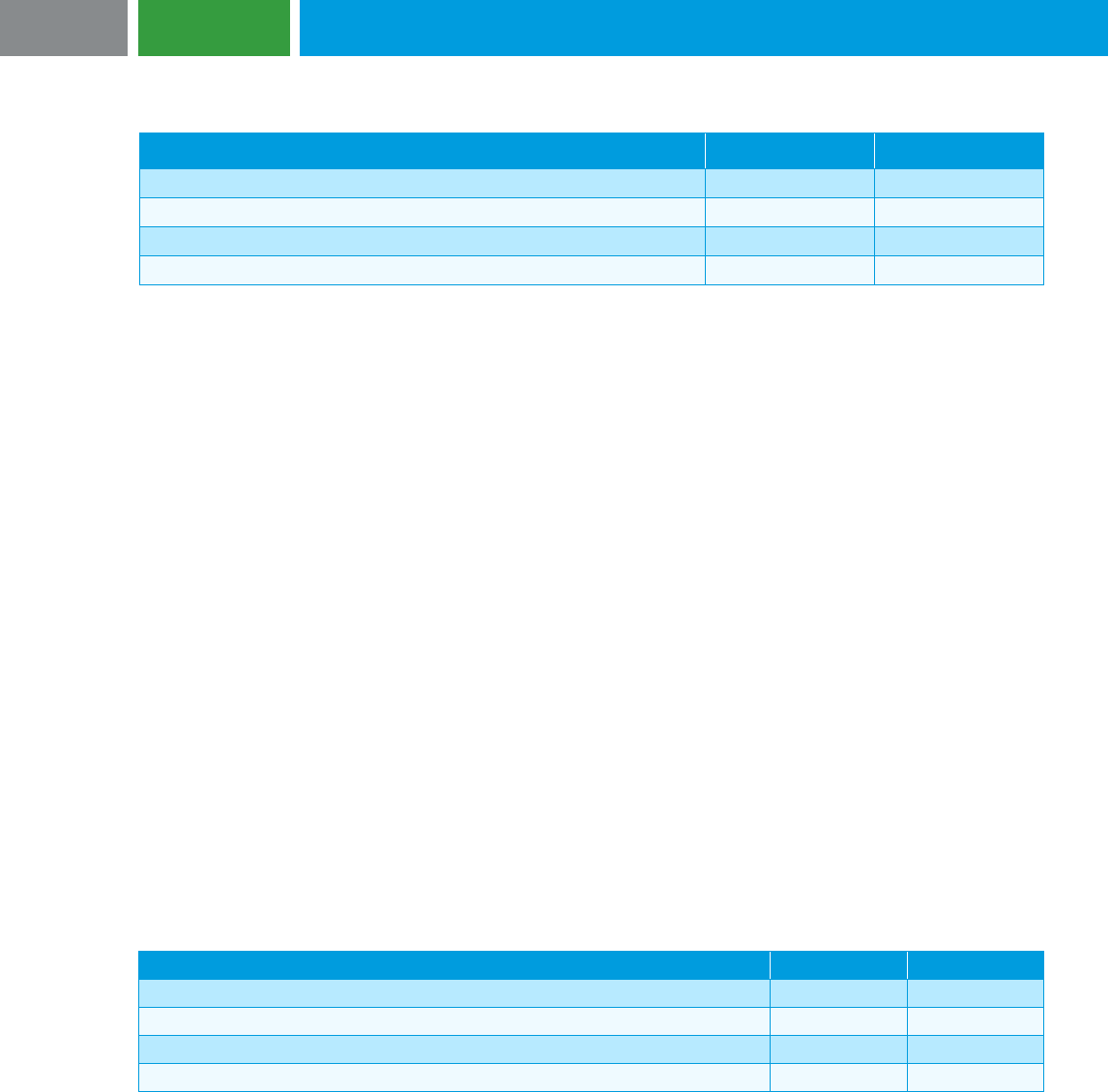
55
JUNE 2023
the TDR should be recognized. As a result, Borrower records the following journal entry on March 31,
20X3 to account for the TDR:
Debit
Credit
Accrued interest payable
$500,000
Other expense
50,000
Debt
$500,000
Payable to third party
50,000
On a going-forward basis, Borrower recognizes interest expense using the effective interest rate on the
debt after the restructuring of 5.3% and recognizes the difference between the interest paid and interest
expense as a reduction of the debt’s carrying amount.
3.5 Changes to prepayable debt that result in modification accounting (Section 2.3.2.1)
Facts
Borrower and Lender entered into a debt agreement on March 31, 20X1, with the following terms:
• Principal amount is $5 million
• Stated interest rate is 10%
• Principal is repayable in one lump sum on March 31, 20X6
• Interest is payable annually in arrears on March 31
• Term is five years
• Prepayment is permitted; however, there is a requirement to pay a $150,000 penalty upon
prepayment
• There are covenants that Borrower must comply with on a quarterly basis.
• There is no embedded conversion option
Lender charged Borrower a lender fee of $100,000 and Borrower incurred $50,000 in third-party debt
issuance costs. Borrower’s debt is not rated by a credit rating agency. Borrower has not elected to
account for its debt using the fair value option. There are no other outstanding loans with Lender and
Lender does not have an equity investment in Borrower. Borrower recognizes interest expense using the
effective interest method (see Section 1.3).
Borrower records the following journal entry on March 31, 20X1:
Debit
Credit
Cash ($5 million principal – $100,000 lender fee)
$4,900,000
Debt discount ($100,000 lender fee + $50,000 debt issuance costs)
150,000
Debt
$5,000,000
Payable to third party (for debt issuance costs)
50,000
Borrower determines that its effective interest rate for purposes of recognizing interest expense over the
term of the debt is approximately 10.8%.
Changes are made to the debt on March 31, 20X3. The debt discount and carrying amount of the debt on
March 31, 20X3 before the debt is changed are $99,031 and $4,900,969, respectively.

56
JUNE 2023
Borrower pays interest of $500,000 ($5 million principal × 10% stated interest rate) on March 31, 20X3
and determines that it will be in compliance with the debt covenants as of that date. However, due to
planned plant expansion, Borrower does not expect to be in compliance with the debt covenants as of
June 30, 20X3. As such, Borrower negotiates with Lender to change the terms to reset the debt
covenants so that Borrower is expected to be in compliance as of June 30, 20X3 and throughout the
remaining term of the debt. In addition to resetting the debt covenants, Borrower and Lender also agree
to the following changes on March 31, 20X3:
• Extend the maturity date to March 31, 20X8
• Increase the stated interest rate to 13%
Borrower must pay a $100,000 fee to Lender as compensation for executing the changes to the debt. In
addition, Borrower incurs $50,000 of third-party costs with its lawyers related to making these changes to
the debt. The changes to the debt do not trigger the prepayment penalty. Borrower is not experiencing
financial difficulties (see Section 2.2.2.1).
Analysis
Borrower first determines that the liability derecognition threshold has not been met because it has not
been relieved of its obligation under the debt nor has it been legally released as the primary obligor under
the debt.
Borrower next determines that the changes to the debt do not meet the definition of a TDR because it is
not experiencing financial difficulties (see Section 2.2.2.1).
Lastly, Borrower must determine whether the changed debt is substantially different from the original debt
by applying the 10% cash flow test (see Section 2.3.2). In doing so, Borrower must determine the present
value of the original debt’s remaining cash flows and the present value of the changed debt’s cash flows.
Because the debt is prepayable, Borrower may need to perform the 10% cash flow test assuming that the
debt is prepaid and again assuming that the debt is not prepaid (see Section 2.3.2.1). If the difference in
cash flows is less than 10% under the assumption that the prepayment option will be exercised, the
modification accounting model should be applied, and it would not be necessary to perform the 10% cash
flow test assuming non-exercise of the prepayment option.
From an efficiency perspective, since the Borrower believes that the smaller change in cash flows will
result when assuming that the debt is prepaid, Borrower first applies the 10% cash flow test as of the date
of the change under that assumption.
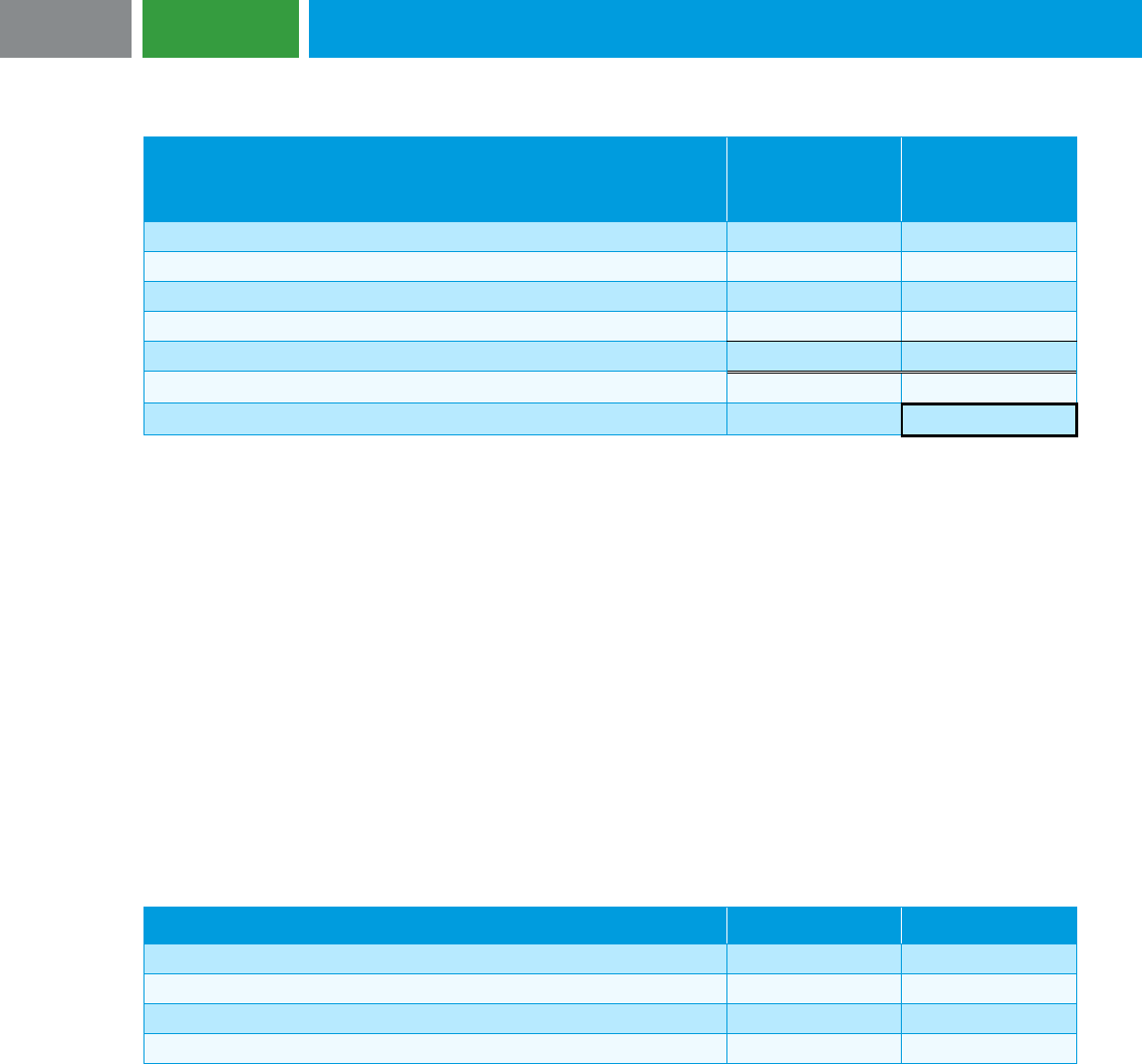
57
JUNE 2023
Following is the 10% cash flow test performed by Borrower assuming the debt is prepaid on March 31,
20X3 (the date the debt was changed):
Original debt’s
remaining cash
flows
Changed debt’s
cash flows
Principal repayment
$5,000,000
$5,000,000
Lender fee (Note 1)
-
100,000
Interest payments (Note 2)
-
-
Prepayment penalty (Note 3)
150,000
150,000
Present value of the remaining cash flows (Notes 4 and 5)
$5,150,000
$5,250,000
Difference
$100,000
% difference
1.9%
Note 1: The lender fee for the original debt is not included in the test because the test uses only the original debt’s
remaining cash flows.
Note 2: There are no interest payments reflected in the test because: (a) the modification was made on March 31,
20X3, (b) the interest payment made on March 31, 20X3 represents interest accrued through that date,
and (c) Borrower is assuming that the debt is prepaid on March 31, 20X3. In other words, no incremental
amount of interest would be due upon prepayment of the debt on March 31, 20X3.
Note 3: The prepayment penalty is included in this test because this example assumes that the debt is prepaid.
Note 4: No incremental present value calculations are needed when Borrower assumes the debt is prepaid on the
date the changes are made to the debt.
Note 5: The third-party costs for the original debt and changed debt are not included in the test because the test
should only reflect cash flows between the borrower and the lender (see Section 2.3.2).
Assuming prepayment on March 31, 20X3, the difference between the present value of the original debt’s
remaining cash flows and the present value of the changed debt’s cash flows is $100,000, or 1.9% of the
present value of the original debt’s remaining cash flows. Because the difference is less than 10% (and
an embedded conversion option is not part of the debt before or after the changes), the changes to the
debt should be accounted for as a modification. Borrower does not perform the 10% cash flow test again
assuming that the debt is not prepaid, because only one of the assumptions needs to result in a change
in cash flows of less than 10% to result in modification accounting (see Section 2.3.2.1).
Borrower records the following journal entry to account for the modification on March 31, 20X3:
Debit
Credit
Debt discount
$100,000
Legal fees expense (Note 1)
50,000
Payable to Lender
$100,000
Payable to third party
50,000
Note 1: Third-party costs are expensed as incurred when modification accounting is applied (see Section 2.3.5)
Even though the prepayment penalty was included in the 10% cash flow test under the assumption that
the debt was prepaid, Borrower did not actually pay the penalty because the debt was not prepaid. As
such, Borrower does not include the penalty in this journal entry.
For the purpose of accounting for the debt on a going-forward basis, Borrower calculates the effective
interest rate on the changed debt to be approximately 14.2% by using the following inputs in a present
value software tool:
• Compounding period: Annual

58
JUNE 2023
• Net carrying amount of the debt on March 31, 20X3: $4,800,969 ($4,900,969 carrying amount of
the debt prior to the modification − $100,000 lender fee recognized in the debt discount in
conjunction with the modification)
• Interest payments: $650,000 each year starting on March 31, 20X4 and ending on March 31,
20X8 ($5 million principal amount × 13% stated interest rate after the changes)
• Principal repayment: $5 million on March 31, 20X8
Borrower records the following journal entry when it makes the required interest payment on March 31,
20X4:
Debit
Credit
Interest expense (Note 1)
$680,012
Debt discount (Note 2)
$30,012
Cash (Note 3)
650,000
Note 1: $4,800,969 carrying amount of the debt after the modification × 14.2% effective interest rate after the
modification
Note 2: $680,012 interest expense (see Note 1) – $650,000 interest paid (see Note 3)
Note 3: $5 million principal amount × 13% stated interest rate after the modification
Commentary
If Borrower had not realized that it may have to consider the results of the 10% cash flow test under both
the assumption that the debt is prepaid as well as the assumption that it is not prepaid, it may have
reached an inappropriate conclusion that extinguishment accounting should be applied. As further
illustrated in Example 3.9, which is based on the same facts as this example, except prepayment is
specifically prohibited under the debt both before and after the changes are made, the difference between
the present value of the original debt’s remaining cash flows and the present value of the changed debt’s
cash flows is $606,107, or 12.4% of the present value of the original debt’s remaining cash flows.
If the only change in cash flows in this example was due to Borrower paying Lender a fee solely to obtain
a debt waiver letter for the expected noncompliance with the debt covenants as of June 30, 20X3 (i.e., no
change to the interest rate or maturity date), that change in cash flows should still be evaluated using the
10% cash flow test to determine whether Borrower should apply the modification or extinguishment
accounting model. This determination then dictates how the fee itself should be treated from an
accounting perspective. To the extent payment of a fee for a debt waiver letter is accounted for as a
modification, the fee is included in the debt discount (and included in the computation of the new effective
interest rate to recognize the remaining discount as interest expense over the remaining term of the loan)
and any costs incurred with third parties (e.g., Borrower’s legal fees) to help obtain the debt waiver letter
are expensed as incurred.
3.6 Changes to prepayable debt including incremental borrowings(Section 2.3.2.1)
Facts
Borrower and Lender entered into a debt agreement on March 31, 20X1, with the following terms:
• Principal amount is $5 million
• Stated interest rate is 10%
• Principal is repayable in one lump sum on March 31, 20X6
• Interest is payable annually in arrears on March 31
• Term is five years

59
JUNE 2023
• Prepayment is permitted; however, there is a requirement to pay a $150,000 penalty upon
prepayment
• There are covenants that Borrower must comply with on a quarterly basis
• There is no embedded conversion option
Lender charged Borrower a lender fee of $100,000 and Borrower incurred $50,000 in third-party debt
issuance costs. Borrower’s debt is not rated by a credit rating agency. Borrower has not elected to
account for its debt using the fair value option. There are no other outstanding loans with Lender and
Lender does not have an equity investment in Borrower. Borrower recognizes interest expense using the
effective interest method (see Section 1.3).
Borrower records the following journal entry on March 31, 20X1:
Debit
Credit
Cash ($5 million principal – $100,000 lender fee)
$4,900,000
Debt discount ($100,000 lender fee + $50,000 debt issuance costs)
150,000
Debt
$5,000,000
Payable to third party (for debt issuance costs)
50,000
Borrower determines that its effective interest rate for the purpose of recognizing interest expense over
the term of the debt is approximately 10.8%.
Changes are made to the debt on March 31, 20X3. The debt discount and carrying amount of the debt on
March 31, 20X3 before the debt is changed are $99,031 and $4,900,969, respectively.
Borrower pays interest of $500,000 ($5 million principal × 10% stated interest rate) on March 31, 20X3
and determines that it is in compliance with the debt covenants as of that date. However, due to planned
plant expansion, Borrower does not expect to be in compliance with the debt covenants as of June 30,
20X3 and throughout the remaining term of the debt. As such, Borrower negotiates with Lender to change
the terms to reset the debt covenants so that Borrower is expected to be in compliance as of June 30,
20X3 and throughout the remaining term of the debt. In addition to resetting the debt covenants, Borrower
and Lender also agree to the following changes on March 31, 20X3:
• Lender provides incremental borrowings of $2 million to Borrower (which increases the debt’s
principal amount to $7 million)
• Extend the maturity date to March 31, 20X8
• Increase the stated interest rate to 13%
Borrower must pay a $100,000 fee to Lender as compensation for executing the changes to the debt. In
addition, Borrower incurs $50,000 of third-party costs with its lawyers related to making these changes to
the debt. The changes to the debt do not trigger the prepayment penalty. Borrower is not experiencing
financial difficulties (see Section 2.2.2.1).
Analysis
Borrower first determines that the liability derecognition threshold has not been met because it has not
been relieved of its obligation under the debt nor has it been legally released as the primary obligor under
the debt.
Borrower next determines that the changes to the debt do not meet the definition of a TDR because it is
not experiencing financial difficulties (see Section 2.2.2.1).
Lastly, Borrower determines whether the changed debt is substantially different from the original debt by
applying the 10% cash flow test (see Section 2.3.2). In doing so, Borrower must determine the present
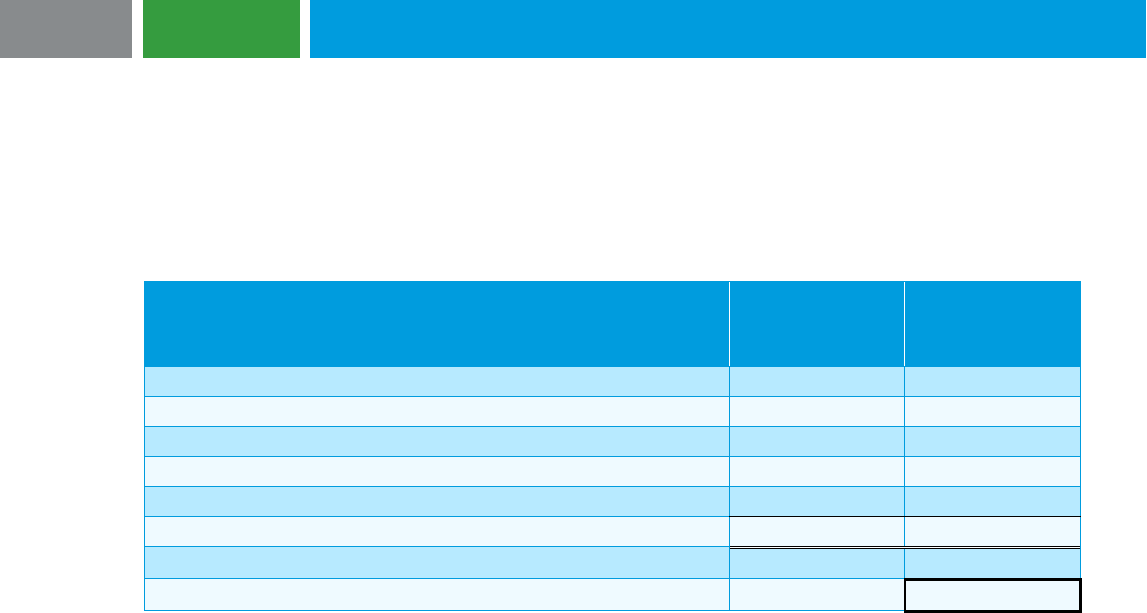
60
JUNE 2023
value of the original debt’s remaining cash flows and the present value of the changed debt’s cash flows.
Because the debt is prepayable, Borrower may need to perform the 10% cash flow test assuming that the
debt is prepaid and again assuming that the debt is not prepaid.
Borrower believes that the smaller change in cash flows will result when assuming that the debt is
prepaid. As such, Borrower first applies the 10% cash flow test under that assumption.
Following is the 10% cash flow test performed by Borrower assuming the debt is prepaid on March 31,
20X3 (the date the debt was changed):
Original debt’s
remaining cash
flows
Changed debt’s
cash flows
Principal repayment (Note 1)
$5,000,000
$7,000,000
Incremental borrowings (Note 1)
-
(2,000,000)
Lender fee (Note 2)
-
100,000
Interest payments (Note 3)
-
-
Prepayment penalty (Note 4)
150,000
150,000
Present value of the remaining cash flows (Notes 5 and 6)
$5,150,000
$5,250,000
Difference
$100,000
% difference
1.9%
Note 1: The principal repayment increased to $7 million as a result of the incremental borrowings that were
included in the changes to the debt (which are also separately reflected as cash proceeds (i.e.,
incremental borrowings) in the test).
Note 2: The lender fee for the original debt is not included in the test because the test uses only the original debt’s
remaining cash flows.
Note 3: There are no interest payments reflected in the test because: (a) the modification was made on March 31,
20X3, (b) the interest payment made on March 31, 20X3 represents interest accrued through that date,
and (c) Borrower is assuming that the debt is prepaid on March 31, 20X3. In other words, no incremental
amount of interest would be due upon prepayment of the debt on March 31, 20X3.
Note 4: The prepayment penalty is included in this test because this example assumes that the debt is prepaid.
Note 5: No incremental present value calculations are needed when Borrower assumes the debt is prepaid on the
date the changes are made to the debt.
Note 6: The third-party costs for the original debt and changed debt are not included in the test because the test
should only reflect cash flows between the borrower and the lender (see Section 2.3.2).
Assuming prepayment on the date the debt was changed, the difference between the present value of the
original debt’s remaining cash flows and the present value of the changed debt’s cash flows is $100,000,
or 1.9% of the present value of the original debt’s remaining cash flows. Because the difference is less
than 10% (and an embedded conversion option is not part of the debt before or after the changes), the
changes to the debt should be accounted for as a modification. Borrower does not perform the 10% cash
flow test again assuming that the debt is not prepaid, because only one of the assumptions needs to
result in a change in cash flows of less than 10% to result in modification accounting.
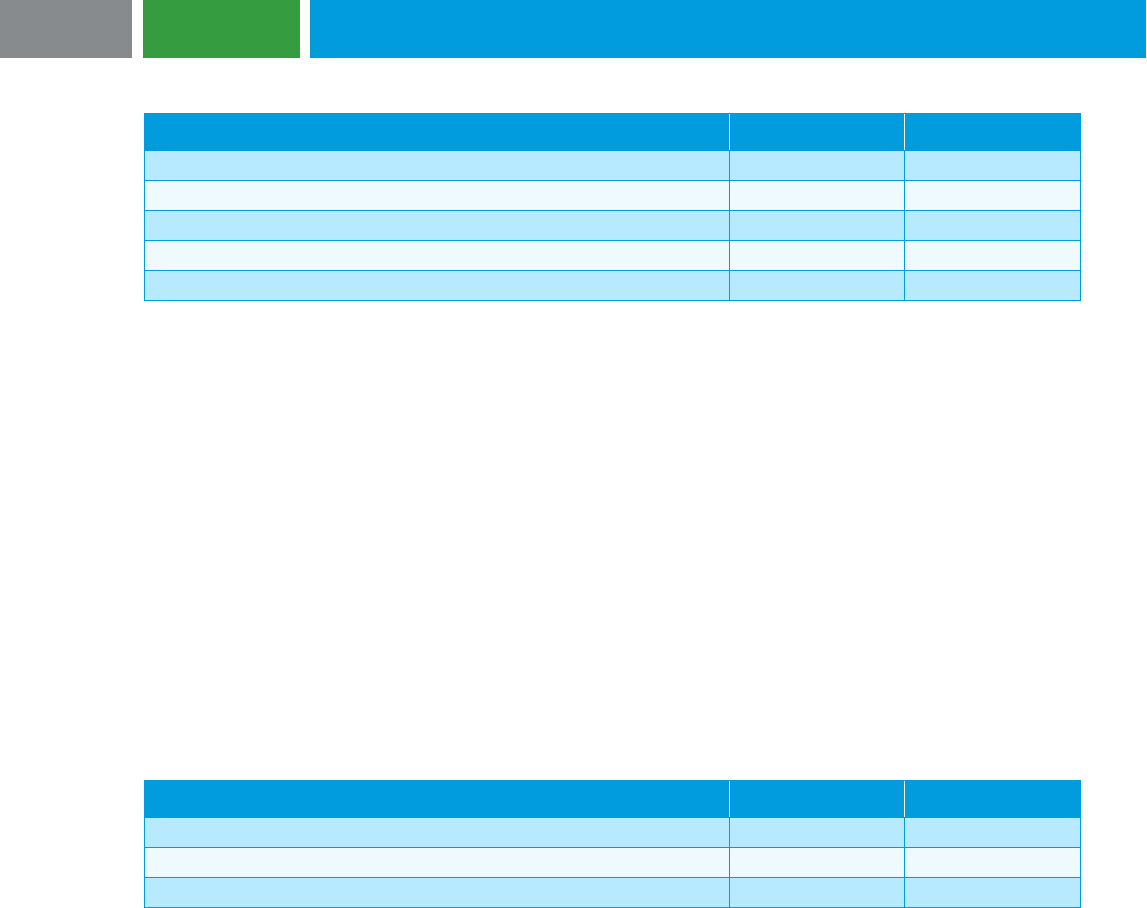
61
JUNE 2023
Borrower records the following journal entry to account for the modification on March 31, 20X3:
Debit
Credit
Cash (Note 1)
$1,900,000
Debt discount
100,000
Legal fees expense
50,000
Debt
$2,000,000
Payable to third party
50,000
Note 1: $2 million incremental borrowings received − $100,000 lender fee paid
Even though the prepayment penalty was included in the 10% cash flow test under the assumption that
the debt was prepaid, Borrower did not actually pay the fee because the debt was not prepaid. As such,
Borrower does not include the fee in this journal entry.
For purposes of accounting for the debt on a going-forward basis, Borrower calculates the effective
interest rate on the changed debt to be approximately 13.8% by using the following inputs in a present
value software tool:
• Compounding period: Annual
• Net carrying amount of the debt on March 31, 20X3: $6,800,969 ($4,900,969 carrying amount of
the debt prior to the modification − $100,000 lender fee recognized in the debt discount in
conjunction with the modification + $2 million of incremental borrowings)
• Interest payments: $910,000 each year starting on March 31, 20X4 and ending on March 31,
20X8 ($7 million principal amount after the changes × 13% stated interest rate after the changes)
• Principal repayment: $7 million on March 31, 20X8 after the changes
Borrower records the following journal entry when it makes the required interest payment on March 31,
20X4:
Debit
Credit
Interest expense (Note 1)
$940,215
Debt discount (Note 2)
$30,215
Cash (Note 3)
910,000
Note 1: $6,800,969 carrying amount of the debt after the modification × 13.8% effective interest rate after the
modification
Note 2: $940,215 interest expense (see Note 1) – $910,000 interest paid (see Note 3)
Note 3: $7 million principal after the modification × 13% stated interest rate after the modification
Commentary
If Borrower had considered the results of the 10% cash flow test under both the assumption that the debt
is prepaid as well as the assumption that it is not prepaid (see Section 2.3.2.1), it may have reached an
inappropriate conclusion that extinguishment accounting should be applied. The effects that a
prepayment option may have on the outcome of applying the 10% cash flow test can be observed by
comparing and contrasting the examples in Example 3.5 and Example 3.8.
The incremental borrowings had no net effect on the changed debt’s cash flows used in the 10% cash
flow test in this example compared to those cash flows in Example 3.5 because both tests assumed the
debt was prepaid. If the debt was not prepayable in this example, the incremental borrowings would have
had a net effect on the changed debt’s cash flows compared to those cash flows in Example 3.5 because

62
JUNE 2023
of the present value effects related to the incremental borrowings in this example being received on
March 31, 20X3 and repaid (with the other $5 million of principal) on March 31, 20X8.
It would be inappropriate in this situation for Borrower to: (a) treat the incremental borrowings as a new
borrowing, (b) allocate the lender fee and third-party costs between the new borrowing and preexisting
borrowing and (c) perform the 10% cash flow test on the preexisting borrowing (i.e., as if there were no
incremental borrowings).
3.7 Changes to prepayable delayed-draw term loan (DDTL) (Section 2.3.2.1)
Facts
Borrower and Lender entered into a DDTL on March 31, 20X1, with the following terms:
• Total DDTL commitment amount is $7 million, of which $5 million was drawn on March 31, 20X1
• Stated interest rate is 10%
• Principal is repayable in one lump sum on March 31, 20X6
• Interest is payable annually in arrears on March 31
• Term is five years
• Prepayment is permitted; however, there is a requirement to pay a $150,000 penalty upon
prepayment
• There are covenants that Borrower must comply with on a quarterly basis
• There is no embedded conversion option
• Commitment fee on undrawn portion of the DDTL is 0.5% of undrawn principal amount and is
payable annually in arrears
Lender charged Borrower a lender fee of $100,000 relating to the drawn portion of the DDTL and
Borrower incurred $50,000 in third-party issuance costs. Borrower’s DDTL is not rated by a credit rating
agency. Borrower has not elected to account for its DDTL using the fair value option. There are no other
outstanding loans with Lender and Lender does not have an equity investment in Borrower. Borrower
recognizes interest expense using the effective interest method (see Section 1.3).
Borrower records the following journal entry on March 31, 20X1:
Debit
Credit
Cash ($5 million principal – $100,000 lender fee)
$4,900,000
Debt discount ($100,000 lender fee + $50,000 debt issuance costs)
150,000
DDTL
$5,000,000
Payable to third party (for debt issuance costs)
50,000
Borrower determines that its effective interest rate for the purpose of recognizing interest expense over
the term of the DDTL is approximately 10.8%. Borrower does not consider the undrawn portion of the
total DDTL commitment in the effective interest rate determination because undrawn DDTL commitments
are analogous to line-of-credit arrangements (see Section 2.4.1).
Borrower pays a commitment fee of $10,000 on the undrawn DDTL on each of March 31, 20X2, and
March 31, 20X3. On March 31, 20X3, Borrower draws the remaining $2 million of credit available under
the DDTL commitment. The debt discount and carrying amount of the debt on March 31, 20X3 are
$99,031 and $6,900,969, respectively, which includes the impact of the additional drawdown under the
DDTL permitted under the terms of the original agreement. Borrower pays interest of $500,000 ($5 million

63
JUNE 2023
principal × 10% stated interest rate) on March 31, 20X3 and determines that it is in compliance with the
DDTL’s covenants as of that date.
Changes are made to the debt on March 31, 20X3.
Due to planned plant expansion, Borrower does not expect to be in compliance with the DDTL’s
covenants as of June 30, 20X3. As such, Borrower negotiates with Lender to change the terms to reset
the DDTL’s covenants so that Borrower is expected to be in compliance as of June 30, 20X3 and
throughout the remaining term of the DDTL. In addition to resetting the DDTL’s covenants, Borrower and
Lender also agree to the following changes on March 31, 20X3:
• Lender provides an incremental commitment of $3 million to Borrower, which is immediately
drawn (which increases the DDTL’s principal amount to $10 million)
• Extend the maturity date to March 31, 20X8
• Increase the stated interest rate to 13%
Borrower must pay a $100,000 fee to Lender relating to the drawn portion of the DDTL as compensation
for executing the changes to the DDTL. In addition, Borrower incurs $50,000 of third-party costs with its
lawyers related to making these changes to the DDTL. The changes to the DDTL do not trigger the
prepayment penalty. Borrower is not experiencing financial difficulties (see Section 2.2.2.1).
Analysis
Borrower first determines that the liability derecognition threshold has not been met because it has not
been relieved of its obligation under the DDTL nor has it been legally released as the primary obligor
under the DDTL.
Borrower next determines that the changes to the DDTL do not meet the definition of a TDR because it is
not experiencing financial difficulties (see Section 2.2.2.1).
Lastly, Borrower determines whether the changed DDTL is substantially different from the original DDTL
by applying the 10% cash flow test (see Section 2.3.2). In doing so, Borrower must determine the present
value of the original DDTL’s remaining cash flows and the present value of the changed DDTL’s cash
flows. Because the DDTL is prepayable, Borrower may need to perform the 10% cash flow test assuming
that the DDTL is prepaid and again assuming that the DDTL is not prepaid.
Borrower believes that the smaller change in cash flows will result when assuming that the DDTL is
prepaid. As such, Borrower first applies the 10% cash flow test under that assumption.
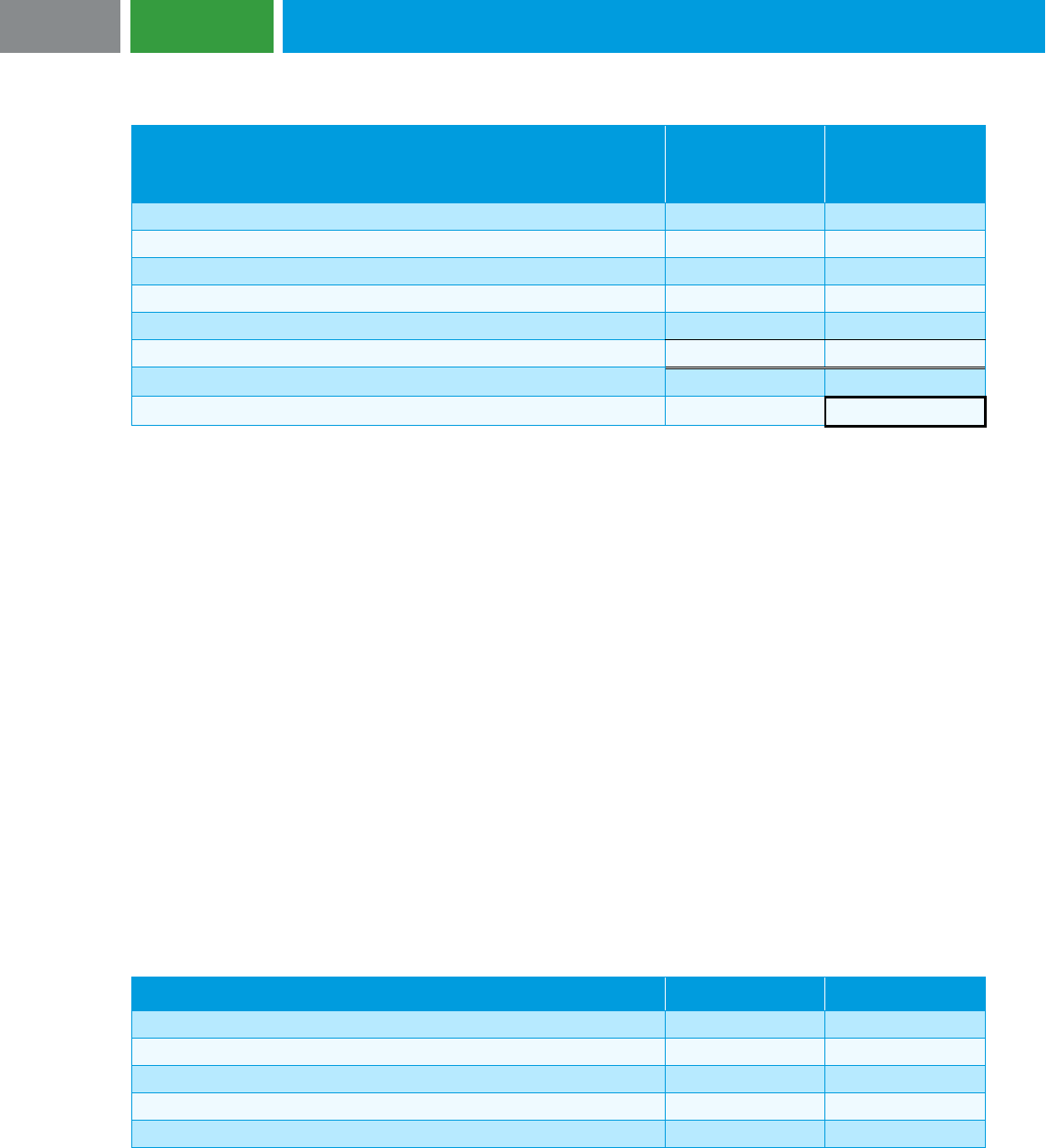
64
JUNE 2023
Following is the 10% cash flow test performed by Borrower assuming the DDTL is prepaid on March 31,
20X3 (the date the DDTL was changed):
Original DDTL’s
remaining cash
flows
Changed
DDTL’s cash
flows
Principal repayment (Note 1)
$7,000,000
$10,000,000
Incremental borrowings (Note 1)
-
(3,000,000)
Lender fee (Note 2)
-
100,000
Interest payments (Note 3)
-
-
Prepayment penalty (Note 4)
150,000
150,000
Present value of the remaining cash flows (Notes 5 and 6)
$7,150,000
$7,250,000
Difference
$100,000
% difference
1.4%
Note 1: The drawdown of the remaining $2 million available under the DDTL immediately prior to modification,
which increases the principal repayment amount to $7 million, is included in the original DDTL’s remaining
cash flows, as such drawdown was pursuant to the DDTL’s original terms. The principal repayment
increased to $10 million as a result of the $3 million of incremental borrowings that were included in the
changes to the DDTL (which are also separately reflected as cash proceeds (i.e., incremental borrowings)
in the test).
Note 2: The lender fee for the original DDTL is not included in the test because the test uses only the original
DDTL’s remaining cash flows, including the additional $2 million borrowed pursuant to the original terms.
Note 3: There are no interest payments reflected in the test because: (a) the modification was made on March 31,
20X3, (b) the interest payment made on March 31, 20X3 represents interest accrued through that date,
and (c) Borrower is assuming that the debt is prepaid on March 31, 20X3. In other words, no incremental
amount of interest would be due upon prepayment of the debt on March 31, 20X3.
Note 4: The prepayment penalty is included in this test because this example assumes that the debt is prepaid.
Note 5: No incremental present value calculations are needed when Borrower assumes the debt is prepaid on the
date the changes are made to the debt.
Note 6: The third-party costs for the original debt and changed debt are not included in the test because the test
should only reflect cash flows between the borrower and the lender (see Section 2.3.2).
Assuming prepayment on the date the debt was changed, the difference between the present value of the
original debt’s remaining cash flows and the present value of the changed debt’s cash flows is $100,000,
or 1.4% of the present value of the original debt’s remaining cash flows. Because the difference is less
than 10% (and an embedded conversion option is not part of the debt before or after the changes), the
changes to the debt should be accounted for as a modification. Borrower does not perform the 10% cash
flow test again assuming that the debt is not prepaid, because only one of the assumptions needs to
result in a change in cash flows of less than 10% to result in modification accounting.
Borrower records the following journal entry to account for the modification on March 31, 20X3:
Debit
Credit
Cash (Note 1)
$2,900,000
Debt discount
100,000
Legal fees expense
50,000
Debt
$3,000,000
Payable to third party
50,000
Note 1: $3 million incremental borrowings received − $100,000 lender fee paid

65
JUNE 2023
Even though the prepayment penalty was included in the 10% cash flow test under the assumption that
the debt was prepaid, Borrower did not actually pay the fee because the debt was not prepaid. As such,
Borrower does not include the fee in this journal entry.
For purposes of accounting for the debt on a going-forward basis, Borrower calculates the effective
interest rate on the changed debt to be approximately 13.6% by using the following inputs in a present
value software tool:
• Compounding period: Annual
• Net carrying amount of the debt on March 31, 20X3: $9,800,969 ($6,900,969 carrying amount of
the debt prior to the modification − $100,000 lender fee recognized in the debt discount in
conjunction with the modification + $3 million of incremental borrowings)
• Interest payments: $1,300,000 each year starting on March 31, 20X4 and ending on March 31,
20X8 ($10 million principal amount ($7 million plus $3 million incremental borrowings) × 13%
stated interest rate after the changes)
• Principal repayment: $10 million on March 31, 20X8 after the changes
Borrower records the following journal entry when it makes the required interest payment on March 31,
20X4:
Debit
Credit
Interest expense (Note 1)
$1,330,366
Debt discount (Note 2)
$30,366
Cash (Note 3)
1,300,000
Note 1: $9,800,969 carrying amount of the DDTL after the modification × 13.6% effective interest rate after the
modification
Note 2: $1,330,366 interest expense (see Note 1) – $1,300,000 interest paid (see Note 3)
Note 3: $10 million principal after the modification × 13% stated interest rate after the modification.
3.8 Changes to prepayable debt with partial repayment of principal (Section 2.3.2.1)
Facts
Borrower and Lender entered into a debt agreement on March 31, 20X1, with the following terms:
• Principal amount is $5 million
• Stated interest rate is 10%
• Principal is repayable in one lump sum on March 31, 20X6
• Interest is payable annually in arrears on March 31
• Term is five years
• Prepayment is permitted; however, there is a requirement to pay a $150,000 penalty upon
prepayment
• There are covenants that Borrower must comply with on a quarterly basis
• There is no embedded conversion option
Lender charged Borrower a lender fee of $100,000 and Borrower incurred $50,000 in third-party debt
issuance costs. Borrower’s debt is not rated by a credit rating agency. Borrower has not elected to
account for its debt using the fair value option. There are no other outstanding loans with Lender and
Lender does not have an equity investment in Borrower. Borrower recognizes interest expense using the
effective interest method (see Section 1.3).

66
JUNE 2023
Borrower records the following journal entry on March 31, 20X1:
Debit
Credit
Cash ($5 million principal – $100,000 lender fee)
$4,900,000
Debt discount ($100,000 lender fee + $50,000 debt issuance costs)
150,000
Debt
$5,000,000
Payable to third party (for debt issuance costs)
50,000
Borrower determines that its effective interest rate for the purpose of recognizing interest expense over
the term of the debt is approximately 10.8%.
Changes are made to the debt on March 31, 20X3. The debt discount and carrying amount of the debt on
March 31, 20X3 before the debt is changed are $99,031 and $4,900,969, respectively.
Borrower pays interest of $500,000 ($5 million principal × 10% stated interest rate) on March 31, 20X3
and determines that it is in compliance with the debt covenants as of that date. However, due to planned
plant expansion, Borrower does not expect to be in compliance with the debt covenants as of June 30,
20X3. As such, Borrower negotiates with Lender to change the terms to reset the debt covenants so that
Borrower is expected to be in compliance as of June 30, 20X3 and throughout the remaining term of the
debt. In addition to resetting the debt covenants, Borrower and Lender also agree to the following
changes on March 31, 20X3:
• Borrower repays $1 million of the principal (which reduces the debt’s principal amount to $4
million)
• Extend the maturity date to March 31, 20X8
• Increase the stated interest rate to 13%
While Lender agreed to waive (in this one instance only) the prepayment penalty that would otherwise be
due from Borrower in connection with its prepayment of $1 million principal, Borrower must pay a
$100,000 fee to Lender as compensation for executing the changes to the debt. In addition, Borrower
incurs $50,000 of third-party costs with its lawyers related to making these changes to the debt. Borrower
is not experiencing financial difficulties (see Section 2.2.2.1).
Analysis
Borrower first determines that the changes to the debt do not meet the liability derecognition threshold
because there is continuing debt with the same lender.
Borrower next determines that the changes to the debt do not meet the definition of a TDR because it is
not experiencing financial difficulties.
Lastly, Borrower determines whether the changed debt is substantially different from the original debt by
applying the 10% cash flow test (see Section 2.3.2). In doing so, Borrower must determine the present
value of the original debt’s remaining cash flows and the present value of the changed debt’s cash flows.
Because the debt is prepayable, Borrower may need to perform the 10% cash flow test assuming that the
debt is prepaid and again assuming that the debt is not prepaid.
Borrower believes that the smaller change in cash flows will result when assuming that the debt is
prepaid. As such, Borrower first applies the 10% cash flow test under that assumption.
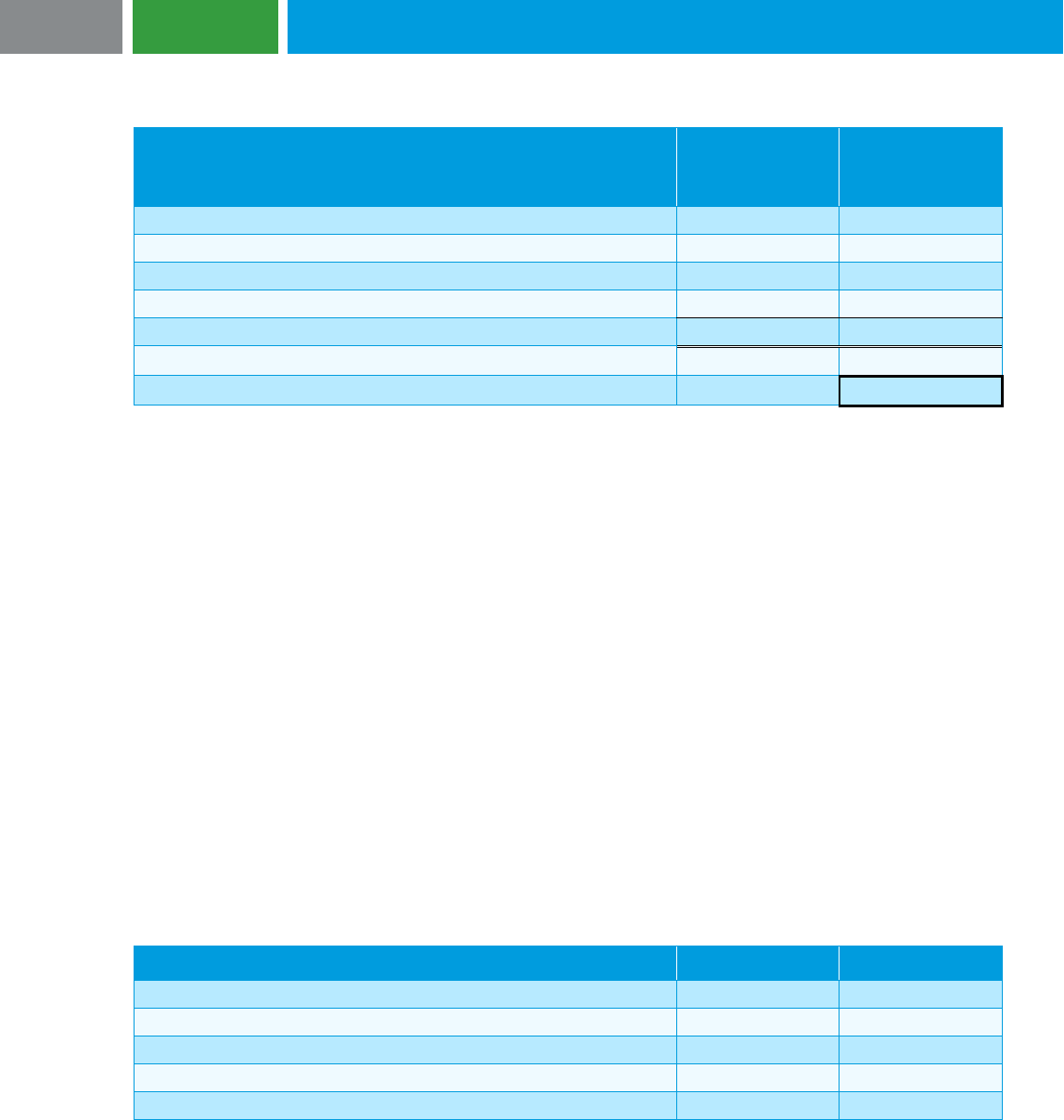
67
JUNE 2023
Following is the 10% cash flow test performed by Borrower assuming the debt is prepaid on March 31,
20X3 (the date the debt was changed):
Original debt’s
remaining cash
flows
Changed debt’s
cash flows
Principal repayment (Note 1)
$5,000,000
$5,000,000
Lender fee (Note 2)
-
100,000
Interest payments (Note 3)
-
-
Prepayment penalty (Note 4)
150,000
150,000
Present value of the remaining cash flows (Notes 5 and 6)
$5,150,000
$5,250,000
Difference
$100,000
% difference
1.9%
Note 1: Although the Borrower prepaid only $1 million in connection with making changes to the debt, for
purposes of applying the 10% cash flow test, it is assumed that the entire principal amount outstanding
prior to the date the changes were made to the debt ($5 million) is prepaid (see Section 2.3.2.1).
Note 2: The lender fee for the original debt is not included in the test because the test uses only the original debt’s
remaining cash flows.
Note 3: There are no interest payments reflected in the test because: (a) the modification was made on March 31,
20X3, (b) the interest payment made on March 31, 20X3 represents interest accrued through that date,
and (c) Borrower is assuming that the debt is prepaid on March 31, 20X3. In other words, no incremental
amount of interest would be due upon prepayment of the debt on March 31, 20X3.
Note 4: The prepayment penalty is included in this test because this example assumes that the debt is prepaid.
While Lender waived the prepayment penalty related to the prepayment of $1 million principal on March
31, 20X3, the prepayment penalty for prepaying the debt in full was not changed.
Note 5: No incremental present value calculations are needed when Borrower assumes the debt is prepaid on the
date the changes are made to the debt.
Note 6: The third-party costs for the original debt and changed debt are not included in the test because the test
should only reflect cash flows between the borrower and the lender (see Section 2.3.2).
Assuming prepayment on the date the debt was changed, the difference between the present value of the
original debt’s remaining cash flows and the present value of the changed debt’s cash flows is $100,000,
or 1.9% of the present value of the original debt’s remaining cash flows. Because the difference is less
than 10% (and an embedded conversion option is not part of the debt before or after the changes), the
changes to the debt should be accounted for as a modification. Borrower does not perform the 10% cash
flow test again assuming that the debt is not prepaid, because only one of the assumptions needs to
result in a change in cash flows of less than 10% to result in modification accounting.
Borrower records the following journal entry to account for the modification on March 31, 20X3:
Debit
Credit
Debt
$1,000,000
Debt discount (Note 1)
100,000
Legal fees expense
50,000
Cash
$1,100,000
Payable to third party
50,000
Note 1: Borrower’s accounting policy when the modification accounting model is applied to debt for which there
was a partial paydown of principal in connection with a prepayment option is to leave the preexisting
unamortized debt discount on its books and continue to amortize it over the term of the changed debt. See
Section 2.3.5 for additional discussion.

68
JUNE 2023
For purposes of accounting for the debt on a going-forward basis, Borrower calculates the effective
interest rate on the changed debt to be approximately 14.5% by using the following inputs in a present
value software tool:
• Compounding period: Annual
• Net carrying amount of the debt on March 31, 20X3: $3,800,969 ($4,900,969 carrying amount of
the debt prior to the modification − $100,000 lender fee recognized in the debt discount in
conjunction with the modification − $1 million principal repayment on March 31, 20X3)
• Interest payments: $520,000 each year starting on March 31, 20X4 and ending on March 31,
20X8 ($4 million principal amount after the changes × 13% stated interest rate after the changes)
• Principal repayment: $4 million after the changes on March 31, 20X8
Borrower records the following journal entry when it makes the required interest payment on March 31,
20X4:
Debit
Credit
Interest expense (Note 1)
$549,834
Debt discount (Note 2)
$29,834
Cash (Note 3)
520,000
Note 1: $3,800,969 carrying amount of the debt after the modification × 14.5% effective interest rate after the
modification
Note 2: $549,834 interest expense (see Note 1) – $520,000 interest paid (see Note 3)
Note 3: $4 million principal after the modification × 13% stated interest rate after the modification
Commentary
For purposes of determining the present value of the changed debt’s cash flows, Borrower included any
amounts exchanged by Borrower and Lender in connection with the changes to the debt. This included
both fees paid to Lender and the principal repaid by Borrower. It is critical that the principal repayment
was included in the present value of the changed debt’s cash outflows. If it was not, Borrower would have
inappropriately accounted for the changes to the debt as an extinguishment instead of a modification.
If Borrower had not realized that it may have to consider the results of the 10% cash flow test under both
the assumption that the debt is prepaid as well as the assumption that it is not prepaid, it may have
reached an inappropriate conclusion that extinguishment accounting should be applied. The effects that a
prepayment option may have on the outcome of applying the 10% cash flow test can be observed by
comparing and contrasting this example with Example 3.5.
The principal repayment had no net effect on the changed debt’s cash flows used in the 10% cash flow
test in this example compared to those cash flows in Example 3.5 because both tests assumed the debt
was prepaid. If the debt was not prepayable in this example, the principal repayment would have had a
net effect on the changed debt’s cash flows compared to those cash flows in Example 3.5 because of the
present value effects related to Borrower repaying $1 million in principal in this example on March 31,
20X3 and repaying the remaining $4 million of principal on March 31, 20X8.
It would be inappropriate in this situation for Borrower to split the debt into two pieces—one with a
principal amount of $1 million (to which the $1 million principal repayment would be assigned and the
extinguishment accounting model applied) and the other with a principal amount of $4 million (on which
the 10% cash flow test would be performed), with the lender fees and third-party costs allocated between
the two pieces and accounted for accordingly. See Section 2.1.2 for a discussion of the unit of account
when there are multiple term loans with one lender.

69
JUNE 2023
3.9 Changes to debt that result in extinguishment accounting (Section 2.3.3)
Facts
Borrower and Lender entered into a debt agreement on March 31, 20X1, with the following terms:
• Principal amount is $5 million
• Stated interest rate is 10%
• Principal is repayable in one lump sum on March 31, 20X6
• Interest is payable annually in arrears on March 31
• Term is five years
• Prepayment is prohibited
• There are covenants that Borrower must comply with on a quarterly basis
• There is no embedded conversion option
Lender charged Borrower a lender fee of $100,000 and Borrower incurred $50,000 in third-party debt
issuance costs. Borrower’s debt is not rated by a credit rating agency. Borrower has not elected to
account for its debt using the fair value option. There are no other outstanding loans with Lender and
Lender does not have an equity investment in Borrower. Borrower recognizes interest expense using the
effective interest method (see Section 1.3).
Borrower records the following journal entry on March 31, 20X1:
Debit
Credit
Cash ($5 million principal – $100,000 lender fee)
$4,900,000
Debt discount ($100,000 lender fee + $50,000 debt issuance costs)
150,000
Debt
$5,000,000
Payable to third party (for debt issuance costs)
50,000
Borrower determines that its effective interest rate for the purpose of recognizing interest expense over
the term of the debt is approximately 10.8%.
Changes are made to the debt on March 31, 20X3. The debt discount and carrying amount of the debt on
March 31, 20X3 before the debt is changed are $99,031 and $4,900,969, respectively.
Borrower pays interest of $500,000 ($5 million principal × 10% stated interest rate) on March 31, 20X3
and determines that it is in compliance with the debt covenants as of that date. However, due to planned
plant expansion, Borrower does not expect to be in compliance with the debt covenants as of June 30,
20X3. As such, Borrower negotiates with Lender to change the terms to reset the debt covenants so that
Borrower is expected to be in compliance as of June 30, 20X3 and throughout the remaining term of the
debt. In addition to resetting the debt covenants, Borrower and Lender also agree to the following
changes on March 31, 20X3:
• Extend the maturity date to March 31, 20X8
• Increase the stated interest rate to 13%
Borrower must pay a $100,000 fee to Lender as compensation for executing the changes to the debt. In
addition, Borrower incurs $50,000 of third-party costs with its lawyers related to making these changes to
the debt. The fair value of the changed debt on March 31, 20X3 is $5 million. Borrower is not
experiencing financial difficulties (see Section 2.2.2.1).

70
JUNE 2023
Analysis
Borrower first determines that the liability derecognition threshold has not been met because it has not
been relieved of its obligation under the debt nor has it been legally released as the primary obligor under
the debt.
Borrower next determines that the changes to the debt do not meet the definition of a TDR because it is
not experiencing financial difficulties.
Lastly, Borrower determines whether the changed debt is substantially different from the original debt by
applying the 10% cash flow test (see Section 2.3.2). In doing so, as prepayment is prohibited, Borrower
must determine the present value of the original debt’s remaining cash flows and the present value of the
changed debt’s cash flows by using the following inputs in a present value software tool:
Original debt’s remaining
cash flows (Note 1)
Changed debt’s cash flows
(Note 1)
Compounding period
Annual
Annual
Lender fee
Note 2
$100,000 on March 31, 20X3
Interest payments
$500,000 per year starting on
March 31, 20X4 and ending on
March 31, 20X6 (Note 3)
$650,000 per year starting on
March 31, 20X4 and ending on
March 31, 20X8 (Note 4)
Principal repayment
$5 million on March 31, 20X6
$5 million on March 31, 20X8
Discount rate
10.8%
10.8%
Note 1: The third-party costs for the original debt and changed debt are not included in the test because the test
should only reflect cash flows between the borrower and the lender (see Section 2.3.2)
Note 2: The lender fee for the original debt is not included in the test because the test uses only the original debt’s
remaining cash flows
Note 3: $5 million principal amount × 10% stated interest rate
Note 4: $5 million principal amount × 13% stated interest rate
Using the inputs for the original debt’s remaining cash flows in a present value software tool, Borrower
calculates the present value of those cash flows to be $4,900,969, which is the same as the carrying
amount of the debt before the changes were made because Borrower recognizes interest expense using
the effective interest rate method. Using the inputs for the changed debt’s remaining cash flows in a
present value software tool, Borrower calculates the present value of those cash flows to be $5,507,076.
Borrower determines that the difference in those cash flows is $606,107, or 12.4%. Because the
difference is more than 10%, the changes to the debt should be accounted for as an extinguishment (see
Section 2.3.2).

71
JUNE 2023
Borrower records the following journal entry (shown on a gross basis for illustration purposes) to account
for the extinguishment on March 31, 20X3:
Debit
Credit
Old debt (principal) (Note 1)
$5,000,000
Loss on extinguishment (Note 2)
199,031
Debt discount (Note 3)
50,000
New Debt (Note 1)
$5,000,000
Payable to third party
$50,000
Payable to Lender
100,000
Debt discount (Note 3)
99,031
Note 1: Under the extinguishment accounting model, the gross amount of the original debt should be
derecognized and the fair value (reacquisition price) of the changed debt should be recognized
Note 2: ($5 million reacquisition price [which is the same as the fair value of the changed debt] − $4,900,969
carrying amount of the debt before the changes) + $100,000 lender fee charged in conjunction with
making the changes to the debt
Note 3: Reflects entries to: (a) derecognize the debt discount for the original debt ($99,031) and (b) recognize the
debt discount for the changed debt ($50,000 of third-party costs incurred to change the debt)
On a going-forward basis, Borrower calculates a new effective interest rate on the debt and recognizes
interest expense and amortizes the debt discount of $50,000 using that rate over the remaining term of
the debt.
Commentary
As illustrated in Example 3.5, if this debt had been prepayable with a penalty of $150,000, Borrower
would have accounted for the changes to the debt as a modification instead of an extinguishment. This
difference underscores the need for a borrower to understand whether its debt is or is not prepayable.
3.10 Changes to prepayable loans in a syndication(Section 2.3.2.1 and Section 2.3.7)
Facts
On January 1, 20X0, Borrower obtained $400 million of financing from a syndicated term loan in which
four banks participated—Banks A, B, C and D. None of the banks should be considered the same lender
for accounting purposes (see Section 1.1), and Borrower has no other outstanding loans with any of the
banks. As part of the syndicated term loan, each bank entered into a loan with Borrower. The principal
amount of each loan varied by lender as follows:
• Bank A: $40 million
• Bank B: $80 million
• Bank C: $120 million
• Bank D: $160 million
The following are the other terms applicable to each of the loans:
• Term is ten years
• Maturity date is December 31, 20X9 (entire principal due at maturity)
• Stated interest rate is 5.0%
• Interest is paid annually in arrears on December 31

72
JUNE 2023
• Prepayment is allowed without penalties
• There is no embedded conversion option in any of the loans
Lender fees and debt issuance costs incurred by Borrower in connection with obtaining the financing
through the syndicated term loan were $4 million. Borrower does not account for the loans at fair value.
Borrower recognizes interest expense using the effective interest method (see Section 1.3).
In late 20X4, Borrower sold a plant for cash in the amount of $100 million. As a result, Borrower re-
assessed its financing needs and decided to modify the syndicated term loan on January 1, 20X5 as
follows:
• Bank B’s loan was paid off in full and Bank B no longer participates in the syndicated term loan or
provides any other financing to Borrower.
• Banks A, C and D remained in the syndicated term loan with no changes to the outstanding
principal amounts of $40 million, $120 million and $160 million, respectively.
• The stated interest rate of each remaining loan was reduced from 5.0% to 4.75%.
• The maturity date of each remaining loan was extended five years from December 31, 20X9 to
December 31, 20Y4.
As a result of these changes, the total borrowings under the modified syndicated term loan were reduced
from $400 million to $320 million. Prior to the modification, there was $2,278,143 in the aggregate in the
debt discount related to the syndicated term loan, which was allocated to each lender using the original
principal amount of each loan relative to the total original principal amount of all the loans (See table
below). Borrower is not experiencing financial difficulties (see Section 2.2.2.1).
Bank A acted as the lead bank in modifying the syndicated term loan and received $1 million in fees from
Borrower. Banks C and D, who acted solely in the capacity of lenders, received fees from Borrower of
$900,000 and $1.2 million, respectively.
Analysis
Borrower first determines that the liability derecognition threshold has been met with respect to Bank B’s
loan because Borrower has been relieved of its obligation under the loan as a result of having repaid the
loan. However, with respect to its loans with Banks A, C and D, Borrower concludes that it has not been
relieved of its obligation under any of those loans nor has it been legally released as the primary obligor
under any of those loans.
Borrower next determines that a TDR has not occurred because it is not experiencing financial difficulties.
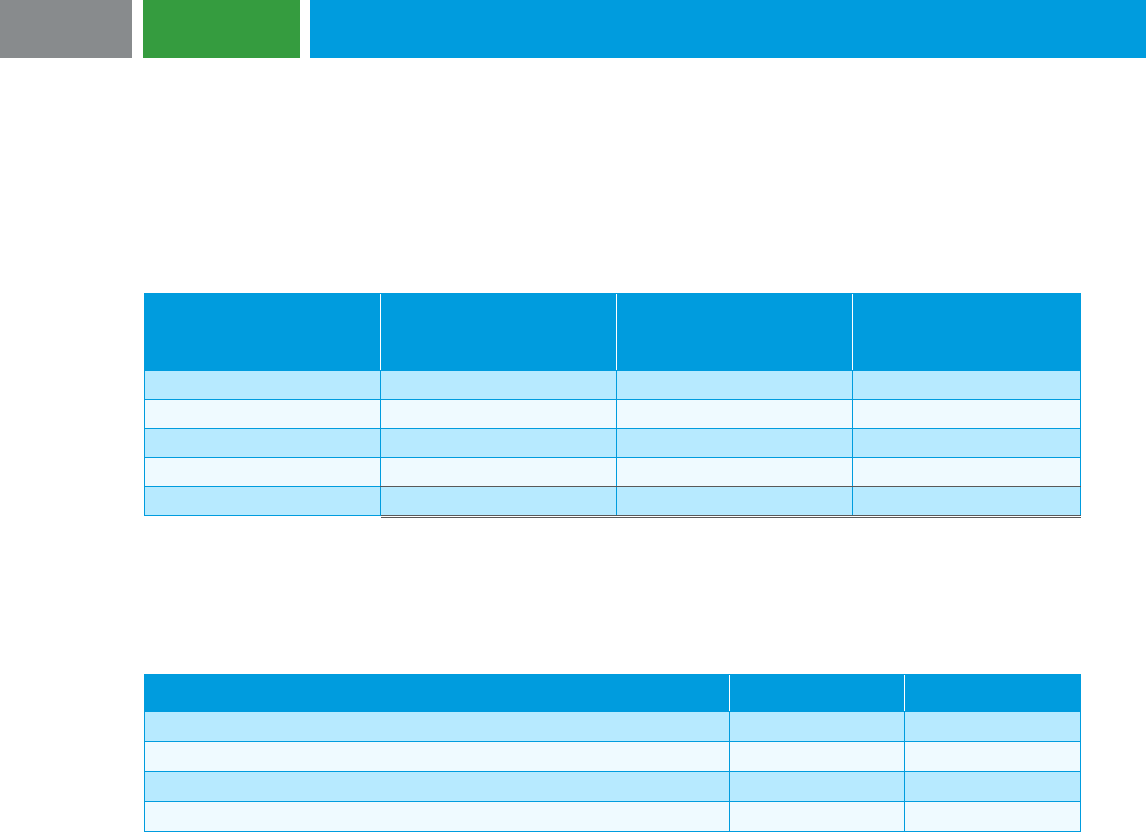
73
JUNE 2023
Accounting for loan with Bank B
Given that the liability derecognition threshold was met with respect to Bank B’s loan when it was paid off
in full, and Bank B is no longer participating in the syndicated term loan or providing any other financing to
Borrower, the extinguishment accounting model is applied to Bank B’s loan. Any unamortized debt
discount related to Bank B’s loan should be derecognized when accounting for its extinguishment.
Borrower allocates the total unamortized debt discount to each of the loans in the original syndicated term
loan, using the original principal amount of each loan relative to the total original principal amount of all
the loans:
Principal
% of total principal
Allocation of
preexisting debt
discount
Bank A
$40,000,000
10%
$227,814
Bank B
80,000,000
20%
455,629
Bank C
120,000,000
30%
683,443
Bank D
160,000,000
40%
911,257
Total
$400,000,000
100%
$2,278,143
None of the fees paid by Borrower to the banks that remained in the modified syndicated term loan
should be allocated to the extinguishment of Bank B’s loan because the repayment of the loan to Bank B
was pursuant to the original terms of the loan.
The following journal entry illustrates the effects that the application of the extinguishment accounting
model to Bank B’s loan has on Borrower’s financial statements:
Debit
Credit
Loss on extinguishment of loan
$455,629
Debt
80,000,000
Cash
$80,000,000
Debt discount
455,629
The loss on extinguishment of the loan should be included as a separate line on the income statement.
Accounting for loans with Banks A, C and D
Borrower must determine whether each modified loan remaining in the syndicated term loan is
substantially different from the preexisting loan by applying the 10% cash flow test to each loan. For the
purpose of applying that test, Borrower must determine the lender fees that should be attributable to each
loan because those fees should be included in the test for each loan.
Given that Bank A is acting as the lead bank with respect to coordinating the changes to the loans
remaining in the syndicated term loan, Borrower must determine how much of the fee charged by Bank A
should be treated as a lender fee versus a third-party cost for accounting purposes. After performing
additional research and analysis related to the fees charged by each bank, Borrower determines the
following:
• Bank C’s and Bank D’s fees ($900,000 and $1.2 million, respectively) represent 0.75% of the
principal amounts of their loans ($120 million and $160 million, respectively). Because Banks C
and D are only acting in the capacity of lenders and would expect a fee commensurate with the
fair value of the service they are providing, Borrower concludes that an equivalent fair-value
based lender fee for Bank A’s loan would be $300,000 ($40 million principal amount × 0.75%).
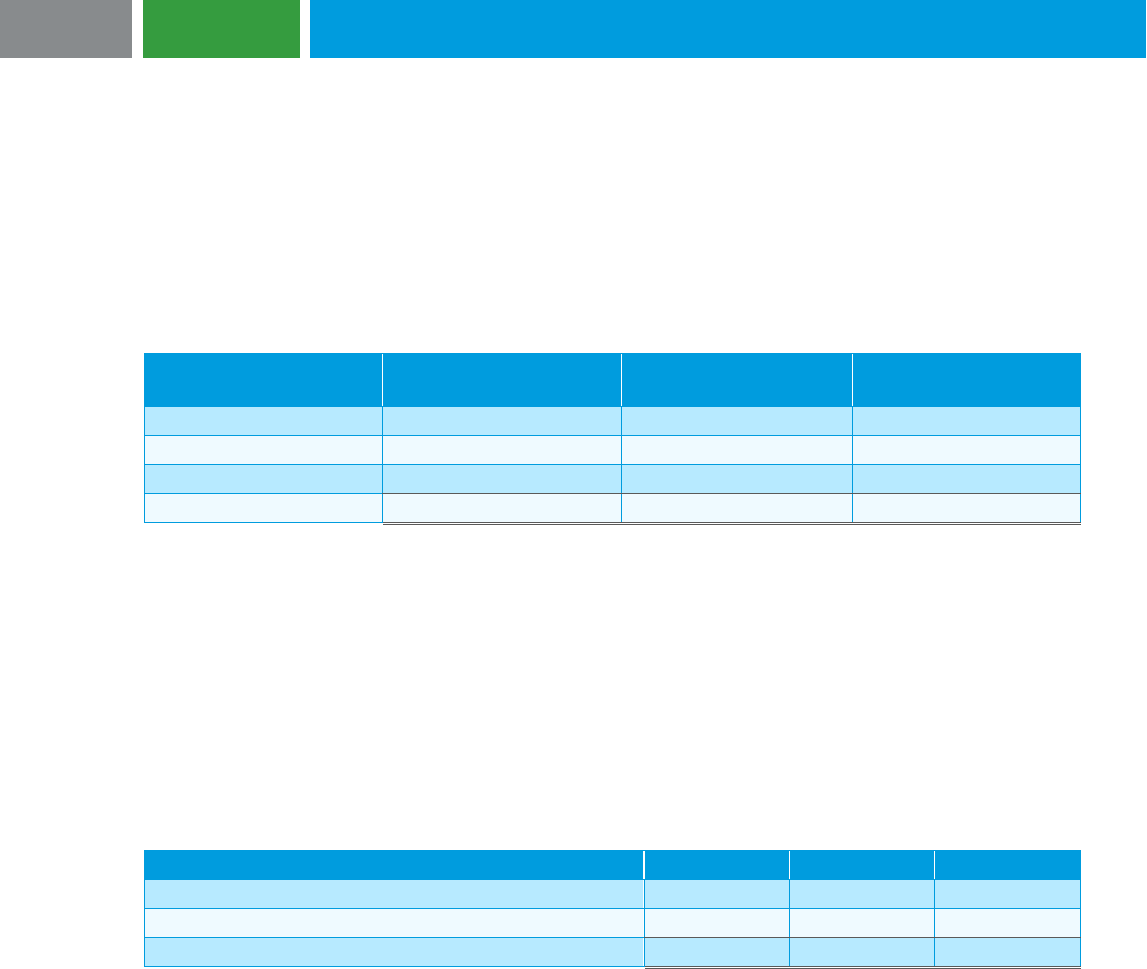
74
JUNE 2023
• With Bank A’s assistance, Borrower determined that $280,000 of Bank A’s $1 million fee
represented out-of-pocket lending costs, such as filing fees, attorney’s fees for modifying the
syndicated term loan and other direct expenses, which should be treated as a lender fee for
accounting purposes because they were incurred in connection with lending activities (See
Section 2.3.5.2). In addition, because the $280,000 of out-of-pocket lending costs relate to the
lending activities of all three banks, they should be allocated to each bank’s loan (for the purpose
of the 10% cash flow test performed for each loan) based on the principal amount of each loan
remaining in the modified syndicated term loan relative to the total principal amount of all the
loans remaining in the modified syndicated term loan. As such, the following amount of out-of-
pocket lending costs should be allocated to each loan remaining in the modified syndicated term
loan for the purpose of applying the 10% cash flow test:
Principal
% of total principal
Allocation of out-of-
pocket lending costs
Bank A
$40,000,000
12.5%
$35,000
Bank C
120,000,000
37.5%
105,000
Bank D
160,000,000
50.0%
140,000
Total
$320,000,000
100%
$280,000
• Borrower determines that the remaining amount of Bank A’s fee of $420,000 ($1 million total fee
− $300,000 imputed lender fee − $280,000 for out-of-pocket lending costs) represents
compensation for the underwriting services Bank A provided in connection with its role as the
lead bank and should be treated as a third-party cost for accounting purposes (see Section
2.3.5.2). Bank A has two roles in the modified syndicated term loan: one role is that of a lender
and the other is that of an underwriter. If Bank A had not acted in the capacity of an underwriter,
and Borrower instead hired a third party to act in that capacity, the fees paid to the third party
would have been treated as a third-party cost. As such, the fees paid to Bank A for the services
provided in its capacity as an underwriter should be treated as a third-party cost for accounting
purposes.
Based on this analysis, Borrower determines that the lender fees associated with each bank’s loan for the
purpose of the 10% cash flow test is as follows:
Bank A
Bank C
Bank D
Lender fee based on 0.75% of principal amount
$300,000
$900,000
$1,200,000
Allocated out-of-pocket lending costs
35,000
105,000
140,000
Total
$335,000
$1,005,000
$1,340,000
Next, Borrower must determine whether the changed loan with each lender is substantially different from
the original loan with each lender by applying the 10% cash flow test (see Section 2.3.2). In doing so,
Borrower must determine the present value of each original loan’s remaining cash flows and the present
value of each changed loan’s cash flows. Because each loan is prepayable, Borrower may need to
perform the 10% cash flow tests assuming that the loans are prepaid and again assuming that the loans
are not prepaid.
Borrower believes that the smaller change in cash flows will result when assuming that the loans are
prepaid. As such, Borrower first applies the 10% cash flow test under that assumption.

75
JUNE 2023
Following are the 10% cash flow tests performed by Borrower assuming the loans are prepaid on January
1, 20X5 (the date the loans were changed):
Bank A
Bank C
Bank D
Original loan’s remaining cash flows,
consisting of principal repayment
$40,000,000
$120,000,000
$160,000,000
Changed loan’s remaining cash flows,
consisting of:
Principal repayment
$40,000,000
$120,000,000
$160,000,000
Lender fees
$335,000
$1,005,000
$1,340,000
Total
$40,335,000
$121,005,000
$161,340,000
Difference
$335,000
$1,005,000
$1,340,000
% difference
0.84%
0.84%
0.84%
Assuming prepayment on the date the debt was changed, the difference between each original loan’s
remaining cash flows and each changed loan’s remaining cash flows is less than 1% of the present value
of each respective original loan’s remaining cash flows. Because the difference is less than 10% (and an
embedded conversion option is not part of any of the loans before or after the changes), the changes to
each of the loans should be accounted for as a modification (see Section 2.3.5). Borrower does not need
to perform the 10% cash flow test assuming that the prepayment option is not exercised, because only
one of the 10% cash flow tests needs to have a change of less than 10% to result in modification
accounting.
Borrower records the following journal entry to account for the modifications to its loans with Banks A, C
and D on January 1, 20X5:
Debit
Credit
Debt discount (Note 1)
$2,680,000
Underwriting expenses (Note 2)
420,000
Payable to Bank A
$3,100,000
Note 1: $2,680,000 is the sum of each bank’s lender fees for accounting purposes ($335,000 for Bank A +
$1,005,000 for Bank C + $1,340,000 for Bank D). See computation above (see Section 2.3.5)
Note 2: $420,000 of Bank A’s fee represents compensation for the underwriting services Bank A provided in
connection with its role as the lead bank and should be treated as a third-party cost for accounting
purposes (see Section 2.3.5.2)
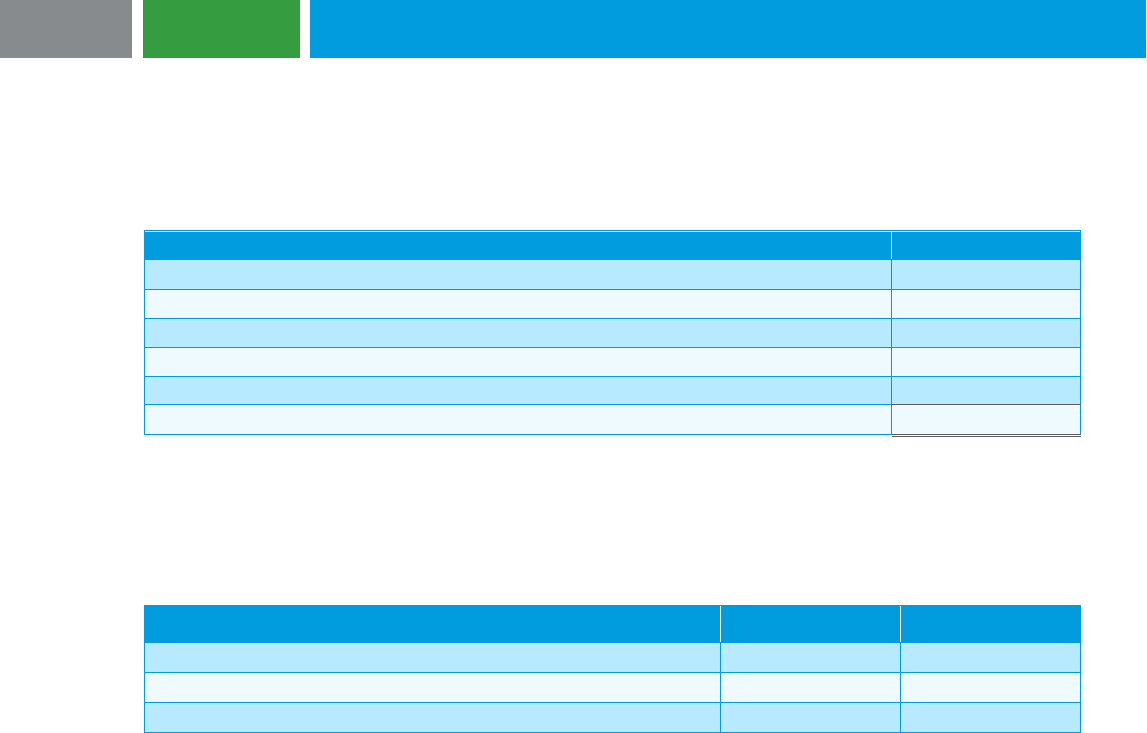
76
JUNE 2023
For the purpose of accounting for the loans on a going-forward basis, Borrower calculates the effective
interest rate on the changed loans to be approximately 4.9% by using the following inputs in a present
value software tool:
• Compounding period: Annual
• Net carrying amount of the loans on January 1, 20X5:
Amount
Gross debt balance prior to the modification
$400,000,000
Debt discount prior to the modification
(2,278,143)
Gross debt balance for Lender B derecognized on January 1, 20X5
(80,000,000)
Debt discount allocated to Lender B and derecognized on January 1, 20X5
455,629
Additional debt discount for lender fees related to the modification
(2,680,000)
Net carrying amount of the loans after the modification
$315,497,486
• Interest payments: $15,200,000 each year starting on December 31, 20X5 and ending on
December 31, 20Y4 ($320 million principal amount × 4.75% stated interest rate)
• Principal repayment: $320 million on December 31, 20Y4
Borrower records the following journal entry when it makes the required interest payment on December
31, 20X5:
Debit
Credit
Interest expense (Note 1)
$15,559,115
Debt discount (Note 2)
$359,115
Cash (Note 3)
15,200,000
Note 1: $315,497,486 carrying amount of the loans after the modification × 4.9% effective interest rate after the
modification
Note 2: $15,559,115 interest expense (see Note 1) – $15,200,000 interest paid (see Note 3)
Note 3: $320 million principal amount after the modification × 4.75% stated interest rate after the modification
Commentary
If Borrower had not appropriately considered the substance of the fees paid to Bank A, the cash flows
used in the 10% cash flow test would have been misstated. In addition, the amount of those fees
recognized as an expense versus additional debt discount would also have been incorrect. In other
words, if Borrower assumed that all amounts paid to Bank A were a lender fee merely because Bank A
was one of the lenders in the modified syndicated term loan, it would have overstated the debt discount
and understated expenses by $420,000. This example further underscores the importance of
understanding the substance of payments to lenders and third-party service providers and accounting for
those payments based on their substance.
Given that the terms of each lender’s loan that remains in the syndicated term loan are the same before
and after the syndicated term loan is modified, the effective interest rate and interest expense can be
calculated in the aggregate for the entire syndicated term loan. In situations where this is not the case,
the effective interest rate and interest expense may need to be calculated individually for each loan.

77
JUNE 2023
3.11 Multiple changes to prepayable debt within a one-year period (Section 2.3.2.1 and
Section 2.3.2.2)
Facts
Borrower and Lender entered into a debt agreement on June 30, 20X0, with the following terms:
• Principal amount is $7 million
• Stated interest rate is 8%
• Principal is repayable in one lump sum on June 30, 20X5
• Interest is payable annually in arrears on June 30
• Term is five years
• There is no embedded conversion option
Lender charged Borrower a lender fee of $150,000 and Borrower incurred $75,000 in third-party debt
issuance costs. The debt agreement indicates that prepayment is permitted. However, there is a
requirement to pay a $100,000 penalty upon prepayment.
Borrower has not elected to account for its debt using the fair value option. There are no other
outstanding loans with Lender.
Borrower calculates an effective interest rate of 8.8% and applies the effective interest method to
recognize interest expense over the term of the debt. Borrower pays interest of $560,000 on June 30,
20X1 and 20X2 (the latter prior to making changes to the debt on that date).
Changes to the debt on June 30, 20X2
Borrower and Lender make the following changes to the debt on June 30, 20X2:
• Extending the maturity date to June 30, 20X7
• Adding incremental borrowings of $2 million (which increases the total principal amount to $9
million)
• Increasing the prepayment penalty to $200,000
Borrower must pay a $250,000 fee to Lender as compensation for executing the changes to the debt.
Borrower incurs $100,000 of third-party costs with its lawyers related to making these changes to the
debt. The changes to the debt do not trigger the prepayment penalty. Borrower is not experiencing
financial difficulties.
Analysis of the changes to the debt on June 30, 20X2
Borrower first determines that the liability derecognition threshold has not been met because it has not
been relieved of its obligation under the debt nor has it been legally released as the primary obligor under
the debt.
Borrower next determines that the changes to the debt do not meet the definition of a TDR because it is
not experiencing financial difficulties.
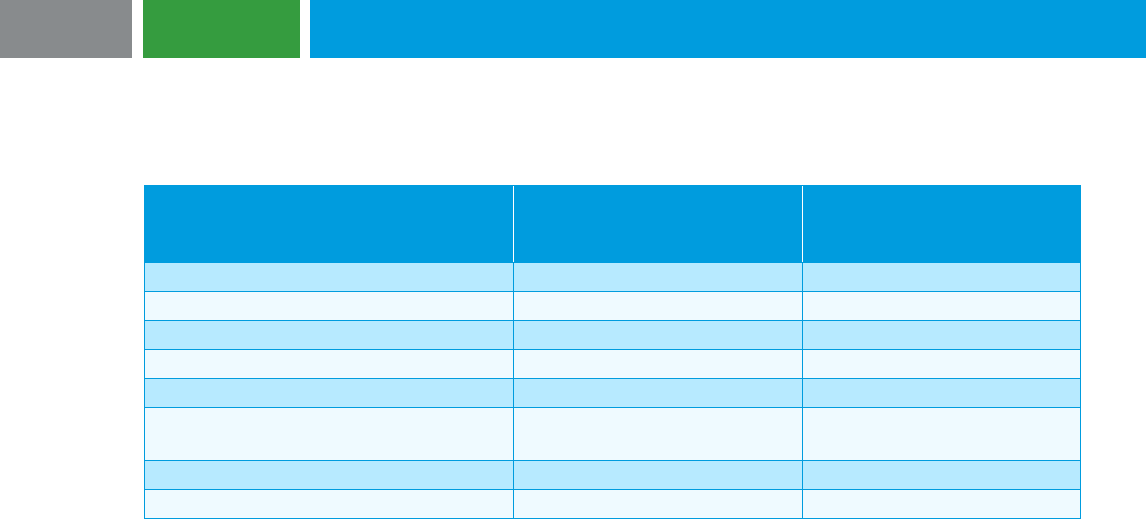
78
JUNE 2023
Assuming that the debt will be prepaid on June 30, 20X2, immediately before the changes to the debt for
the purpose of the preexisting debt’s remaining cash flows and immediately after the changes to the debt
for the purpose of the changed debt’s cash flows, Borrower performs the 10% cash flow test and
determines the percentage change in cash flows as of June 30, 20X2 as follows:
Nature of cash flows
Original debt’s remaining
cash flows as of June 30,
20X2
Changed debt’s cash
flows as of June 30, 20X2
Principal repayment (Note 1)
$7,000,000
$9,000,000
Incremental borrowings (Note 1)
-
($2,000,000)
Lender fee (Note 2)
-
$250,000
Interest payments (Note 3)
-
-
Prepayment penalty (Note 4)
$100,000
$200,000
Present value of the remaining cash
flows (Notes 5 and 6)
$7,100,000
$7,450,000
Difference
$350,000
% difference
4.9%
Note 1: The principal repayment increased to $9 million as a result of the $2 million incremental borrowings that
were included in the changes to the debt (which are also separately reflected as cash proceeds on the
Incremental borrowings line in the test).
Note 2: The lender fee for the original debt is not included in the test because the test uses only the original debt’s
remaining cash flows.
Note 3: There are no interest payments reflected in this test because: (a) the modification was made on June 30,
20X2, (b) the interest payment made on June 30, 20X2 represents interest accrued through that date, and
(c) Borrower is assuming that the debt is prepaid on June 30, 20X2. In other words, no incremental
amount of interest would be due upon prepayment of the debt on June 30, 20X2.
Note 4: The prepayment penalty is included in this test because this example assumes that the debt is prepaid.
Note 5: No incremental present value calculations are needed when Borrower assumes the debt is prepaid on the
date the changes are made to the debt.
Note 6: The third-party costs for the original debt and changed debt are not included in the test because the test
should only reflect cash flows between the borrower and the lender (see Section 2.3.2).
Because the percentage change in cash flows is less than 10%, Borrower concludes that the changes to
the debt on June 30, 20X2 should be accounted for as a modification (see Section 2.3.2). Borrower
defers the lender fees, calculates a new effective interest rate of 9.1% (see Section 1.3) and will
recognize interest expense using the effective interest method over the remaining term of the debt using
that rate. Third-party costs of $100,000 are expensed.
Changes to the debt on March 31, 20X3
Borrower and Lender make the following change to the debt on March 31, 20X3:
• Extending the maturity date of the debt to June 30, 20X9
Borrower must pay a $250,000 fee to Lender as compensation for executing the change to the debt.
Borrower also paid interest of $540,000 ($9 million × 8% × [9 months ÷ 12 months]) to Lender on March
31, 20X3. Borrower incurs $100,000 of third-party costs with its lawyers related to making these changes
to the debt. The changes to the debt do not trigger the prepayment penalty. Borrower is not experiencing
financial difficulties.
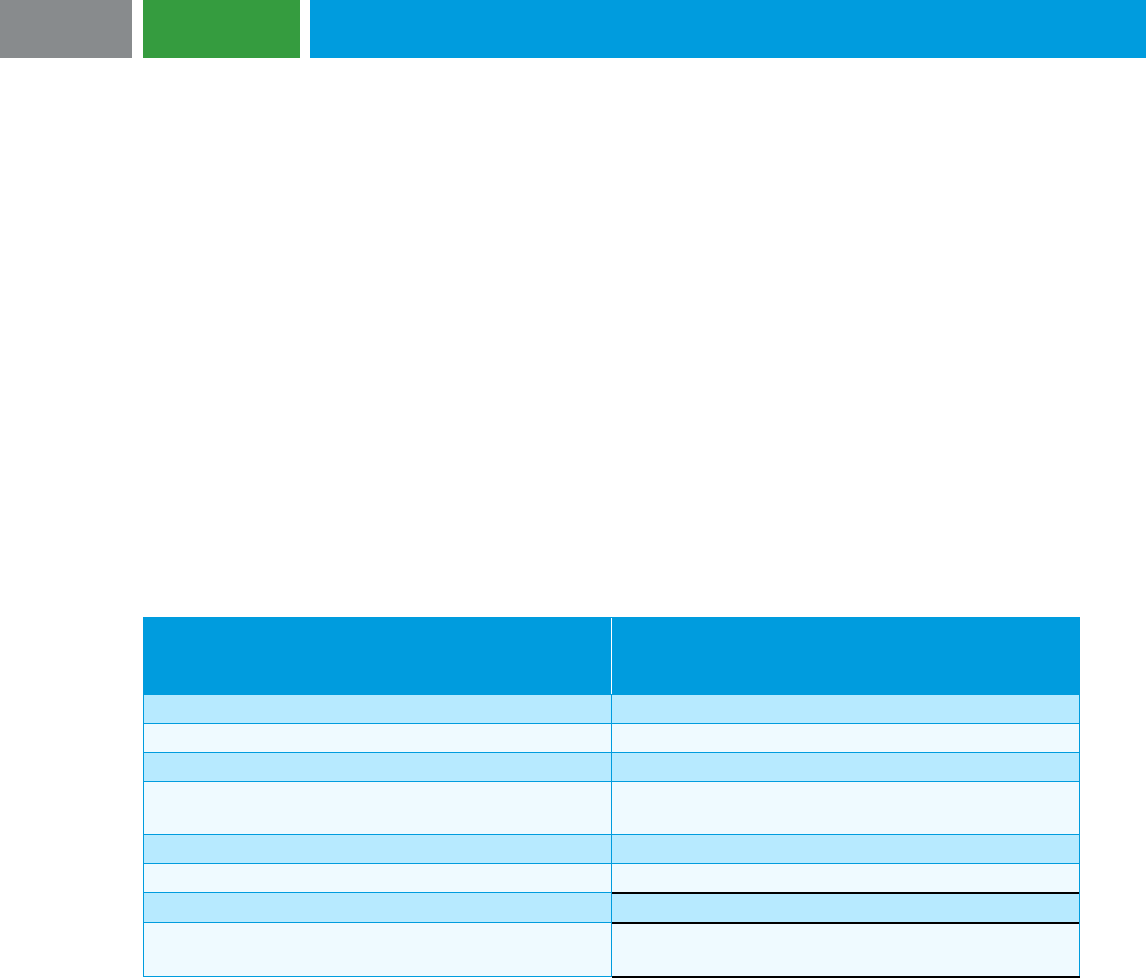
79
JUNE 2023
Analysis of the changes to the debt on March 31, 20X3
Borrower first determines that the liability derecognition threshold has not been met because it has not
been relieved of its obligation under the debt nor has it been legally released as the primary obligor under
the debt.
Borrower next determines that the changes to the debt do not meet the definition of a TDR because it is
not experiencing financial difficulties.
Because the changes made to the debt on March 31, 20X3 occurred within one year of the changes
made to the debt on June 30, 20X2, and the changes made to the debt on June 30, 20X2 were
accounted for as a modification, Borrower must analyze the changes made to the debt within the one-
year period on a cumulative basis for the purpose of performing the 10% cash flow test and determining
how to account for the additional changes made to the debt on March 31, 20X3 (see Section 2.3.2.2).
To analyze the changes to the debt on a cumulative basis, Borrower first performs the test assuming
exercise of the prepayment option (see Section 2.3.2.2). The calculation of the original debt’s remaining
cash flows as of June 30, 20X2 remains consistent with the previous calculation at $7.1 million. However,
the calculation of the changed debt’s cash flows as of June 30, 20X2 must now assume exercise of the
prepayment option right after the last changes were made to the debt on March 31, 20X3 (rather than
right after the first changes were made to the debt on June 30, 20X2). As a result, the present value of
the payments made between June 30, 20X2 and March 31, 20X3 must also be determined as part of this
calculation. To determine the present value of the changed debt’s cash flows, the following inputs in a
present value software tool were used:
Changed debt’s cash flows as of June 30,
20X2 (considering changes from both
modifications)
Compounding period
Annual
Principal repayment (Note 1)
$9 million on March 31, 20X3
Incremental borrowings (Note 1)
$2 million on June 30, 20X2
Lender fees (Note 2)
$250,000 on June 30, 20X2 and $250,000 on
March 31, 20X3
Interest payments (Note 3)
$540,000 on March 31, 20X3
Prepayment penalty (Note 4)
$200,000 on March 31, 20X3
Discount rate (Note 5)
8.8%
Present value of the remaining cash flows (Note
6)
$7,620,952
Note 1: The principal repayment increased to $9 million as a result of the $2 million incremental borrowings that
were included in the changes to the debt (which are also separately reflected as cash proceeds on the
Incremental borrowings line in the test).
Note 2: The lender fee for the original debt is not included in the test because the test uses only the original debt’s
remaining cash flows. The lender fees for the changed debt reflects the lender fees of $250,000 on June
30, 20X2 and March 31, 20X3.
Note 3: $9 million principal amount x 8% stated interest rate from June 30, 20X2 through March 31, 20X3.
Note 4: The prepayment penalty reflected in the terms of the debt after the March 31, 20X3 changes is included in
this test because this example assumes that the debt is prepaid on March 31, 20X3.
Note 5: Section 2.3.2.2 states that in evaluating changes on a cumulative basis, the discount rate used is the
effective interest rate of the debt right before the first changes were made to the debt in the one-year
period on June 30, 20X2.
Note 6: The third-party costs for the original debt and changed debt are not included in the test because the test
should only reflect cash flows between the borrower and the lender (see Section 2.3.2).

80
JUNE 2023
The net change in present value of the remaining cash flows on a cumulative basis is $520,952
($7,620,952 - $7,100,000) or 7.3%. As this is less than a 10% change in cash flows, Borrower accounts
for the changes to the debt on March 31, 20X3 as a modification. Borrower defers the lender fees,
calculates a new effective interest rate (see Section 1.3) after the changes to the debt on March 31, 20X3
and will recognize interest expense using the effective interest method over the remaining term of the
debt using that rate. Third-party costs are expensed.
3.12 Multiple changes to prepayable debt with a prepayment fee based on a percentage
of principal within a one-year period (Section 2.3.2.1 and Section 2.3.2.2)
Facts
Borrower and Lender entered into a debt agreement on June 30, 20X0, with the following terms:
• Principal amount is $7 million
• Stated interest rate is 8%
• Principal is repayable in one lump sum on June 30, 20X5
• Interest is payable annually in arrears on June 30
• Term is five years
• There is no embedded conversion option
Lender charged Borrower a lender fee of $150,000 and Borrower incurred $75,000 in third-party debt
issuance costs. The debt agreement indicates that prepayment is permitted. However, there is a
requirement to pay a penalty of 3% of the outstanding principal upon prepayment.
Borrower has not elected to account for its debt using the fair value option. There are no other
outstanding loans with Lender.
Borrower calculates an effective interest rate of 8.8% and will recognize interest expense using the
effective interest method over the term of the debt using that rate. Borrower pays interest of $560,000 on
June 30, 20X1 and 20X2 (the latter prior to making changes to the debt on that date).
Changes to the debt on June 30, 20X2
Borrower and Lender make the following changes to the debt on June 30, 20X2:
• Extending the maturity date to June 30, 20X7
• Adding incremental borrowings of $2 million (which increases the total principal amount to $9 million)
Borrower must pay a $250,000 fee to Lender as compensation for executing the changes to the debt.
Borrower incurs $100,000 of third-party costs with its lawyers related to making these changes to the
debt. The changes to the debt do not trigger the prepayment penalty. Borrower is not experiencing
financial difficulties.
Analysis of the changes to the debt on June 30, 20X2
Borrower first determines that the liability derecognition threshold has not been met because it has not
been relieved of its obligation under the debt nor has it been legally released as the primary obligor under
the debt.
Borrower next determines that the changes to the debt do not meet the definition of a TDR because it is
not experiencing financial difficulties.
Assuming that the debt will be prepaid on June 30, 20X2, immediately before the changes to the debt for
the purpose of the preexisting debt’s remaining cash flows and immediately after the changes to the debt
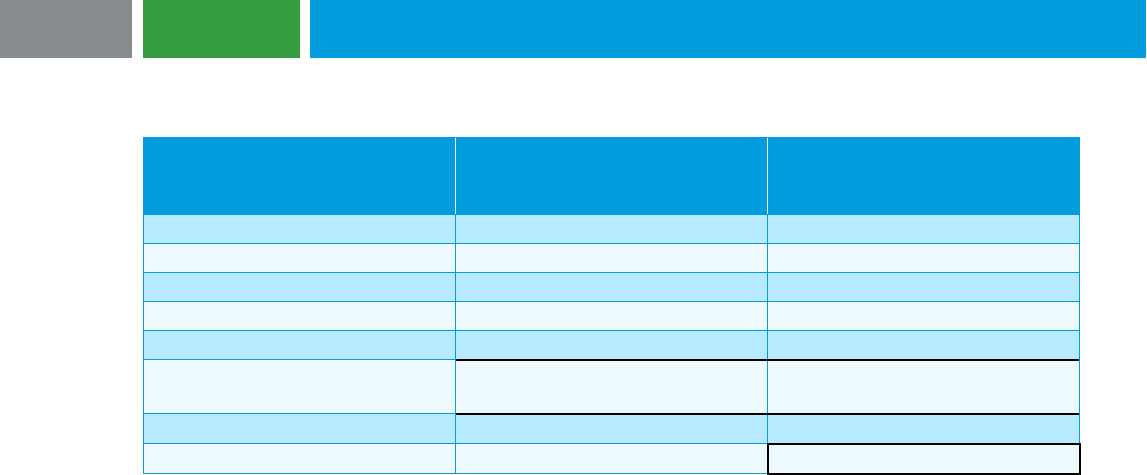
81
JUNE 2023
for the purpose of the changed debt’s cash flows, Borrower performs the 10% cash flow test and
determines the percentage change in cash flows as of June 30, 20X2 as follows:
Nature of cash flows
Original debt’s remaining
cash flows as of June 30,
20X2
Changed debt’s cash flows
as of June 30, 20X2
Principal repayment (Note 1)
$7,000,000
$9,000,000
Incremental borrowings (Note 1)
-
($2,000,000)
Lender fee (Note 2)
-
$250,000
Interest payments (Note 3)
-
-
Prepayment penalty (Note 4)
$210,000
$270,000
Present value of the remaining
cash flows (Notes 5 and 6)
$7,210,000
$7,520,000
Difference
$310,000
% difference
4.3%
Note 1: The principal repayment increased to $9 million as a result of the $2 million incremental borrowings that
were included in the changes to the debt (which are also separately reflected as cash proceeds on the
Incremental borrowings line in the test).
Note 2: The lender fee for the original debt is not included in the test because the test uses only the original debt’s
remaining cash flows.
Note 3: There are no interest payments reflected in this test because: (a) the modification was made on June 30,
20X2, (b) the interest payment made on June 30, 20X2 represents interest accrued through that date, and
(c) Borrower is assuming that the debt is prepaid on June 30, 20X2. In other words, no incremental
amount of interest would be due upon prepayment of the debt on June 30, 20X2.
Note 4: The prepayment penalty is included in this test because this example assumes that the debt is prepaid.
The penalty was calculated based on 3% of the outstanding principal.
Note 5: No incremental present value calculations are needed when Borrower assumes the debt is prepaid on the
date the changes are made to the debt.
Note 6: The third-party costs for the original debt and changed debt are not included in the test because the test
should only reflect cash flows between the borrower and the lender (see Section 2.3.2).
Because the percentage change in cash flows is less than 10%, Borrower concludes that the changes to
the debt on June 30, 20X2 should be accounted for as a modification (see Section 2.3.2). Borrower
defers the lender fees, calculates a new effective interest rate of 9.1% (see Section 1.3) and will
recognize interest expense using the effective interest method over the remaining term of the debt using
that rate. Third-party costs are expensed.
Changes to the debt on March 31, 20X3
Borrower and Lender make the following changes to the debt on March 31, 20X3:
• Extending the maturity date of the debt to June 30, 20X9
• Adding incremental borrowings of $15 million (which increases the total principal amount to $24
million)
Borrower must pay a $250,000 fee to Lender as compensation for executing the changes to the debt.
Borrower also paid interest of $540,000 ($9 million × 8% × [9 months ÷ 12 months]) to Lender on March
31, 20X3. Borrower incurs $100,000 of third-party costs with its lawyers related to making these changes
to the debt. The changes to the debt do not trigger the prepayment penalty. Borrower is not experiencing
financial difficulties.

82
JUNE 2023
Analysis of the changes to the debt on March 31, 20X3
Borrower first determines that the liability derecognition threshold has not been met because it has not
been relieved of its obligation under the debt nor has it been legally released as the primary obligor under
the debt.
Borrower next determines that the changes to the debt do not meet the definition of a TDR because it is
not experiencing financial difficulties.
Because the changes made to the debt on March 31, 20X3 occurred within one year of the changes
made to the debt on June 30, 20X2, and the changes made to the debt on June 30, 20X2 were
accounted for as a modification, Borrower must analyze the changes made to the debt within the one-
year period on a cumulative basis for the purpose of performing the 10% cash flow test and determining
how to account for the additional changes made to the debt on March 31, 20X3 (see Section 2.3.2.2).
To analyze the changes to the debt on a cumulative basis, Borrower first performs the test assuming
exercise of the prepayment option (see Section 2.3.2.2). The calculation of the original debt’s remaining
cash flows as of June 30, 20X2 remains consistent with the previous calculation at $7,210,000. However,
the calculation of the changed debt’s cash flows as of June 30, 20X2 must now assume exercise of the
prepayment option right after the last changes were made to the debt on March 31, 20X3 (rather than
right after the first changes were made to the debt on June 30, 20X2). As a result, the present value of
the payments made between June 30, 20X2 and March 31, 20X3 must also be determined as part of this
calculation. To determine the present value of the changed debt’s cash flows, the following inputs in a
present value software tool were used:
Changed debt’s cash flows as of June 30,
20X2 (considering changes from both
modifications)
Compounding period
Annual
Principal repayment (Note 1)
$24 million on March 31, 20X3
Incremental borrowings (Note 1)
$2 million on June 30, 20X2 and $15 million on
March 31, 20X3
Lender fees (Note 2)
$250,000 on June 30, 20X2 and $250,000 on
March 31, 20X3
Interest payments (Note 3)
$540,000 on March 31, 20X3
Prepayment penalty (Note 4)
$720,000 on March 31, 20X3
Discount rate (Note 5)
8.8%
Present value of the remaining cash flows (Note
6)
$8,108,730
Note 1: The principal repayment increased to $24 million as a result of the $17 million incremental borrowings that
were included in the changes to the debt (which are also separately reflected as cash proceeds on the
Incremental borrowings line in the test).
Note 2: The lender fee for the original debt is not included in the test because the test uses only the original debt’s
remaining cash flows. The lender fees for the changed debt reflects the lender fees of $250,000 on June
30, 20X2 and March 31, 20X3.
Note 3: $9 million principal amount as of June 30, 20X2 x 8% stated interest rate through March 31, 20X3.
Note 4: The prepayment penalty reflected in the terms of the debt after the March 31, 20X3 change is included in
this 10% cash flow test (3% of the outstanding principal of $24 million) because this example assumes the
debt is prepaid on March 31, 20X3.
Note 5: Section 2.3.2.2 states that in evaluating changes on a cumulative basis, the discount rate used is the
effective interest rate of the debt right before the first changes were made to the debt in the one-year
period on June 30, 20X2.
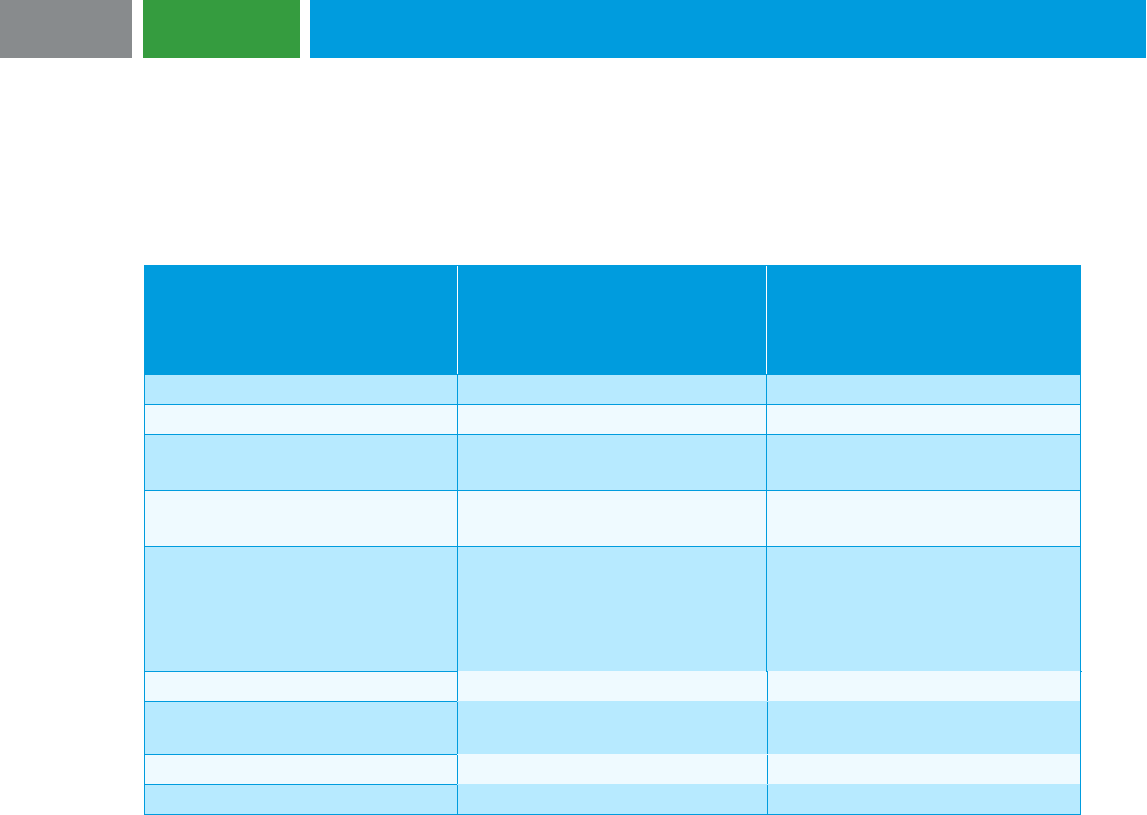
83
JUNE 2023
Note 6: The third-party costs for the original debt and changed debt are not included in the test because the test
should only reflect cash flows between the borrower and the lender (see Section 2.3.2).
The net change in present value of the remaining cash flows on a cumulative basis is $898,730
($8,108,730 - $7,210,000) or 12.5% when exercise of the prepayment option is assumed. As the
percentage change under this assumption is more than 10%, Borrower must also perform the test
assuming the prepayment option in not exercised. The inputs used in a present value tool and the results
are as follows:
Original debt’s remaining
cash flows as of June 30,
20X2 (Note 1)
Changed debt’s cash flows as
of June 30, 20X2 (considering
changes from both
modifications) (Note 1)
Compounding period
Annual
Annual
Principal repayment
$7 million on June 30, 20X5
$24 million on June 30, 20X9
Incremental borrowings
N/A
$2 million on June 30, 20X2 and
$15 million on March 31, 20X3
Lender fees (Note 2)
N/A
$250,000 on June 30, 20X2
$250,000 on March 31, 20X3
Interest payments
$560,000 on June 30, 20X3,
20X4 and 20X5
(Note 3)
$1,020,000 payable on June 30,
20X3, and then $1,920,000 per
year starting on June 30, 20X4
and ending on June 30, 20X9
(Note 4)
Discount rate (Note 5)
8.8%
8.8%
Present value of the remaining
cash flows
$6,853,786
$6,584,424
Difference
$269,362
% difference
3.9%
Note 1: The third-party costs for the original debt and changed debt are not included in the test because the test
should only reflect cash flows between the borrower and the lender.
Note 2: The lender fee for the original debt is not included in the test because the test uses only the original debt’s
remaining cash flows. The lender fees for the changed debt reflects the lender fees of $250,000 on June
30, 20X2 and on March 31, 20X3.
Note 3: $7 million principal amount × 8% stated interest rate.
Note 4: $9 million principal amount × 8% stated interest rate through March 31, 20X3 and $24 million principal
amount as of March 31, 20X3 x 8% stated interest rate through June 30, 20X9. Since interest is paid
annually, the payment on June 30, 20X3 consists of the accrued and unpaid interest as of March 31, 20X3
plus the interest accrued from April 1 through June 30, 20X3.
Note 5: Section 2.3.2.2 states that in evaluating changes on a cumulative basis, the discount rate used is the
effective interest rate of the debt right before the first changes were made to the debt in the one-year
period on June 30, 20X2.
The net change in present value of the remaining cash flows on a cumulative basis is $269,362 or 3.9%
when assuming the prepayment option is not exercised. As this is less than a 10% change in cash flows
in one of the two calculations (i.e., with and without exercise of the prepayment option), Borrower
accounts for the changes to the debt on March 31, 20X3 as a modification. Borrower defers the lender
fees, calculates a new effective interest rate (see Section 1.3) after the changes to the debt on March 31,
20X3 and will recognize interest expense using the effective interest method over the remaining term of
the debt using that rate. Third-party costs are expensed.
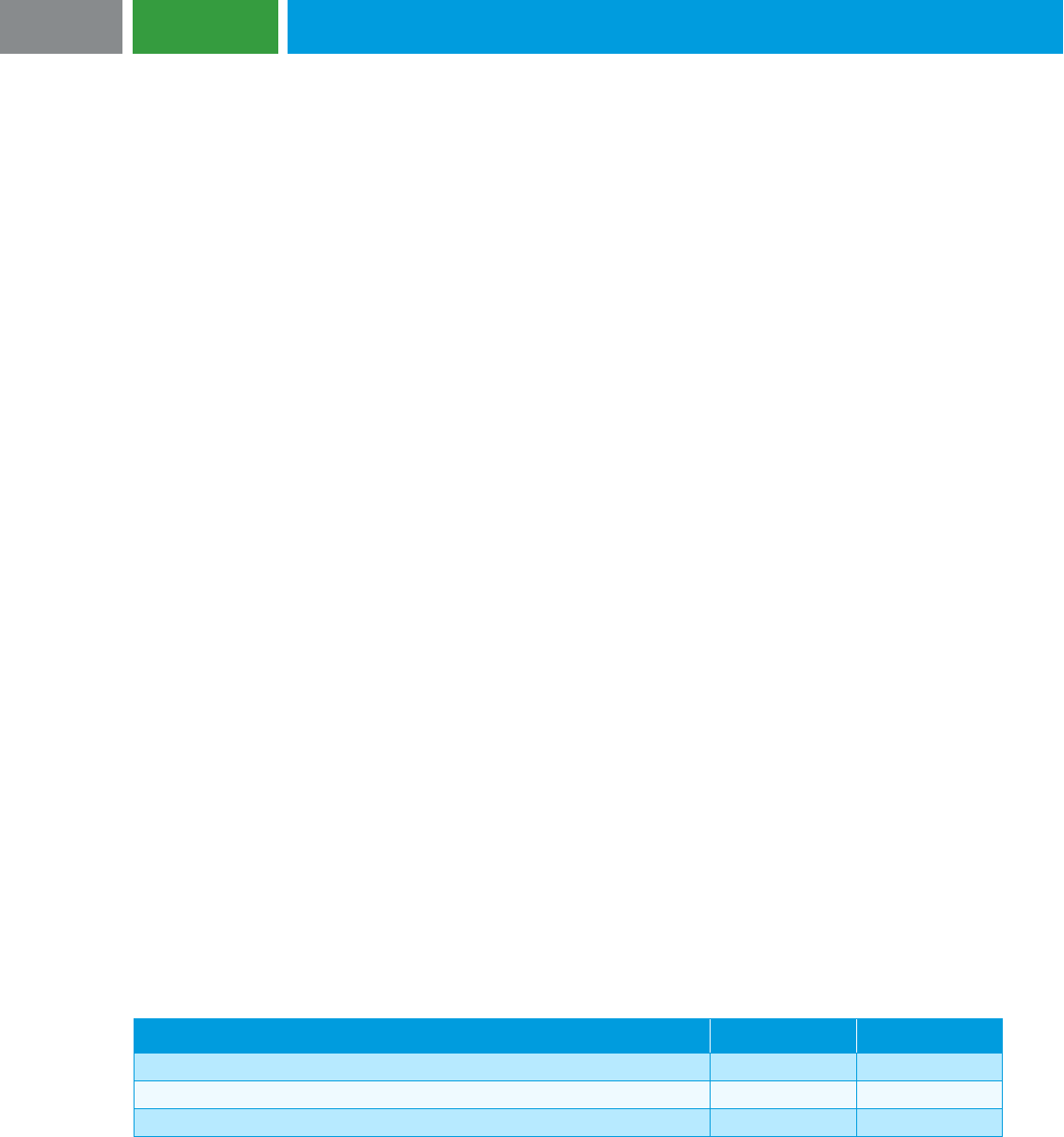
84
JUNE 2023
3.13 Line-of-credit modification with decrease in borrowing capacity (Section 2.4)
Facts
On January 1, 20X1, Borrower obtains a line-of-credit (LOC) arrangement from Lender. The LOC’s term
is three years and the amount available under the LOC (i.e., the commitment amount) is $30 million. For
simplicity, fees for maintaining the LOC and the interest rate paid on amounts borrowed under the LOC
are ignored. Borrower incurs $180,000 of costs (e.g., lender’s fee and legal costs) in connection with
initiating the LOC and recognizes these costs as an asset on the balance sheet (see Section 2.4). These
costs will be amortized over the term of the LOC (i.e., three years).
On January 1, 20X2, Borrower and Lender agree to modify the LOC. The term of the LOC is changed to
three years from the date of the modification (i.e., the term was extended one year) and the amount
available under the LOC is reduced to $15 million from $30 million. To execute this change, Borrower
paid Lender a fee of $100,000 and incurred third-party costs with its lawyers of $40,000. Borrower is not
experiencing financial difficulties.
On January 1, 20X2 (when Borrower and Lender agree to modify the LOC), there are $120,000 of
unamortized deferred costs related to the old LOC. Borrower must determine how it should account for
those remaining deferred costs upon modification of the LOC. In addition, Borrower must determine how
it should account for the costs incurred to execute the changes to the LOC ($140,000 in lender’s fees and
third-party legal costs).
Analysis
Borrower first determines that the liability derecognition threshold has not been met because it has not
been relieved of its obligation under the LOC nor has it been legally released as the primary obligor under
the LOC.
Borrower next determines that the changes to the LOC do not meet the definition of a TDR because it is
not experiencing financial difficulties.
Lastly, Borrower considers whether the borrowing capacity of the LOC increased or decreased.
The borrowing capacity (see Section 2.4) of the old LOC is $60 million ($30 million commitment amount ×
2-year remaining term). The borrowing capacity of the new LOC is $45 million ($15 million commitment
amount × 3-year term). The borrowing capacity under the LOC decreased by $15 million (or 25%) as a
result of the changes agreed to by Borrower and Lender on January 1, 20X2. The unamortized deferred
costs related to the old LOC should be written off in proportion to the decrease in the LOC’s borrowing
capacity. As such, Borrower should write off $30,000 (or 25%) of the $120,000 of unamortized deferred
costs related to the old LOC. Borrower defers and amortizes over three years (the term of the new LOC)
the remaining amount of the unamortized deferred costs ($90,000), as well as the costs incurred to
execute the changes to the LOC (i.e., $140,000 in lender’s fees and third-party legal costs).
The following represents the journal entry that Borrower records on January 1, 20X2 to account for the
unamortized deferred costs related to the old LOC and the costs incurred to execute the changes to the
LOC:
Debit
Credit
Deferred costs – Line of credit (Note 1)
$110,000
Interest expense (portion of unamortized deferred costs written off)
30,000
Cash
$140,000
Note 1: $140,000 of additional deferred costs related to changing the LOC − $30,000 of preexisting unamortized
deferred costs written off due to the decrease in borrowing capacity

85
JUNE 2023
After recording this entry, Borrower has unamortized deferred costs on its books related to the LOC in the
amount of $230,000 ($90,000 of remaining unamortized deferred costs from the original LOC and
$140,000 of deferred costs related to changing the LOC).
Commentary
It is important to note in this example that Borrower appropriately applied the accounting guidance in
determining that the borrowing capacity decreased by 25%. If Borrower had made its determination
based on the decrease in the commitment amount ($30 million decreased to $15 million), it would have
inappropriately concluded that $60,000 of the preexisting unamortized deferred costs related to the old
LOC should have been written off ($120,000 unamortized deferred costs × 50% decrease in the
commitment amount) instead of the correct amount of $30,000.
3.14 Line-of-credit arrangement modification with increase in borrowing capacity(Section
2.4)
Facts
On January 1, 20X1, Borrower obtains a LOC arrangement from Lender. The LOC’s term is three years
and the amount available under the LOC (i.e., the commitment amount) is $30 million. Borrower incurs
$180,000 of costs (e.g., lender’s fee and legal costs) in connection with initiating the LOC and recognizes
these costs as an asset on the balance sheet. These costs will be amortized over the term of the LOC
(i.e., three years).
On January 1, 20X2, Borrower and Lender agree to modify the LOC. The term of the LOC is changed to
three years from the date of the modification (i.e., the term was extended one year) and the amount
available under the LOC is reduced to $24 million from $30 million. To execute this change, Borrower
paid Lender a fee of $100,000 and incurred third-party costs with its lawyers of $40,000. Borrower is not
experiencing financial difficulties.
On January 1, 20X2 (when Borrower and Lender agree to modify the LOC), there are $120,000 of
unamortized deferred costs related to the old LOC. Borrower must determine how it should account for
those remaining deferred costs upon modification of the LOC. In addition, Borrower must determine how
it should account for the costs incurred to execute the changes to the LOC ($140,000 in lender’s fees and
third-party legal costs).
Analysis
Borrower first determines that the liability derecognition threshold has not been met because it has not
been relieved of its obligation under the LOC nor has it been legally released as the primary obligor under
the LOC.
Borrower next determines that the changes to the LOC do not meet the definition of a TDR because it is
not experiencing financial difficulties.
Lastly, Borrower considers whether the borrowing capacity of the LOC increased or decreased.
The borrowing capacity of the old LOC is $60 million ($30 million commitment amount × 2-year remaining
term). The borrowing capacity of the new LOC is $72 million ($24 million commitment amount × 3-year
term). The borrowing capacity under the LOC increased by 20% as a result of the changes agreed to by
Borrower and Lender on January 1, 20X2. As such, the unamortized deferred costs related to the old
LOC are left on Borrower’s books and amortized over the 3-year term of the new LOC (see Section 2.4).
In addition, Borrower also defers and amortizes the costs incurred to execute the changes to the LOC
(i.e., $140,000 in lender’s fees and third-party legal costs) over the three-year term of the new LOC.

86
JUNE 2023
The following represents the journal entry Borrower records on January 1, 20X2 to account for the costs
incurred to execute the changes to the LOC:
Debit
Credit
Deferred costs – Line of credit
$140,000
Cash
$140,000
After recording this entry, Borrower has unamortized deferred costs on its books related to the LOC in the
amount of $260,000 ($120,000 of remaining unamortized deferred costs from the original LOC +
$140,000 of deferred costs related to changing the LOC).
Commentary
It is important to note in this example that Borrower appropriately applied the accounting guidance in
determining that the borrowing capacity increased by 20%. If Borrower had incorrectly made its
determination based on the decrease in the commitment amount ($30 million decreased to $24 million), it
would have inappropriately concluded that $24,000 of the preexisting unamortized deferred costs related
to the old LOC should have been written off ($120,000 unamortized deferred costs × 20% decrease in the
commitment amount) instead of none (the correct amount).
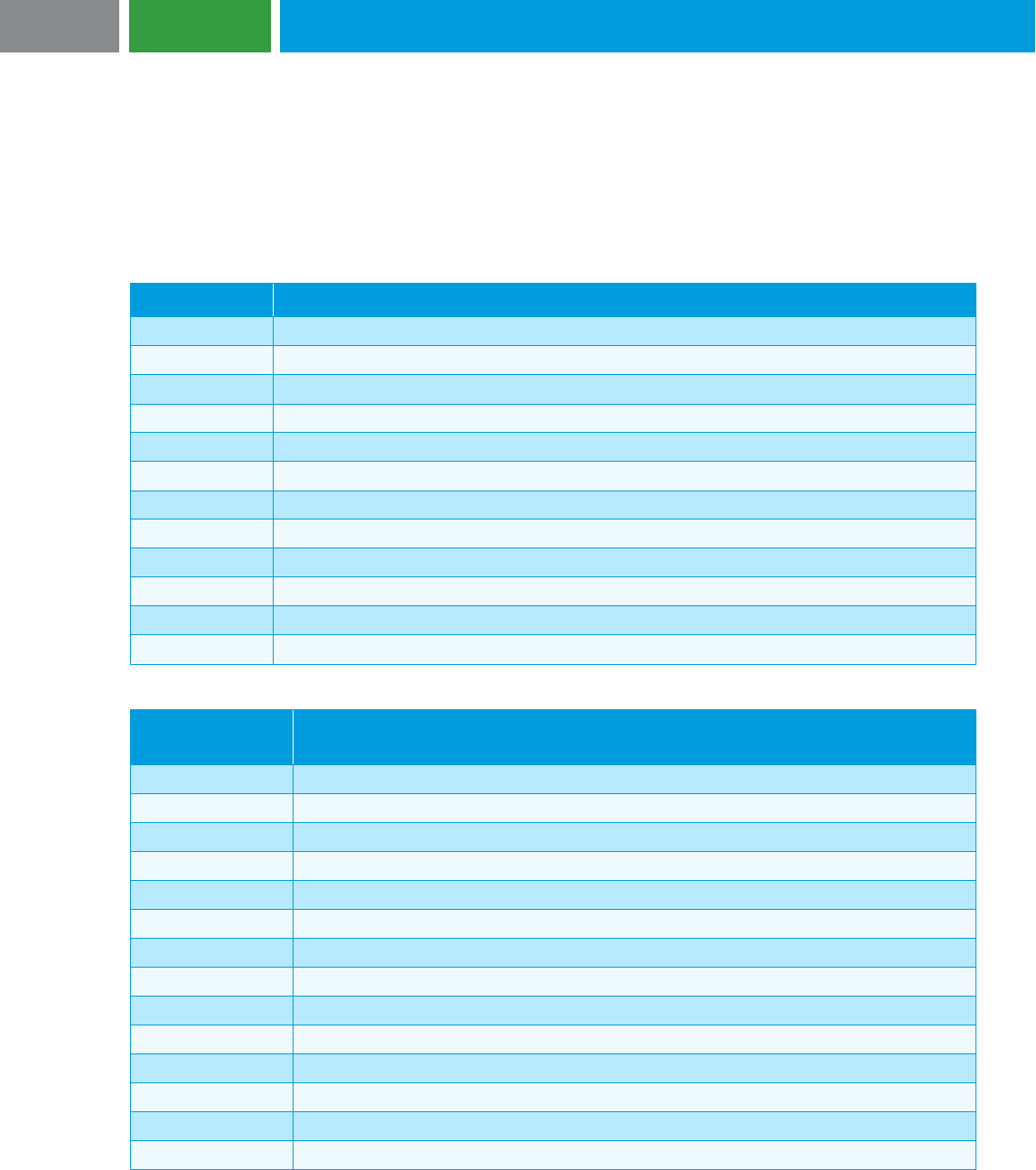
87
JUNE 2023
Appendix A: Acronyms, literature and technical accounting guide and whitepaper
references
Many acronyms are used throughout this guide and numerous references are made to specific topics and
subtopics in the ASC. Provided in this appendix are: (a) an acronym legend, which lists the acronyms
used throughout this guide and their corresponding definitions; (b) a literature listing, which lists the topics
and subtopics referred to throughout this guide and the corresponding titles; and (c) a listing of our other
technical accounting guides and whitepapers referred to throughout this guide.
Acronym legend
Acronym
Definition
ASC
FASB Accounting Standards Codification
ASU
Accounting Standards Update
DDTL
Delayed-draw term loan
FASB
Financial Accounting Standards Board
GAAP
U.S. Generally Accepted Accounting Principles
IASB
International Accounting Standards Board
IFRS
International Financial Reporting Standard
LIBOR
London Interbank Offered Rate
LOC
Line of credit
SEC
Securities and Exchange Commission
SOFR
Secured Overnight Financing Rate
TDR
Troubled Debt Restructuring
Literature Listing
ASC topic or
subtopic
Title
326
Financial Instruments – Credit Losses
360-10
Property, Plant and Equipment – Overall
405-20
Liabilities – Extinguishment of Liabilities
470
Debt
470-10
Debt – Overall
470-20
Debt – Debt with Conversion and Other Options
470-50
Debt – Modifications and Extinguishments
470-60
Debt – Troubled Debt Restructurings by Debtors
505-10
Equity – Overall
815-15
Derivatives and Hedging – Embedded Derivatives
820-10
Fair Value Measurement - Overall
825-10
Financial Instruments – Overall
835-30
Interest – Imputation of Interest
842
Leases
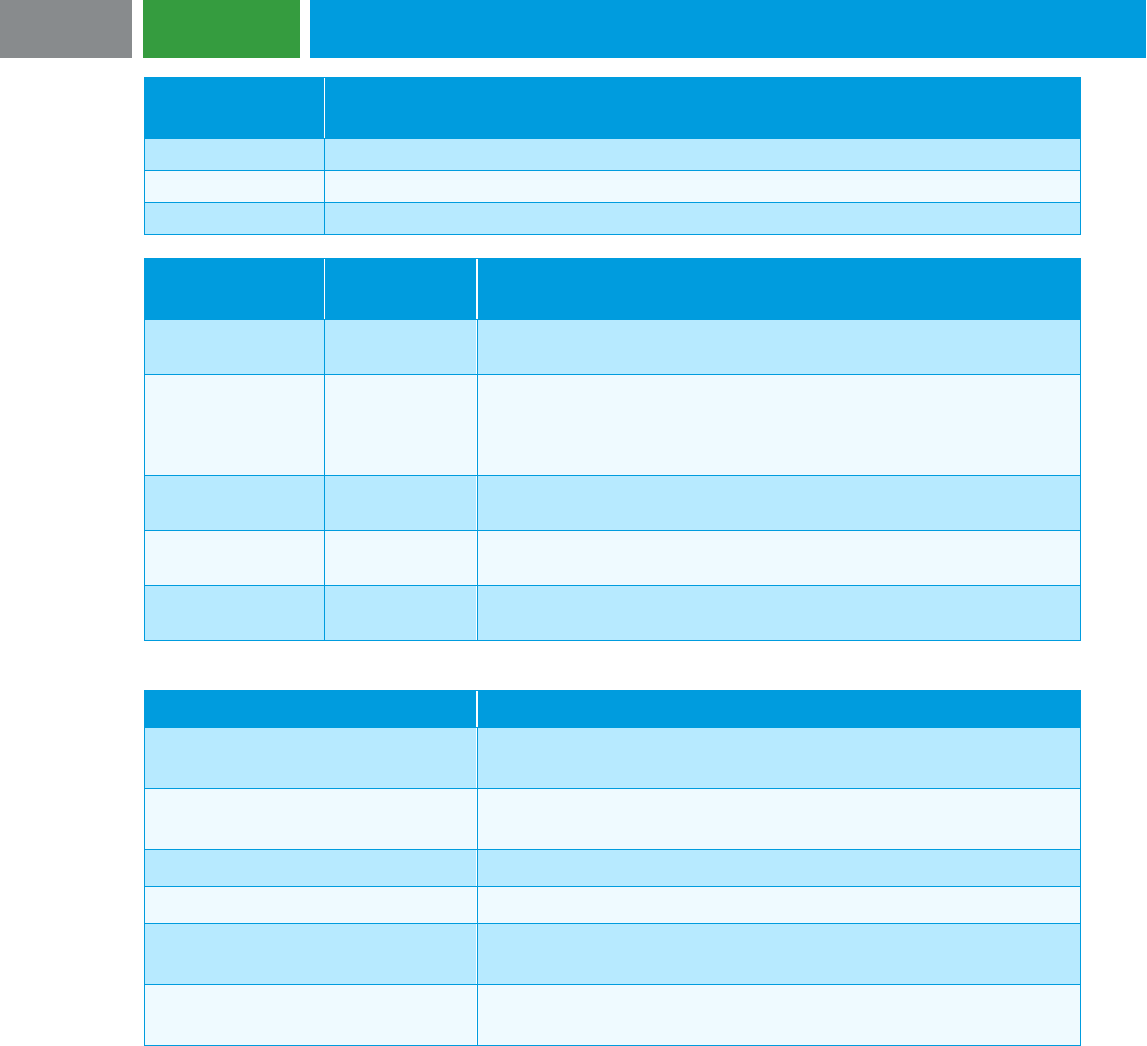
88
JUNE 2023
ASC topic or
subtopic
Title
848
Reference Rate Reform
848-10
Reference Rate Reform – Overall
848-20
Reference Rate Reform – Contract Modifications
Abbreviation
used herein
Responsible
party
Title
ASU 2020-04
FASB
Reference Rate Reform (Topic 848): Facilitation of the Effects of
Reference Rate Reform on Financial Reporting
ASU 2020-06
FASB
Debt—Debt with Conversion and Other Options (Subtopic 470-
20) and Derivatives and Hedging—Contracts in Entity’s Own
Equity (Subtopic 815-40): Accounting for Convertible Instruments
and Contracts in an Entity's Own Equity
ASU 2022-06
FASB
Reference Rate Reform (Topic 848): Deferral of the Sunset Date
of Topic 848
Regulation S-X,
Rule 4.08
SEC
General notes to financial statements
Regulation S-X,
Rule 5.02
SEC
Balance sheets
RSM technical accounting guides and whitepapers
Abbreviation used herein
Title
Our debt and equity guide
A guide to accounting for debt and equity instruments in financing
transactions
Our financial assets guide
A guide to accounting for investments, loans and other
receivables
Our lessee guide
A guide to lessee accounting under ASC 842
Our debt classification whitepaper
Fundamentals of debt classification
Our bankruptcy whitepaper
Accounting and reporting when in reorganization under the
Bankruptcy Code
Our LIBOR whitepaper
Optional accounting expedients can make LIBOR transition
easier
For a complete listing of our technical accounting guides and access to all of our financial reporting
thought leadership, click here.
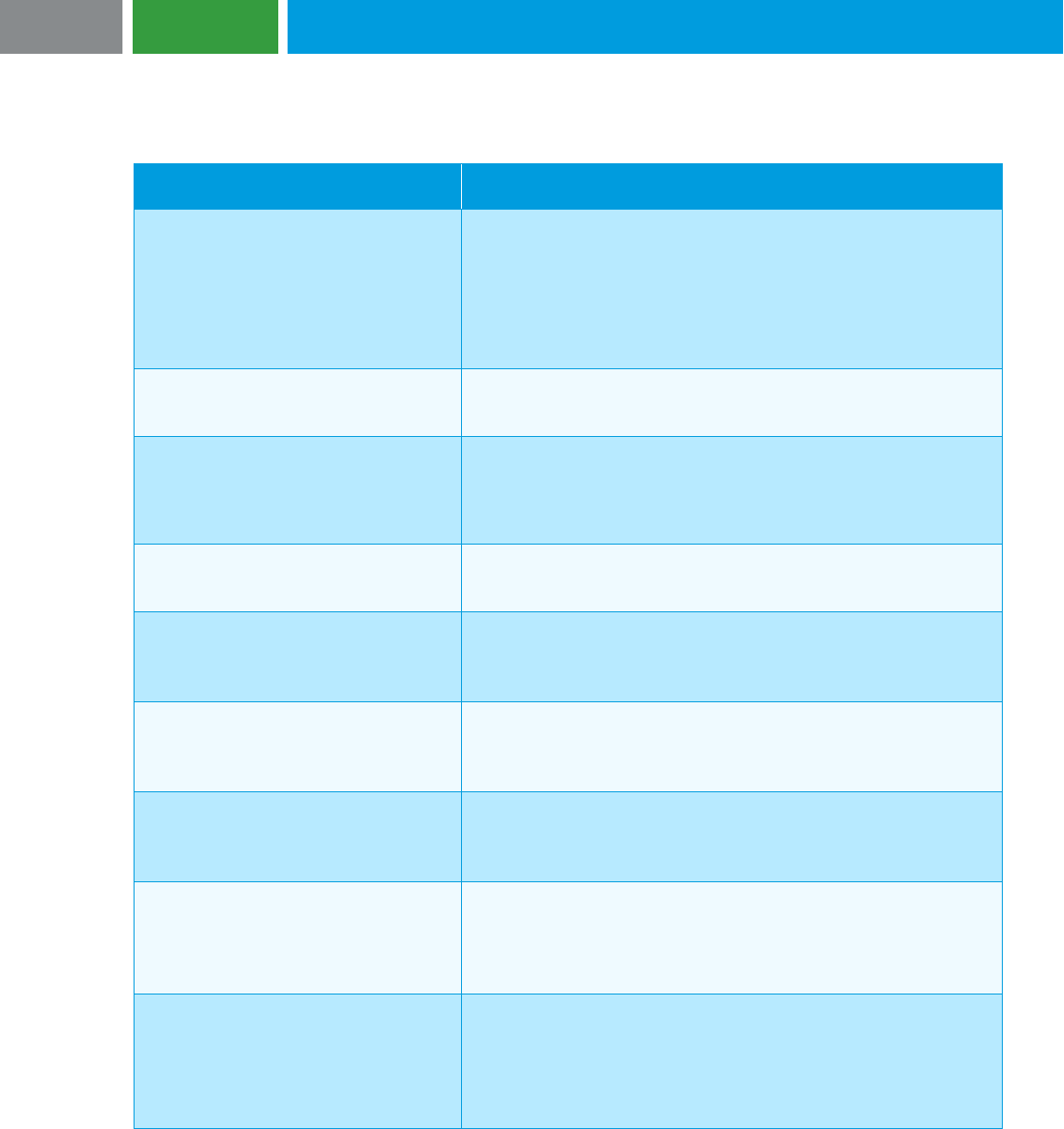
89
JUNE 2023
Appendix B: Definitions
Several terms with specific meaning are used throughout this guide. Those terms and the corresponding
definitions based on the Master Glossary of the Codification are provided in the table that follows.
Term
Definition
Amortized Cost Basis
The amortized cost basis is the amount at which a financing
receivable or investment is originated or acquired, adjusted for
applicable accrued interest, accretion, or amortization of
premium;, discount, and net deferred fees or costs, collection
of cash, writeoffs, foreign exchange, and fair value hedge
accounting adjustments.
Beneficial Conversion Feature
A nondetachable conversion feature that is in the money at the
commitment date. (Superseded by ASU No. 2020-06)
Carrying Amount
For a payable, the face amount increased or decreased by
applicable accrued interest and applicable unamortized
premium, discount, finance charges, or issue costs.
Contract
An agreement between two or more parties that creates
enforceable rights and obligations.
Discount
The difference between the net proceeds, after expense,
received upon issuance of debt and the amount repayable at
its maturity.
Fair Value
The price that would be received to sell an asset or paid to
transfer a liability in an orderly transaction between market
participants at the measurement date.
In-Substance Defeasance
Placement by the debtor of amounts equal to the principal,
interest, and prepayment penalties related to a debt instrument
in an irrevocable trust established for the benefit of the creditor.
Lease
A contract, or part of a contract, that conveys the right to
control the use of identified property, plant, or equipment (an
identified asset) for a period of time in exchange for
consideration.
Lease Modification
A change to the terms and conditions of a contract that results
in a change in the scope of or the consideration for a lease (for
example, a change to the terms and conditions of the contract
that adds or terminates the right to use one or more underlying
assets or extends or shortens the contractual lease term).

90
JUNE 2023
Term
Definition
Line-of-Credit Arrangement
A line-of-credit or revolving-debt arrangement is an agreement
that provides the borrower with the option to make multiple
borrowings up to a specified maximum amount, to repay
portions of previous borrowings, and to then reborrow under
the same contract. Line-of-credit and revolving-debt
arrangements may include both amounts drawn by the debtor
(a debt instrument) and a commitment by the creditor to make
additional amounts available to the debtor under predefined
terms (a loan commitment).
Loan Participation
A transaction in which a single lender makes a large loan to a
borrower and subsequently transfers undivided interests in the
loan to groups of banks or other entities.
Loan Syndication
A transaction in which several lenders share in lending to a
single borrower. Each lender loans a specific amount to the
borrower and has the right to repayment from the borrower, It
is common for groups of lenders to jointly fund those loans
when the amount borrowed is greater than any one lender is
willing to lend.
Market Participants
Buyers and sellers in the principal (or most advantageous)
market for the asset or liability that have all of the following
characteristics:
a. They are independent of each other, that is, they are not
related parties, although the price in a related party
transaction may be used as an input to a fair value
measurement if the reporting entity has evidence that the
transaction was entered into at market terms.
b. They are knowledgeable, having a reasonable
understanding about the asset or liability and the
transaction using all available information, including
information that might be obtained through due diligence
efforts that are usual and customary
c. They are able to enter into a transaction for the asset or
liability
d. They are willing to enter into a transaction for the asset or
liability, that is, they are motivated but not forced or
otherwise compelled to do so.
Net Carrying Amount of Debt
Net carrying amount of debt is the amount due at maturity,
adjusted for unamortized premium, discount and cost of
issuance.

91
JUNE 2023
Term
Definition
Orderly Transaction
A transaction that assumes exposure to the market for a period
before the measurement date to allow for marketing activities
that are usual and customary for transactions involving such
assets or liabilities; it is not a forced transaction (for example, a
forced liquidation or distress sale)
Principal Owners
Owners of record or known beneficial owners of more than 10
percent of the voting interests of the entity.
Public Debt Issuance
A public debt issuance occurs when a debtor issues a number
of identical debt instruments to an underwriter that sells the
debt instruments (in the form of securities) to various investors.
Premium
The excess of the net proceeds, after expense, received upon
issuance of debt over the amount repayable at its maturity.
Reacquisition Price of Debt
The amount paid on extinguishment, including a call premium
and miscellaneous costs of reacquisition. If extinguishment is
achieved by a direct exchange of new securities, the
reacquisition price is the total present value of the new
securities.
Related Parties
Related parties include:
a. Affiliates of the entity
b. Entities for which investments in their equity securities
would be required, absent the election of the fair value
option under the Fair Value Option Subsection of Section
825-10-15, to be accounted for by the equity method by the
investing entity.
c. Trusts for the benefit of employees, such as pension and
profit-sharing trusts that are managed by or under the
trusteeship of management
d. Principal owners of the entity and members of their
immediate families
e. Management of the entity and members of their immediate
families
f. Other parties with which the entity may deal if one party
controls or can significantly influence the management or
operating policies of the other to an extent that one of the
transacting parties might be prevent from fully pursuing its
own separate interests
g. Other parties that can significantly influence the
management or operating policies of the transacting
parties or that have an ownership interest in one of the
transacting parties and can significantly influence the other
to an extent that one or more of the transacting parties

92
JUNE 2023
Term
Definition
might be prevented from fully pursuing its own separate
interests
Troubled Debt Restructuring
A restructuring of a debt constitutes a troubled debt
restructuring if the creditor for economic or legal reasons
related to the debtor’s financial difficulties grants a concession
to the debtor that it would not otherwise consider.

93
JUNE 2023
Appendix C: U.S. GAAP vs. IFRS Comparison
Currently more than 120 countries require or permit the use of IFRS, with a significant number of
countries requiring IFRS (or some form of IFRS) by public entities (as defined by those specific countries).
Of those countries that do not require use of IFRS by public entities, perhaps the most significant is the
U.S. The U.S. SEC requires domestic registrants to apply U.S. GAAP, while foreign private issuers are
allowed to use IFRS as issued by the IASB (the IFRS focused on in this comparison).
Although the SEC currently has no plans to permit the use of IFRS by domestic registrants, IFRS remains
relevant to these entities, as well as private companies in the U.S., given the continued expansion of
IFRS use across the globe. For example, many U.S. companies are part of multinational entities for which
financial statements are prepared in accordance with IFRS or may wish to compare themselves to such
entities. Alternatively, a U.S. company’s business goals might include international expansion through
organic growth or acquisitions. For these and other reasons, it is critical to gain an understanding of the
effects of IFRS on a company’s financial statements.
The guidance related to debt modifications and extinguishments for borrowers in U.S. GAAP is included
in ASC 470. In IFRS, the guidance related to debt modifications and extinguishments is included in IFRS
9, Financial Instruments.
Comparison
The significant differences between U.S. GAAP and IFRS related to debt modifications and
extinguishments for borrowers are as follows:
Debt modifications and extinguishments for borrowers
U.S. GAAP
IFRS
Relevant guidance
ASC 470
IFRS 9
Troubled debt restructurings
If a lender grants a concession to
its borrower as a result of the
borrower’s financial difficulties,
an exchange or modification is
accounted for as a TDR. In a
TDR, the borrower recognizes a
restructuring gain only to the
extent that the carrying amount
of the debt instrument is greater
than the undiscounted future
cash flows of the restructured
debt.
IFRS has no concept equivalent
to a TDR. The same guidance
applies for all exchanges and
modifications. See “Debt
instrument is exchanged or
modified and the transaction is
not a TDR” discussion below.
Debt instrument is
exchanged or modified and
the transaction is not a TDR
When a borrower and lender
exchange debt instruments or
modify a debt instrument and the
exchange or modification is not a
TDR, the borrower accounts for
the exchange or modification as
an extinguishment of the original
debt instrument and a
recognition of a new debt
instrument if the new or modified
When a borrower and lender
exchange debt instruments or
modify a debt instrument, the
borrower accounts for the
exchange or modification as an
extinguishment of the original
debt instrument and a
recognition of a new debt
instrument if the new or modified

94
JUNE 2023
Debt modifications and extinguishments for borrowers
U.S. GAAP
IFRS
debt instrument is substantially
different than the original debt.
The new or modified debt
instrument is considered
substantially different than the
original debt if:
• The present value of the
cash flows of the new or
modified debt instrument
(including the present value
of any fees paid or received
between the borrower and
lender) is at least 10%
different than the present
value of the remaining cash
flows of the original debt;
• The difference between the
fair value of any embedded
conversion feature (not
accounted for as a
derivative) before and after
the exchange or modification
is at least 10% of the
carrying amount of the
original debt; or
• A substantive conversion
option is added or removed.
If the new, modified or the
original debt instrument is
callable or puttable, an entity
performs a separate cash flow
analysis assuming exercise of
the call or put option to
determine if the new or modified
debt instrument is substantially
different than the original debt. If
this analysis produces a change
that is lower than that of the test
above, then this analysis is used.
debt instrument is substantially
different than the original debt.
The new or modified debt
instrument is considered
substantially different than the
original debt if the new or
modified debt instrument’s
discounted cash flows differs
from the present value of the
remaining cash flows of the
original debt instrument by at
least 10%. The cash flows of the
new or modified debt instrument
would include the present value
of any fees paid or received.
Unlike U.S. GAAP, there is no
specific guidance for callable,
puttable or convertible
instruments. However, when
applying the 10% test, entities
typically use expected cash flows
rather than an assumption of
immediate repayment.
If an entity determines that the
new or modified debt
instrument’s discounted cash
flows differs from the present
value of the remaining cash
flows of the original debt
instrument by less than 10%, we
believe that the entity should
perform a qualitative test to
determine if the new or modified
debt instrument is substantially
different than the original debt.
Third-party costs incurred
for the loan modification –
extinguishment accounting
model
Third-party costs are amortized
over the term of the new debt
instrument.
Third-party costs are included in
the gain or loss upon
extinguishment.

95
JUNE 2023
Debt modifications and extinguishments for borrowers
U.S. GAAP
IFRS
Third-party costs incurred
for the loan modification -
modification accounting
model
Third-party costs are expensed
as incurred.
Third-party costs are amortized
over the term of the new debt
instrument.
Gain or loss recognition
when modification
accounting model applies
No gain or loss is recognized. A
new effective interest rate is
established based on the debt
instrument’s carrying amount
and the revised cash flows.
A new carrying amount for the
debt instrument is established
based on the revised cash flows
discounted at the original
effective interest rate. The
difference between the new and
original carrying amount is
accounted for as a gain or loss in
the period that the modification
occurs.
Accounting of fees and costs
paid to lenders and third
parties incurred for the
modification of undrawn line-
of-credit
The accounting of fees and costs
paid to lenders and third parties
is treated as follows when a line-
of-credit arrangement is
modified:
• When the borrowing capacity
increases or remains the
same, all such fees or costs
(including unamortized
deferred costs as well as
costs paid at the time of
modification) are deferred
and amortized over the term
of the new arrangement.
• When the borrowing capacity
decreases, fees or costs paid
at the time of the modification
are deferred and amortized
over the term of the new
arrangement. Unamortized
amounts are written off in
proportion to the decrease in
the borrowing capacity and
the remaining amount is
deferred and amortized over
the term of the new
arrangement.
No specific guidance exists.

96
JUNE 2023
Debt modifications and extinguishments for borrowers
U.S. GAAP
IFRS
Accounting for commitment
fees to obtain a line of credit
Commitment fees incurred to
obtain a line of credit are treated
as assets and ratably amortized
over the contractual term of the
line-of-credit arrangement
regardless of whether there are
any outstanding borrowings on
such arrangement as of the
reporting date. Entities may need
to exercise caution in certain
scenarios where entities draw
down on the line-of-credit
arrangement and do not intend
to repay the related outstanding
balance until its contractual
maturity; such draws may be
treated as a term loan based on
underlying facts and
circumstances.
Entities are required to allocate
the commitment fees incurred to
obtain a line of credit between
the amounts probable of being
drawn down and those that are
not. The fee related to the
amounts expected to be drawn
down is deferred and treated as
a reduction from the related
financial liabilities when such
draw down occurs. However, the
fee related to the amounts not
expected to be drawn down is
treated as a prepayment and
amortized over the contractual
term of the line-of-credit
arrangement.

97
JUNE 2023
Appendix D: Summary of significant changes
The following list summarizes the significant changes to this guide since our last edition:
General
• The overall section numbering was changed from a combination of letters and numbers to numbers
only. For example, former Section A.1 was renumbered to Section 1.1 and former Example C.1 was
renumbered to Example 3.1.
• New examples were added and certain previous examples were renumbered.
• Additional references were made throughout Chapter 1 and Chapter 2 to the relevant examples in
Chapter 3.
Chapter 2 – Relevant literature and general concepts
• Section 2.2.2 was updated to add commentary regarding the order in which we believe the two
questions to determine whether a TDR exists should be answered.
• Section 2.2.3 was updated to clarify the timeframe to consider when evaluating whether multiple
changes to debt should be evaluated on a cumulative basis.
• Section 2.2.4.3 was updated to add further detail to the example illustrating the accounting for a TDR
on debt with a variable interest rate.
• Section 2.3.1.1 was updated to clarify the considerations in determining the unit of account when
there are multiple term loans with the same lender.
• Section 2.3.1.2 was added to address the unit of account for DDTLs.
• Section 2.3.2.1 was updated to address percentage-based prepayment penalties and the potential
impact on the 10% cash flow test.
• Section 2.3.2.2 was updated to clarify the cash flows used for changed debt when there are multiple
changes to the same debt within a one-year period.
• Section 2.3.2.4 was updated to incorporate guidance from ASU 2022-06.
• Section 2.3.3.3 was updated to provide further guidance on the fair value of a liability.
• Section 2.3.5 was updated to address the accounting for unamortized debt discounts, premiums and
issuance costs when a borrower makes a partial paydown of principal that is not part of a loan
modification and for which there was an existing prepayment option.
• Section 2.3.6.1 was added to discuss the accounting for commitment fees on DDTLs.
• Section 2.4 was updated to address the accounting for preexisting unamortized deferred costs related
to line-of-credit arrangements when the borrowing capacity does not change and to incorporate
guidance from ASU 2021-04.
• Section 2.4.1 was added to address the accounting for undrawn DDTL commitments.
• Section 2.6 was updated to clarify the disclosure requirements for both public and private entities.
Chapter 3 – Examples
• Example 3.7 is a new example to illustrate changes to a prepayable DDTL.
• Former Example C.7, Example C.8 and Example C.9 are now Example 3.8, Example 3.9 and
Example 3.10, respectively.
• Example 3.11 (former Example C.10) was updated to clarify the cash flows used for the changed debt
after the second modification.
• Example 3.12 is a new example to illustrate multiple changes to prepayable debt with a prepayment
fee based on a percentage of principal within a one-year period.
• Former Examples C.11 and Example C.12 are now Example 3.13 and Example 3.14, respectively.

98
JUNE 2023
Appendices
• Appendix A was added as a reference tool for the acronyms, literature and technical accounting guide
and whitepaper references used in the guide.
• Appendix B was added to include certain definitions used in the guide.
• Appendix C was added to address U.S. GAAP vs. IFRS differences relating to a borrower’s
accounting for debt modifications and extinguishments.

+1 800 274 3978
rsmus.com
This document contains general information, may be based on authorities that are subject to
change, and is not a substitute for professional advice or services. This document does not
constitute audit, tax, consulting, business, financial, investment, legal or other professional advice,
and you should consult a qualified professional advisor before taking any action based on the
information herein. RSM US LLP, its affiliates and related entities are not responsible for any loss
resulting from or relating to reliance on this document by any person. Internal Revenue Service rules
require us to inform you that this communication may be deemed a solicitation to provide tax
services. This communication is being sent to individuals who have subscribed to receive it or who
we believe would have an interest in the topics discussed.
RSM US LLP is a limited liability partnership and the U.S. member firm of RSM International, a
global network of independent audit, tax and consulting firms. The member firms of RSM
International collaborate to provide services to global clients, but are separate and distinct legal
entities that cannot obligate each other. Each member firm is responsible only for its own acts and
omissions, and not those of any other party. Visit rsmus.com/aboutus for more information regarding
RSM US LLP and RSM International.
RSM, the RSM logo and the power of being understood are registered trademarks of RSM
International Association.
© 2023 RSM US LLP. All Rights Reserved.
